Forums
- Forums
- Axis And Allies Forum
- General Discussion
- Aviation News
Aviation News
Post a reply
- Go to Previous topic
- Go to Next topic
- Go to Welcome
- Go to Introduce Yourself
- Go to General Discussion
- Go to Screenshots, Images and Videos
- Go to Off topic
- Go to Works in Progress
- Go to Skinning Tips / Tutorials
- Go to Skin Requests
- Go to IJAAF Library
- Go to Luftwaffe Library
- Go to RAF Library
- Go to USAAF / USN Library
- Go to Misc Library
- Go to The Ops Room
- Go to Made in Germany
- Go to Campaigns and Missions
- Go to Works in Progress
- Go to Juri's Air-Raid Shelter
- Go to Campaigns and Missions
- Go to Works in Progress
- Go to Skinpacks
- Go to External Projects Discussion
- Go to Books & Resources
-
 Main AdminA CH-53K King Stallion assigned to Marine Operational Test and Evaluation Squadron (VMX) 1 prepares to land at Marine Corps Auxiliary Landing Field Bogue, North Carolina, Oct. 20, 2021. The CH-53K King Stallion will replace the CH-53E Super Stallion, which has served the Marine Corps for 40 years, and will transport Marines, heavy equipment, and supplies during ship-to-shore movement in support of amphibious assault and subsequent operations ashore. (U.S. Marine Corps photo by Lance Cpl. Elias E. Pimentel III)
Main AdminA CH-53K King Stallion assigned to Marine Operational Test and Evaluation Squadron (VMX) 1 prepares to land at Marine Corps Auxiliary Landing Field Bogue, North Carolina, Oct. 20, 2021. The CH-53K King Stallion will replace the CH-53E Super Stallion, which has served the Marine Corps for 40 years, and will transport Marines, heavy equipment, and supplies during ship-to-shore movement in support of amphibious assault and subsequent operations ashore. (U.S. Marine Corps photo by Lance Cpl. Elias E. Pimentel III)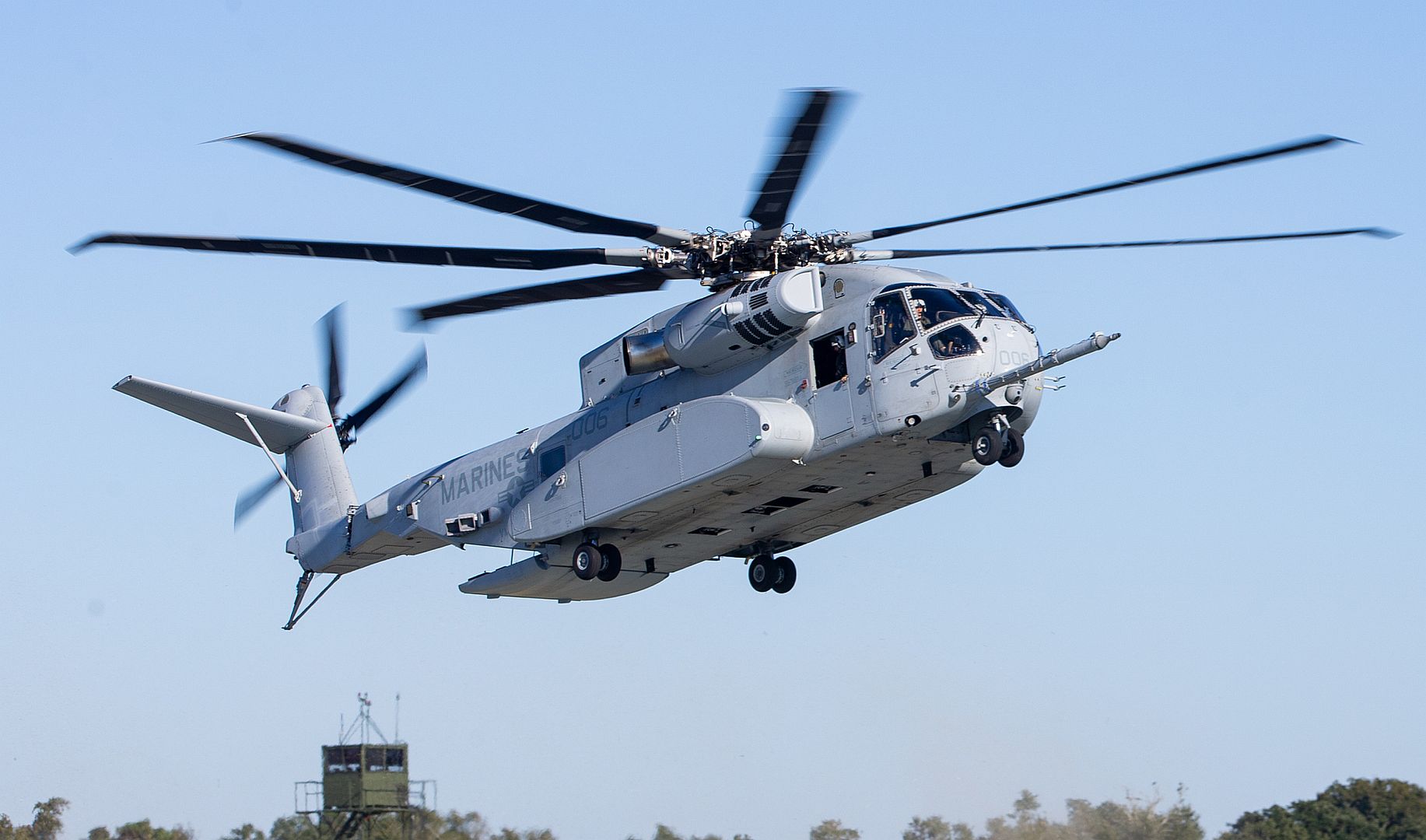
ARABIAN GULF (Oct. 19, 2021) Sailors and Marines park an AV-8B Harrier attached to Marine Attack Squadron (VMA) 214, 11th Marine Expeditionary Unit (MEU), on the flight deck of the amphibious assault ship USS Essex (LHD 2) during flight operations, Oct. 19. Essex and the 11th MEU are deployed to the U.S. 5th Fleet area of operations in support of naval operations to ensure maritime stability and security in the Central Region, connecting the Mediterranean and the Pacific through the western Indian Ocean and three strategic choke points. (U.S. Navy photo by Mass Communication Specialist 3rd Class Isaak Martinez)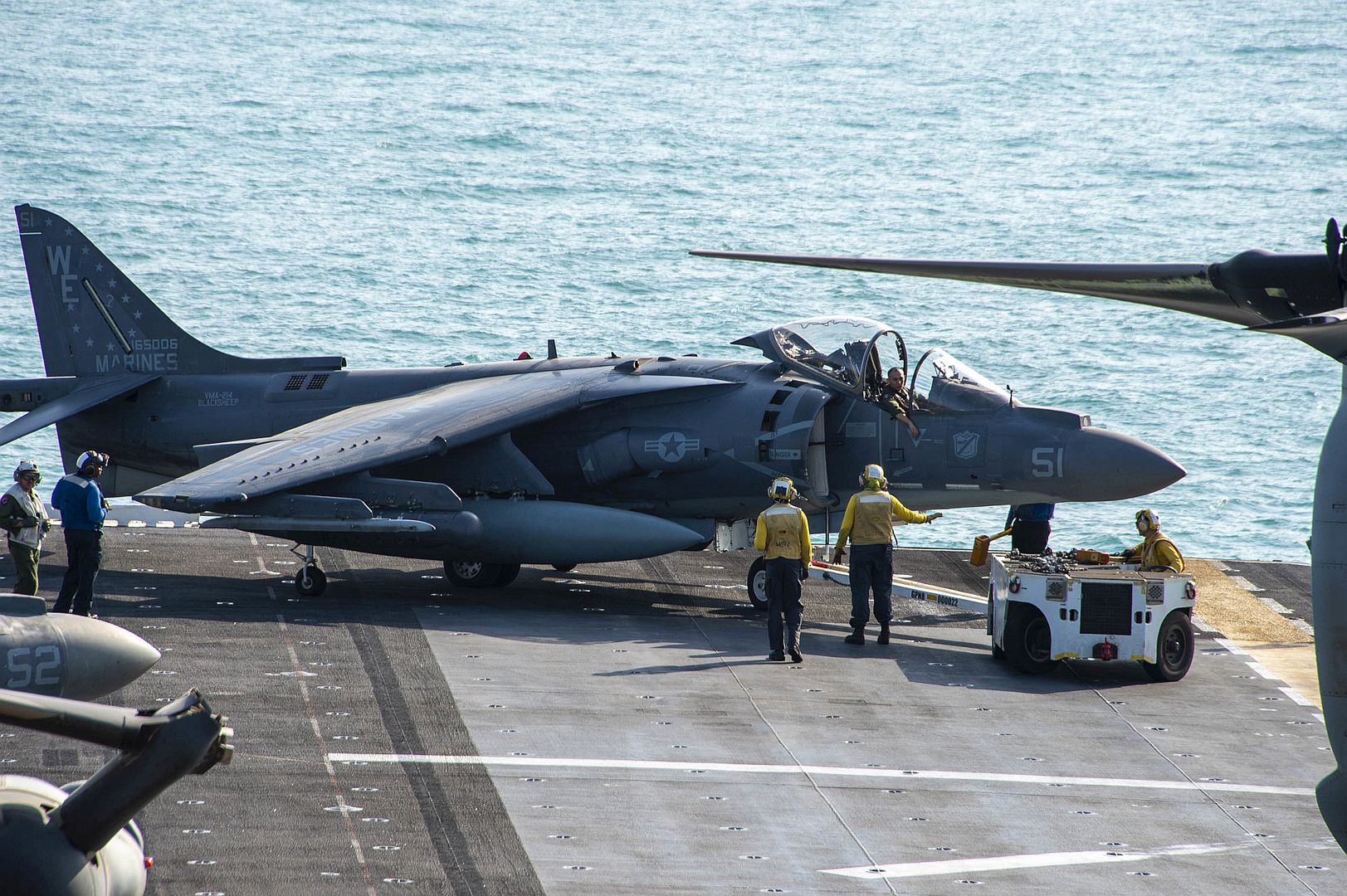
A Romanian F-16 Fighting Falcon lands at Borcea Air Base, Romania, Oct. 20, 2021, during operation Castle Forge. Castle Forge simulates deployment and dispersal tactics for U.S. Air Force units while training alongside Greek, Bulgarian and Romanian Air Force counterparts (U.S. Air Force photos by Capt. Andrew Layton).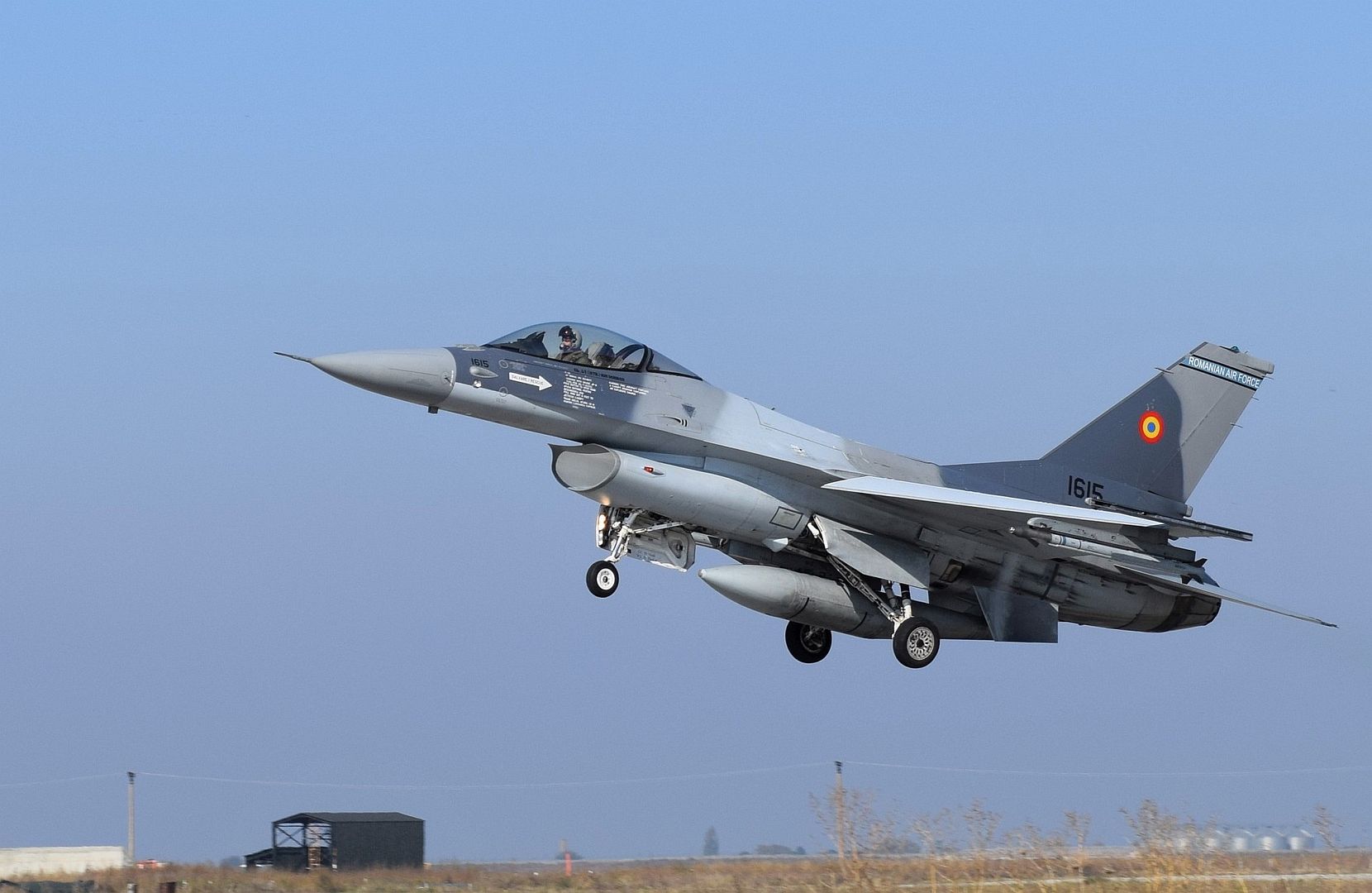
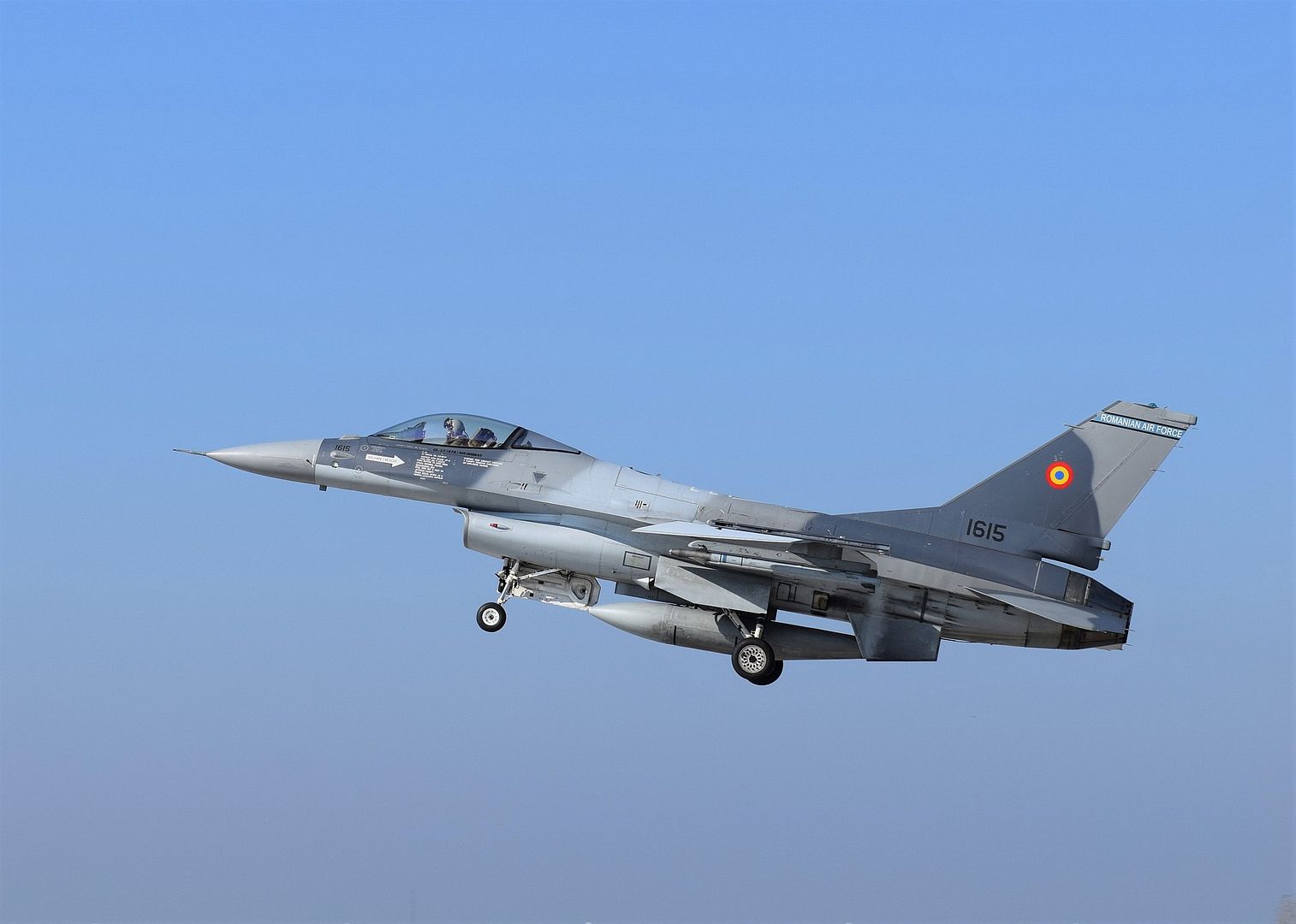
A U.S. F-15E Strike Eagle from the 336th Fighter Squadron, 4th Fighter Wing, Seymour Johnson Air Force Base, North Carolina, taxis at Borcea Air Base, Romania, Oct. 20, 2021, during operation Castle Forge. Castle Forge’s central objective is to provide a partnership-focused environment and affirm U.S. commitment to NATO allies in the Black Sea region (U.S. Air Force photo by Capt. Andrew Layton).
355th FS accepts four more F-35s
An F-35A Lightning II assigned to the 355th Fighter Squadron (FS) taxis on the runway on Eielson Air Force Base, Alaska, Oct. 19, 2021. Also known as the ‘Fighting Falcons’, the 355th FS is one of Eielson’s two combat-coded F-35A squadrons. (U.S. Air Force photo by Airman 1st Class Jose Miguel T. Tamondong)
A B-1B Lancer assigned to the 9th Expeditionary Bomb Squadron takes off at RAF Fairford, United Kingdom, to conduct a Bomber Task Force Europe mission, Oct. 19, 2021. Two B-1s executed a counter maritime mission while integrating with NATO allies and partner forces to enhance interoperability and provide training opportunities to U.S. bomber aircrew deployed to the theater. (U.S. Air Force photos by Senior Airman Colin Hollowell)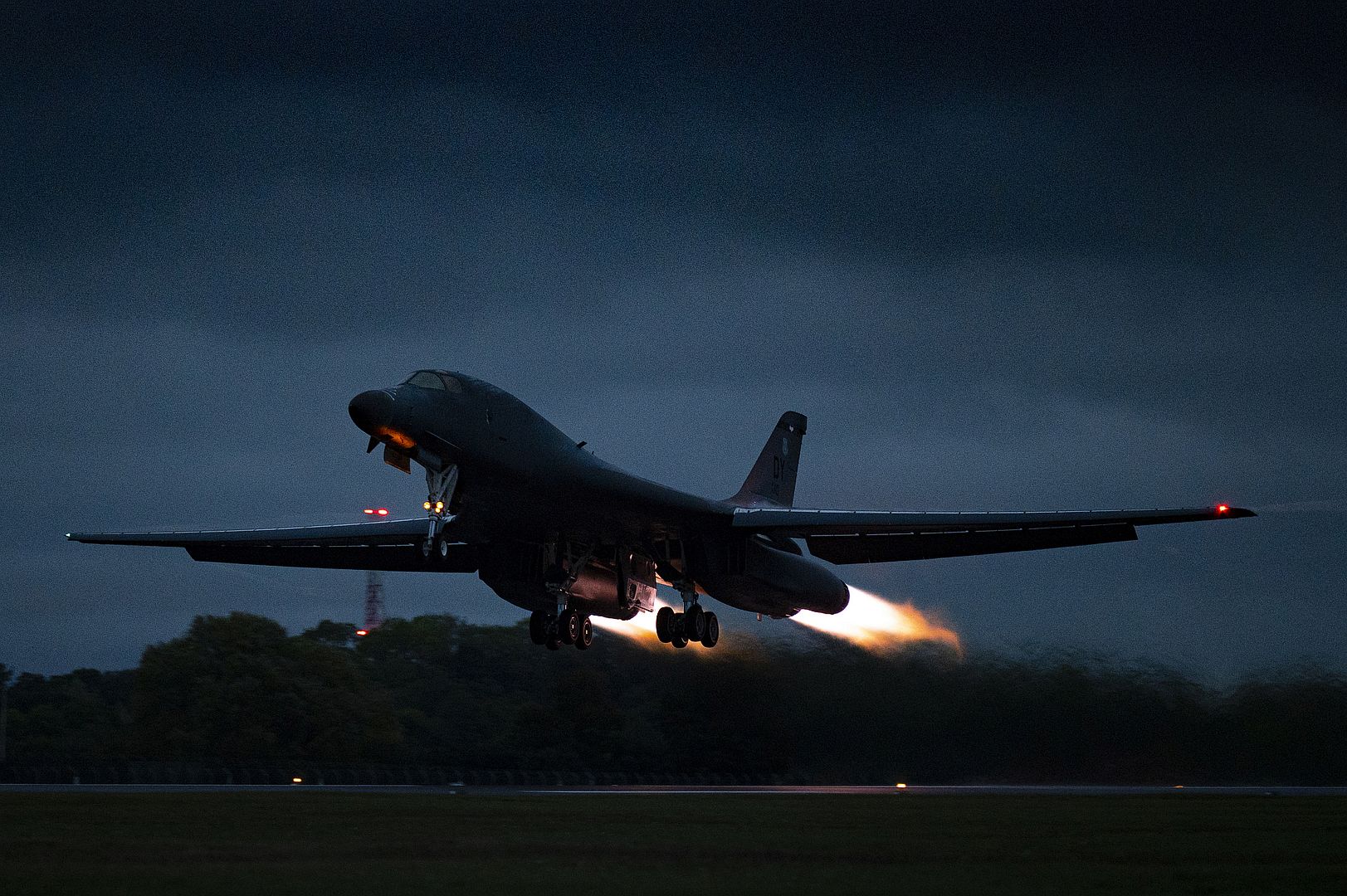

Capt. Joseph "Ronnie" Ruth, a AV-8B pilot assigned to the Aviation Combat Element, 22nd Marine Expeditionary Unit, prepares for takeoff aboard amphibious assault ship USS Kearsarge (LHD 3), Oct. 19. The 22nd MEU and Amphibious Squadron (PHIBRON) Six is underway for PHIBRON-MEU Integrated Training (PMINT) in preparation for an upcoming deployment. PMINT is the first at-sea period in the MEU's Predeployment Training Program; it aims to increase interoperability and build relationships between Marines and Sailors. (U.S. Marine Corps photo by Staff Sgt. Brittney Vella)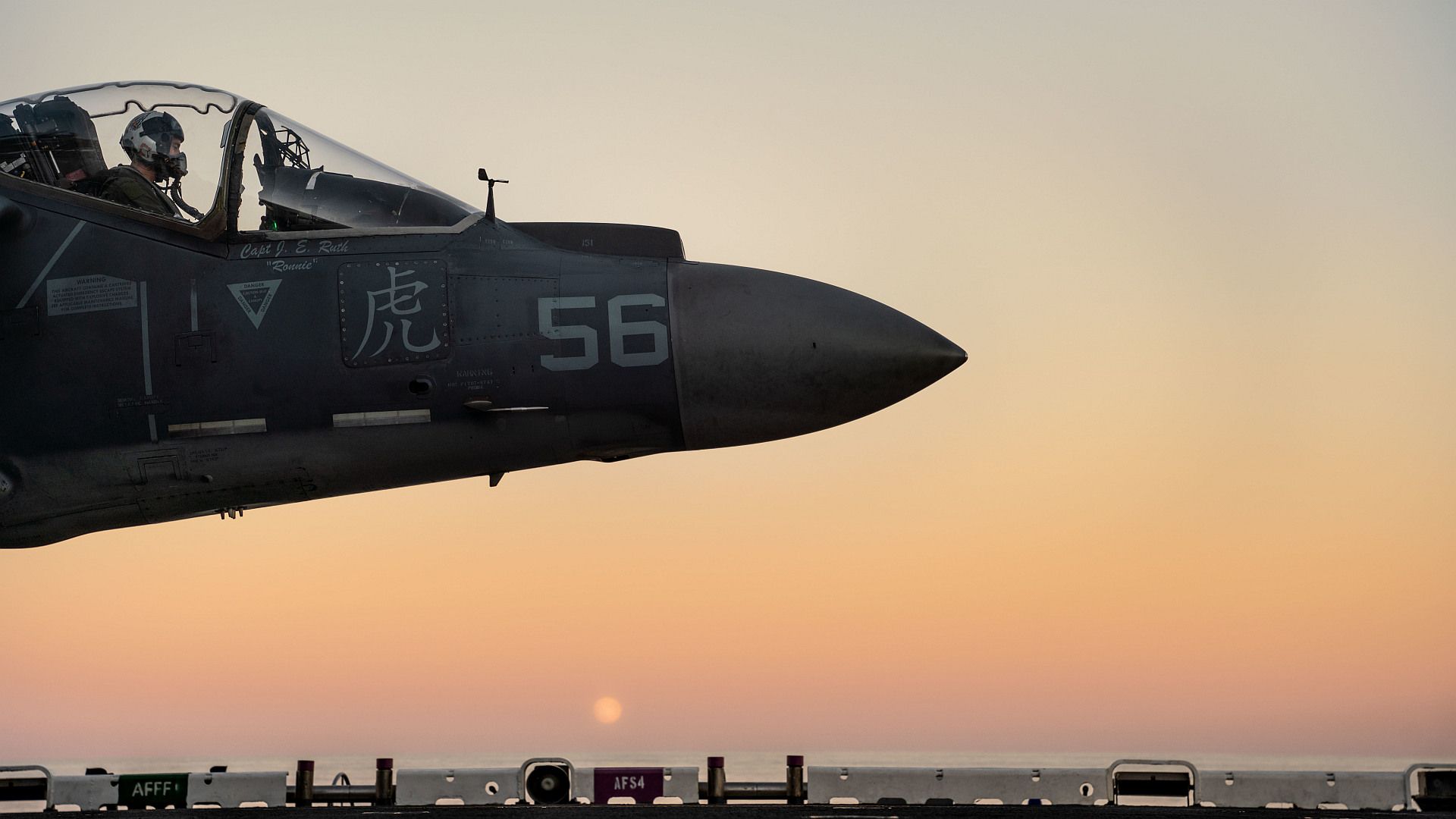
Toulouse, France, 20 October 2021 – Finnair has selected Airbus’s Flight Hour Services (FHS) to support its entire A320 Family fleet (35 aircraft), thus becoming the first European FHS customer for an A320 fleet.
Following recent contracts in Asia Pacific and the MiddleEast region, this first FHS agreement from Europe demonstrates the growing trust placed in Airbus’ maintenance by the hour services by airlines around the world, both for widebody and single aisle fleets.
Finnair will benefit from integrated material services including on-site-stock at their main base in Helsinki, access to Airbus’ mutualised spares pools and components engineering and repair services around the world. The FHS contract covers ‘nose to tail’ material services including for engine components.
Airbus will guarantee spare parts availability, generating value through increased fleet availability and operating maintenance costs savings.
Juha Ojala, Vice President Technical Operations at Finnair, said: “We continuously seek to create more value in our supply chain. This collaboration ensures an enhanced and innovative service for component reliability and availability while supporting fleet flexibility. We are sincerely pleased to strengthen the relationship between Finnair and Airbus.”
“We are very happy to see our Flight Hour Services recognised as an efficient means to accompany the progressive ramp-up of airlines’ operations in Europe, and we thank Finnair for their trust”, says Bart Reijnen, Head of Airbus Material Services. “For more than a year, we have worked hard to adapt our maintenance services and be able to provide more flexibility and reactivity to our airline customers. This service quality improvement is an additional way for Airbus to support the aviation sector’s recovery”.
The global Airbus fleet covered by FHS has increased by more than 25% over the past two years confirming the relevancy of flexible, power-by-hour solutions for airlines to secure efficient operations and contain costs.
Finnair is a long-standing Airbus customer. The airline is operating Airbus A320 Family aircraft on its network in Europe and Airbus A330 and A350 on long-haul flights.
Melbourne, Florida, October 21, 2021 – Embraer delivered the first Praetor 500 in Canada to AirSprint Private Aviation, a Canadian privately held Fractional Jet Ownership company. Earlier this year, the company converted two Legacy 450s to Praetor 500s and, with this addition, AirSprint will have three Praetor 500s in its fleet, and a total of nine Embraer jets.
The Praetor 500 boasts an impressive, best-in-class range, capable of non-stop flights of 3,340 nm at long-range cruise speed and also unparalleled runway performance under snowy and wet conditions. The aircraft is an excellent choice for AirSprint to provide non-stop flights from hundreds of airports coast-to-coast in Canada—with service across North America, the Caribbean, Central America, Hawaii and Europe.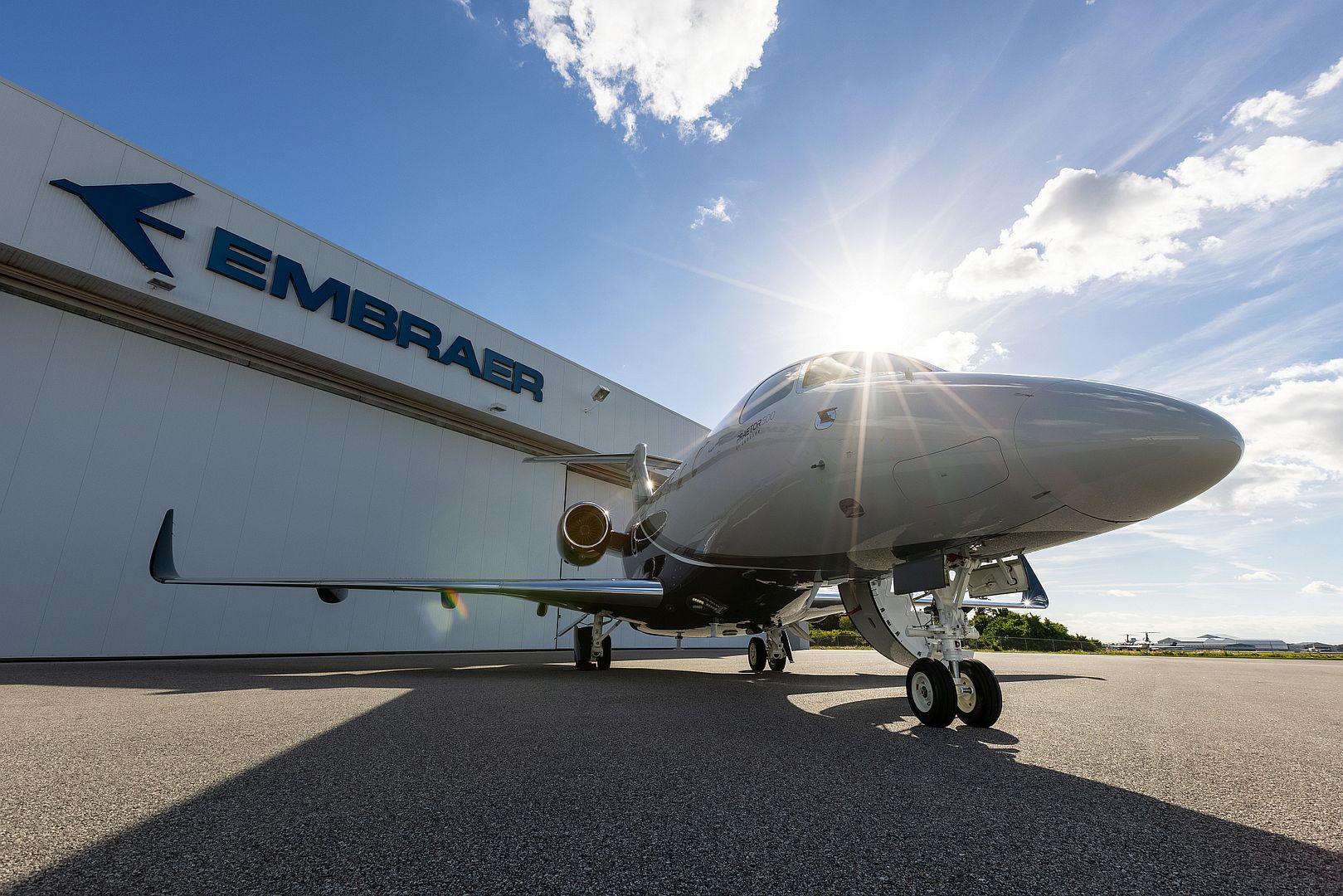
“We are pleased that our partnership with AirSprint, which began in 2016, continues to grow as they expand their fleet. When we completed the first Legacy 450 to Praetor 500 conversion earlier this year, they were delighted to provide their customers with direct access to more Canadian destinations and experiences. The Praetor 500 is an excellent choice as the company continues to grow and holds the highest standards for all customers,” said Michael Amalfitano, President & CEO of Embraer Executive Jets.
Not only does the Praetor 500 offer best-in-class range and the lowest cabin altitude in its class, it’s the world’s most disruptive and technologically advanced midsize business jet. In terms of technology, it’s the only midsize business jet with full fly-by-wire flight controls and turbulence reduction capability. It also features a true six-foot-tall, flat-floor cabin, stone flooring, a wet galley, and a vacuum lavatory—all with best-in-class baggage space.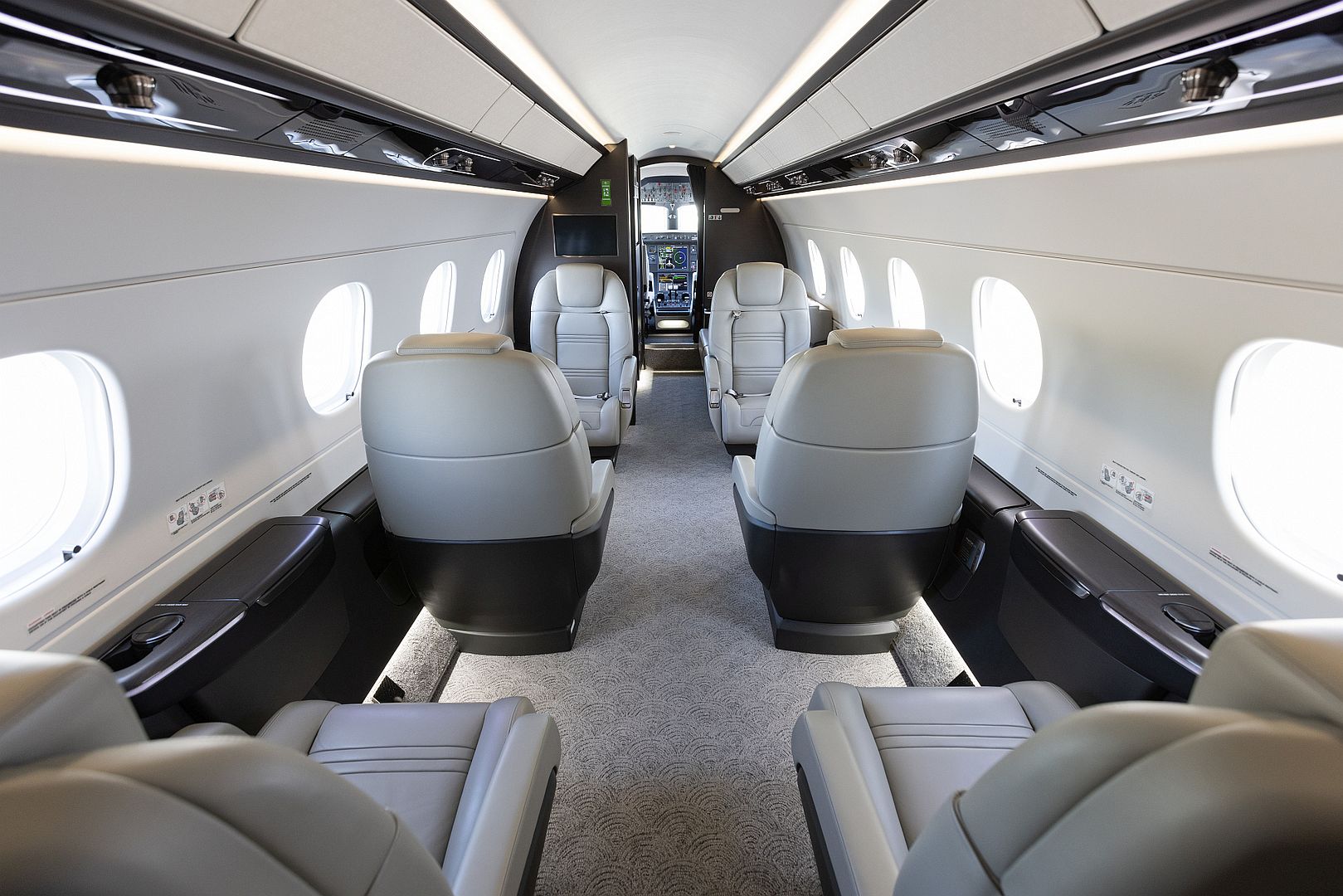
“To be the first in Canada to accept a new Embraer Praetor 500 helps to solidify our position as an industry leader,” said James Elian, President & CEO of AirSprint. “AirSprint spearheaded Fractional Ownership in Canada. We were the first then, and over 20 years later, our team continues to deliver a private aviation experience above all others. Our growth as a company is due to our Fractional Owners' commitment—and our long-standing relationships with stellar companies like Embraer.”
AirSprint’s acceptance of the new Praetor 500 will also be its first brand-new jet with the redesigned paint job. The new livery—elegant and distinct—is a true application of the AirSprint brand.
About Embraer Executive Jets
Embraer is creating tomorrow’s world of bespoke private air travel today, utilizing industry-leading innovation, design, and technology—all the while incorporating sustainable and socially responsible practices. As a global company with more than 50 years in aerospace, Embraer delivers the ultimate experience in business aviation through aircraft that feature disruptive technology, performance, and comfort. Its portfolio consists of the Phenom 100EV, which offers the business aviation experience in its purest form; the Phenom 300E, which is the best-selling light jet for the past nine years straight; and the Praetor 500 and the Praetor 600, which with best-in-class flight range, are the most disruptive and technologically advanced midsize and super-midsize business jets, capable of continent-crossing and ocean-spanning missions, respectively. Every day, Embraer business aircraft operate around the globe, supported by a strong, responsive customer support network that’s top-ranked in service across the industry. For more information, visit executive.embraer.com.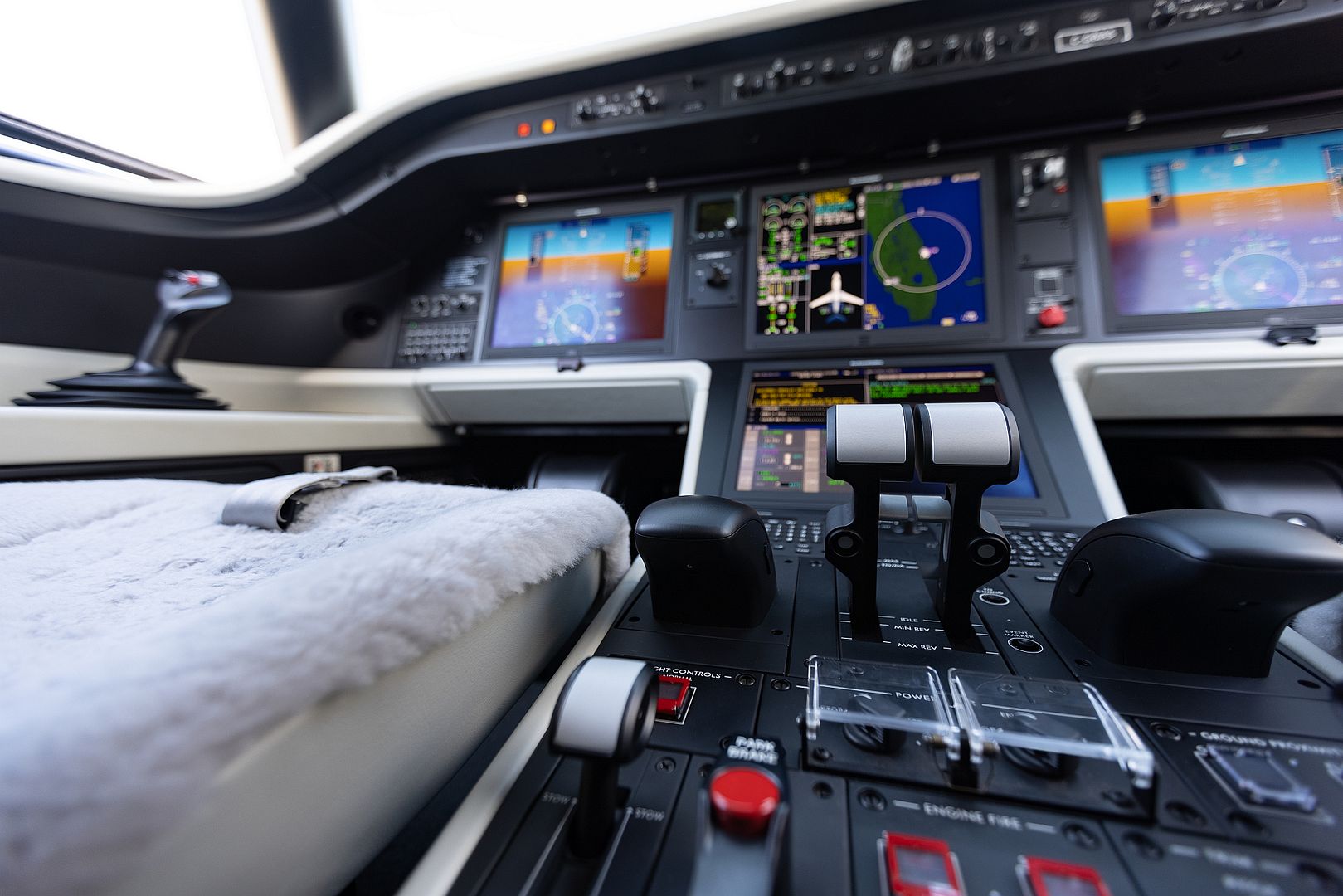
About AirSprint
AirSprint Private Aviation is a privately held company with offices in Toronto, Montréal and Calgary. AirSprint maintains the largest fractional fleet of private aircraft in Canada, a jet collection of Embraer Praetor 500s, Embraer Legacy 450s, Cessna Citations CJ3+ and Cessna Citations CJ2+. AirSprint proudly flies Canadians from coast-to-coast including service from Vancouver, Calgary, Edmonton, Winnipeg, Toronto, Ottawa, Montréal and the Maritimes. AirSprint provides discerning Canadians with a better choice for optimizing their time by enhancing the private jet ownership experience with industry-leading safety standards, exceptional turn-key service and increased flexibility; everything personalized for the Owners’ individual travel needs. All at a fraction of the cost. AirSprint.com.
-
 Main AdminANDAMAN SEA (Oct. 21, 2021) An F-35C Lightning II, assigned to the “Argonauts” of Strike Fighter Squadron (VFA) 147, taxis on the flight deck aboard Nimitz-class aircraft carrier USS Carl Vinson (CVN 70), Oct. 21, 2021. Carl Vinson Carrier Strike Group is on a scheduled deployment in the U.S. 7th Fleet area of operations to enhance interoperability through alliances and partnerships while serving as a ready-response force in support of a free and open Indo-Pacific region. (U.S. Navy photo by Mass Communication Specialist 3rd Class Erin C. Zorich)
Main AdminANDAMAN SEA (Oct. 21, 2021) An F-35C Lightning II, assigned to the “Argonauts” of Strike Fighter Squadron (VFA) 147, taxis on the flight deck aboard Nimitz-class aircraft carrier USS Carl Vinson (CVN 70), Oct. 21, 2021. Carl Vinson Carrier Strike Group is on a scheduled deployment in the U.S. 7th Fleet area of operations to enhance interoperability through alliances and partnerships while serving as a ready-response force in support of a free and open Indo-Pacific region. (U.S. Navy photo by Mass Communication Specialist 3rd Class Erin C. Zorich)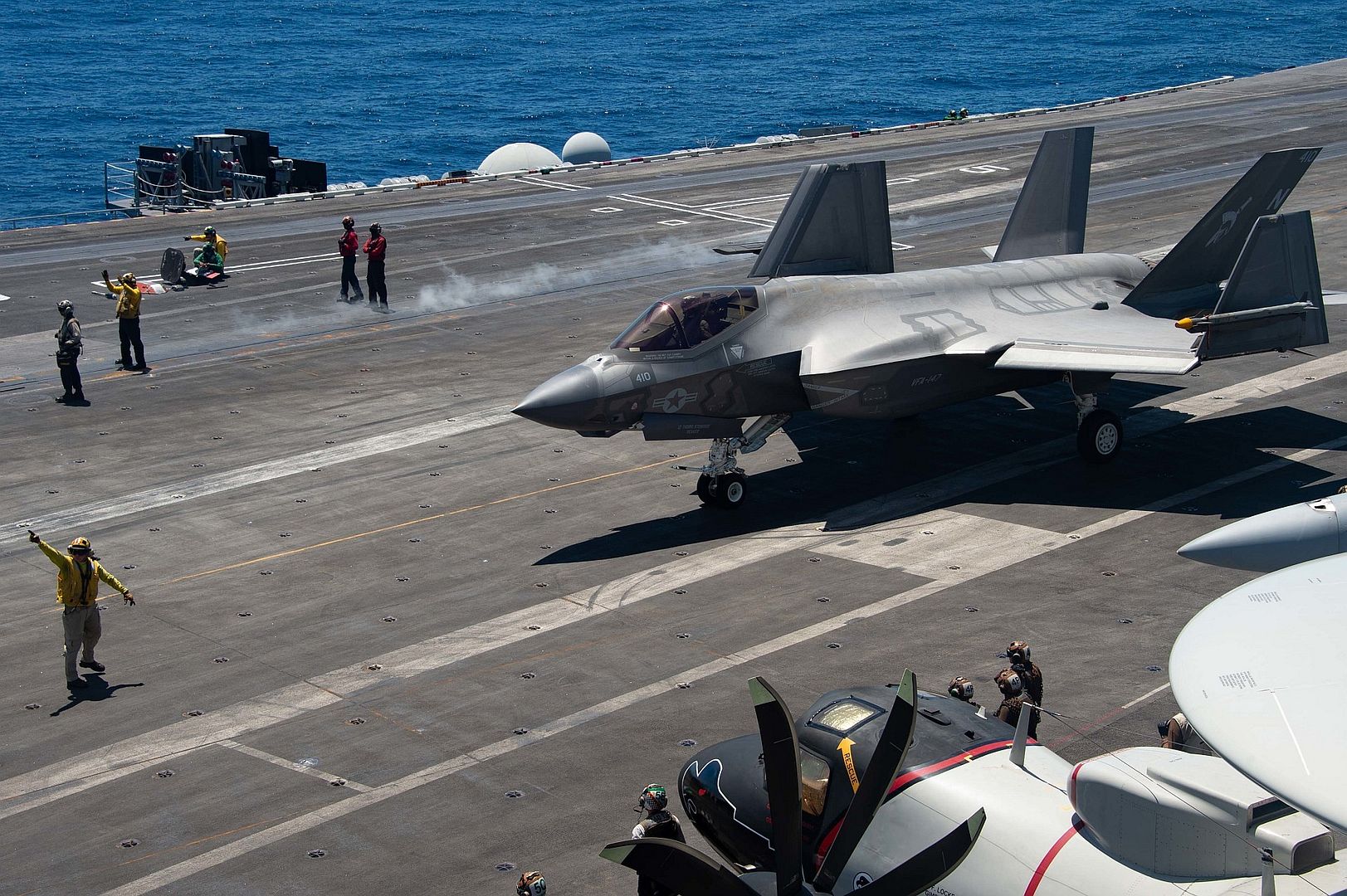
VIRGINIA BEACH, Va. (Oct. 20, 2021) The moon sets over an F/A-18E Super Hornet, attached to the “Blacklions” of Strike Fighter Squadron (VFA) 213 on the flight line of Naval Air Station Oceana. The squadron is assigned to Carrier Air Wing Eight, based at Naval Air Station Oceana. (U.S. Navy photo by Mass Communication Specialist 2nd Class Megan Wollam/Released)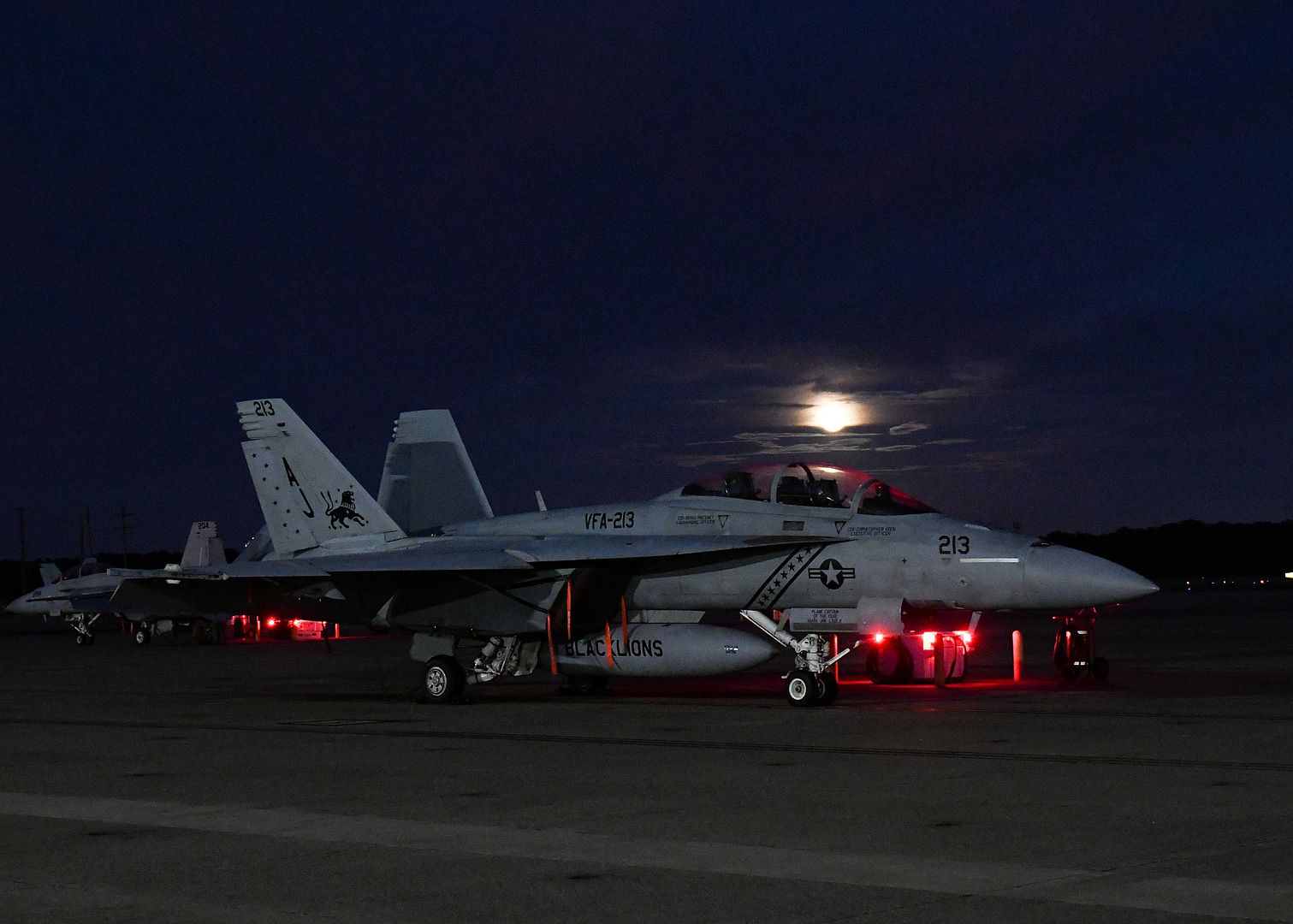
Maj. Mitchell Vanderkodde and Capt. Megan Love prepare to land an AH-1 Cobra assigned to the Aviation Combat Element, 22nd Marine Expeditionary Unit aboard amphibious assault ship USS Kearsarge (LHD 3), Oct. 20. The 22nd MEU and Amphibious Squadron (PHIBRON) Six is underway for PHIBRON-MEU Integrated Training (PMINT) in preparation for an upcoming deployment. PMINT is the first at-sea period in the MEU's Predeployment Training Program; it aims to increase interoperability and build relationships between Marines and Sailors. (U.S. Marine Corps photo by Staff Sgt. Brittney Vella)
Three F-15C Eagles and an F-15EX Eagle II fly behind a KC-135 Stratotanker during an in-air refueling mission over Tinker Air Force Base, Okla., Oct. 15, 2021. In-air refueling allows fighter aircraft to stay airborne for longer periods of time without having to land to refuel. (U.S. Air Force photo by 2nd Lt. Mary Begy)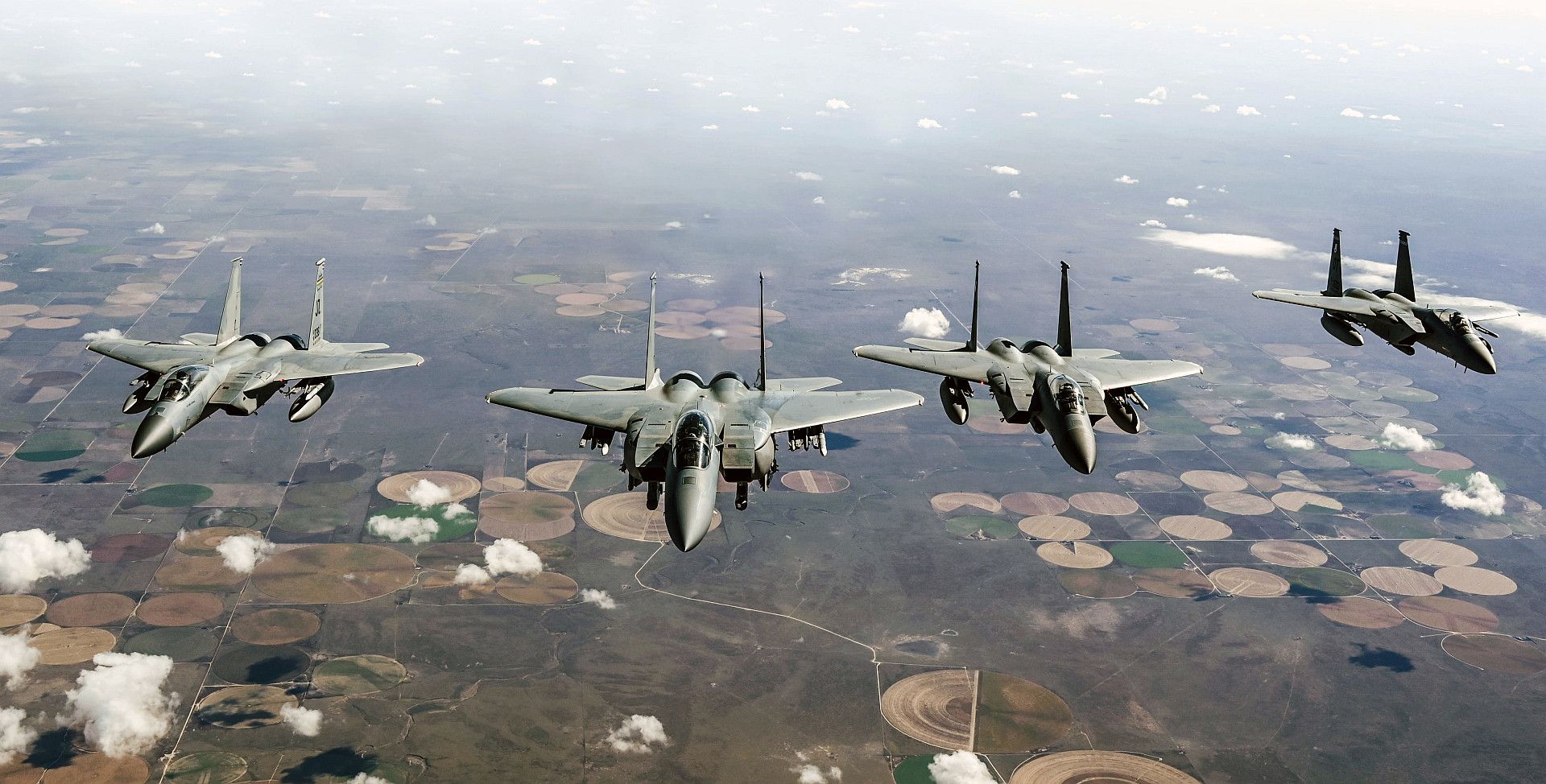
A U.S. Air Force F-35A Lightning II arrives at the 33rd Fighter Wing in support of the recently reactivated 60th Fighter squadron’s flying training mission Oct. 21, 2021, at Eglin Air Force Base, Florida. The 60th FS was reactivated Aug. 20, 2021, on the 75th anniversary of its previous activation following WWII. (U.S. Air Force Airman Leandra Garcia)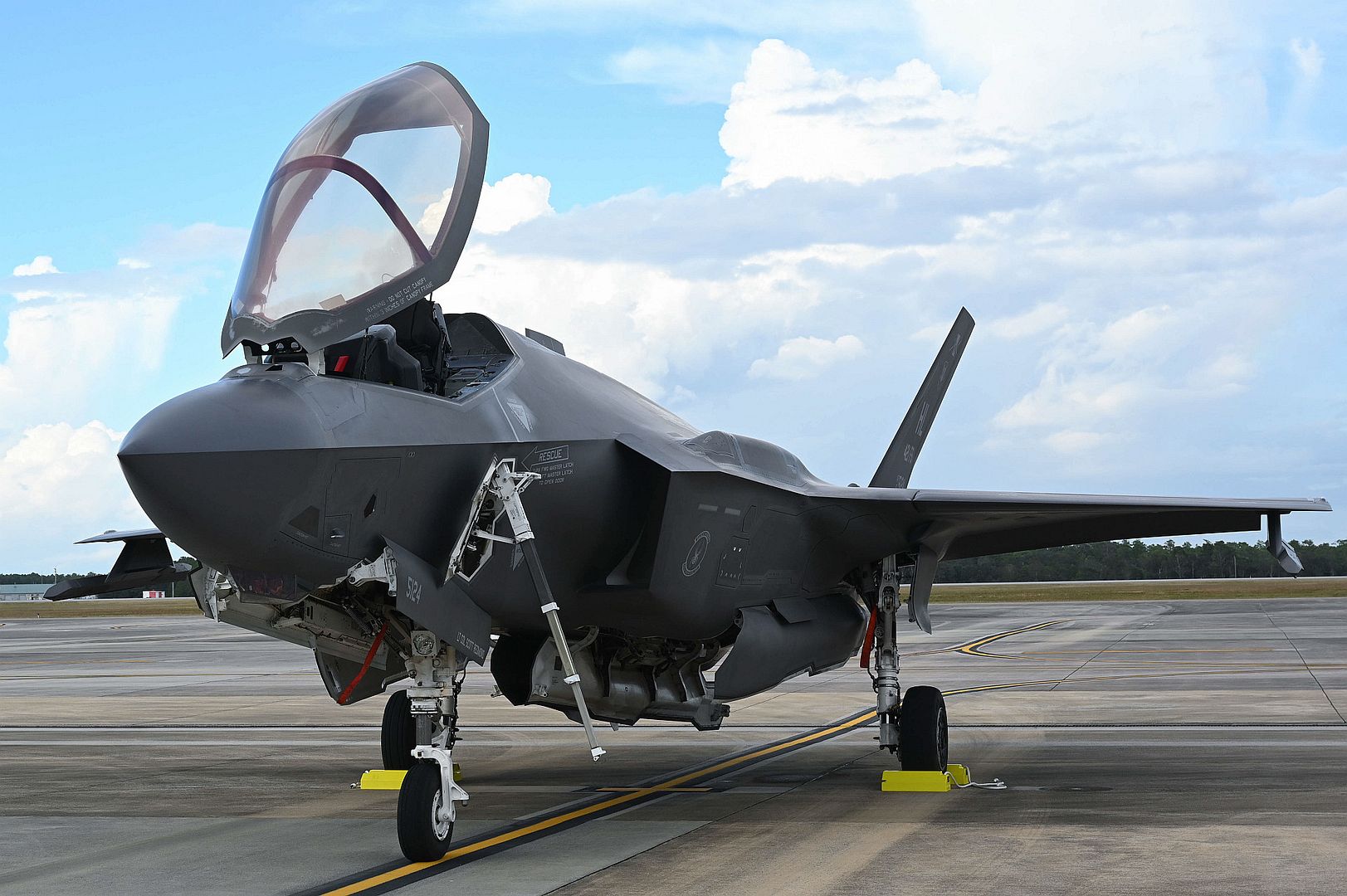
F-15EX Eagle II fighter jets assigned to the 40th Flight Test Squadron, Eglin Air Force Base, at Nellis Air Force Base, Nevada, Oct. 20, 2021. Aircraft from Nellis AFB, Eglin AFB and the Oregon Air National Guard are providing support for the Test and Evaluation of the F-15EX in operationally realistic scenarios. This testing will help determine how effective and suitable the F-15EX is at accomplishing its air-to-air mission. (U.S. Air Force photos by William R. Lewis)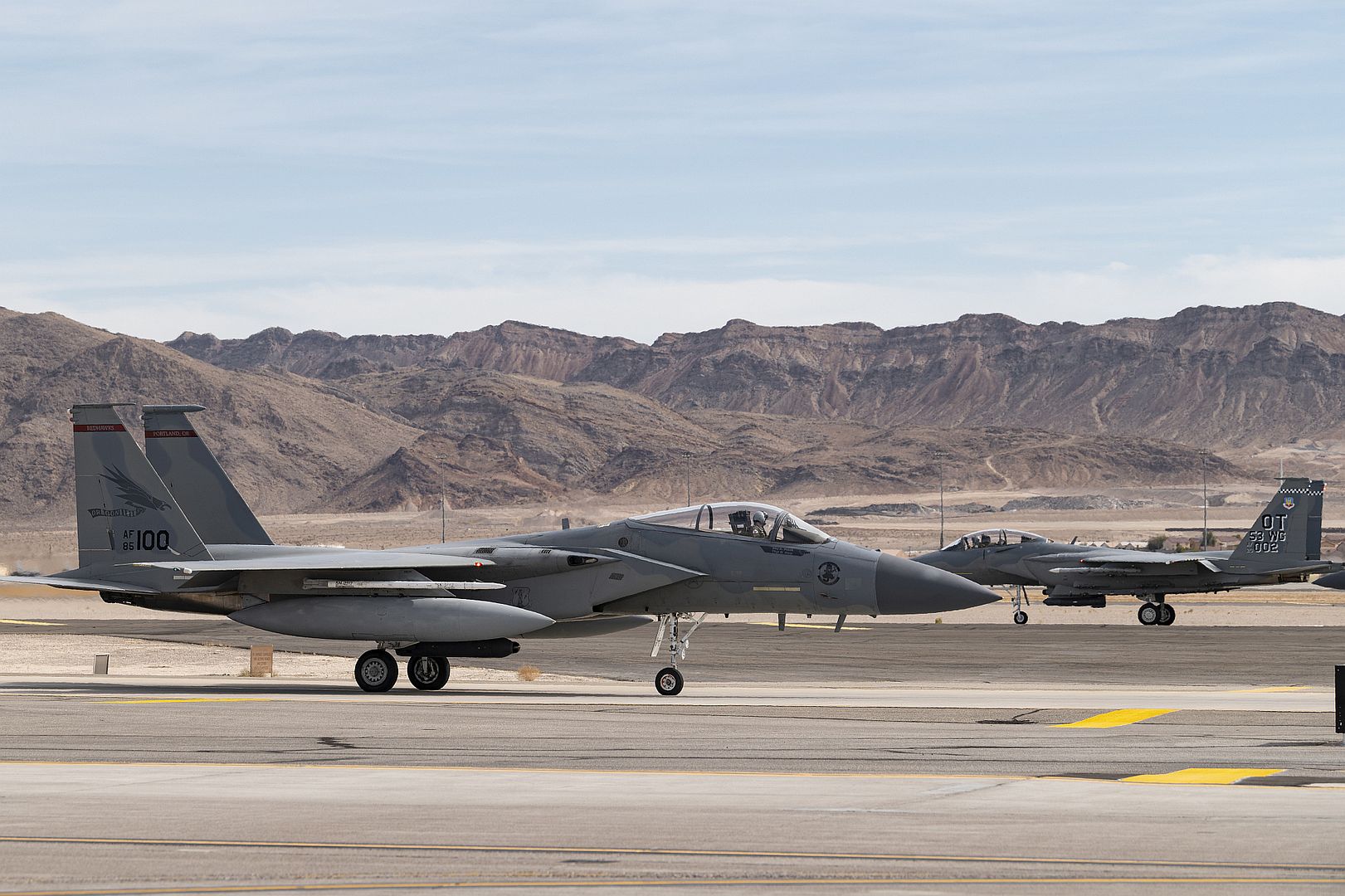
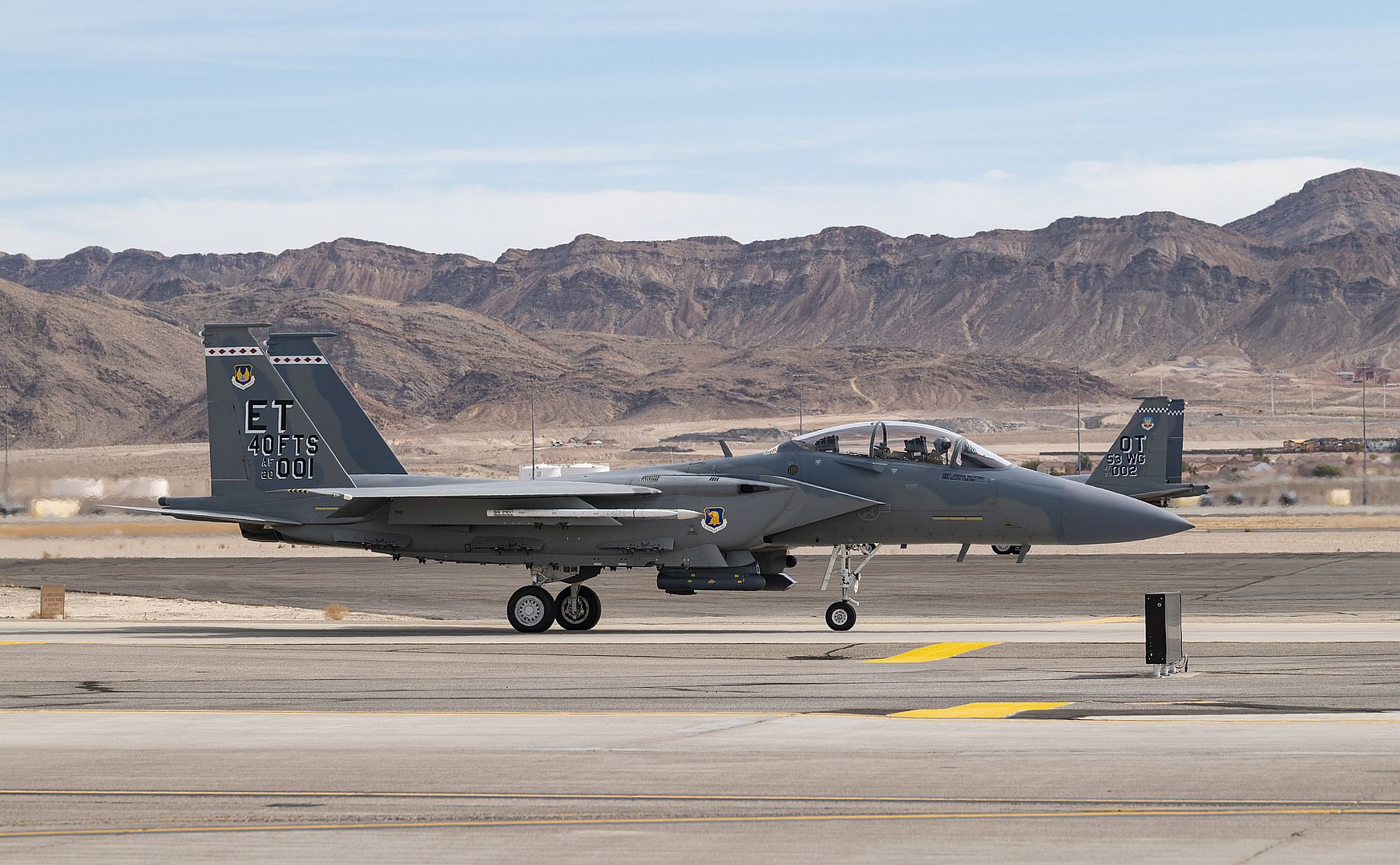

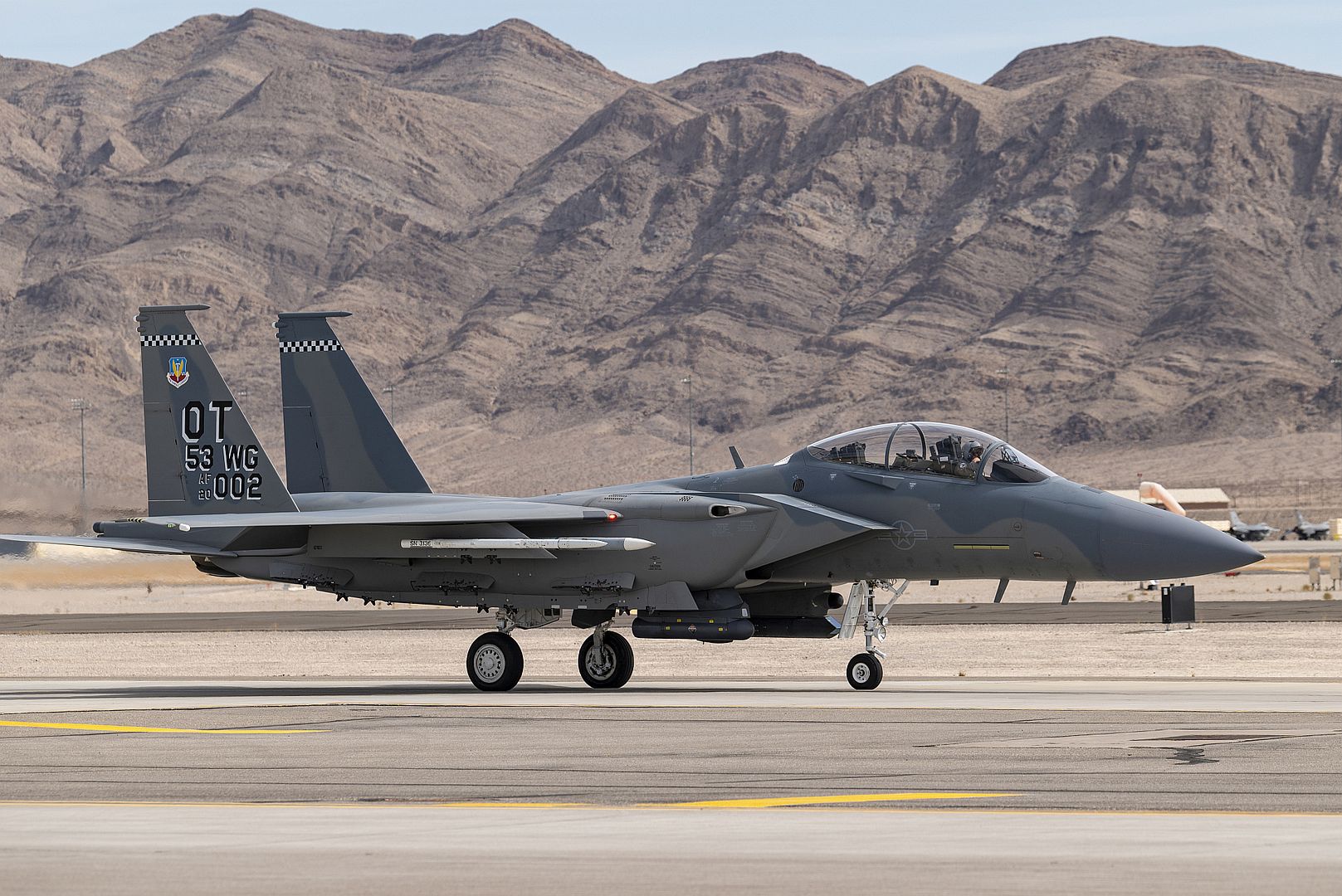
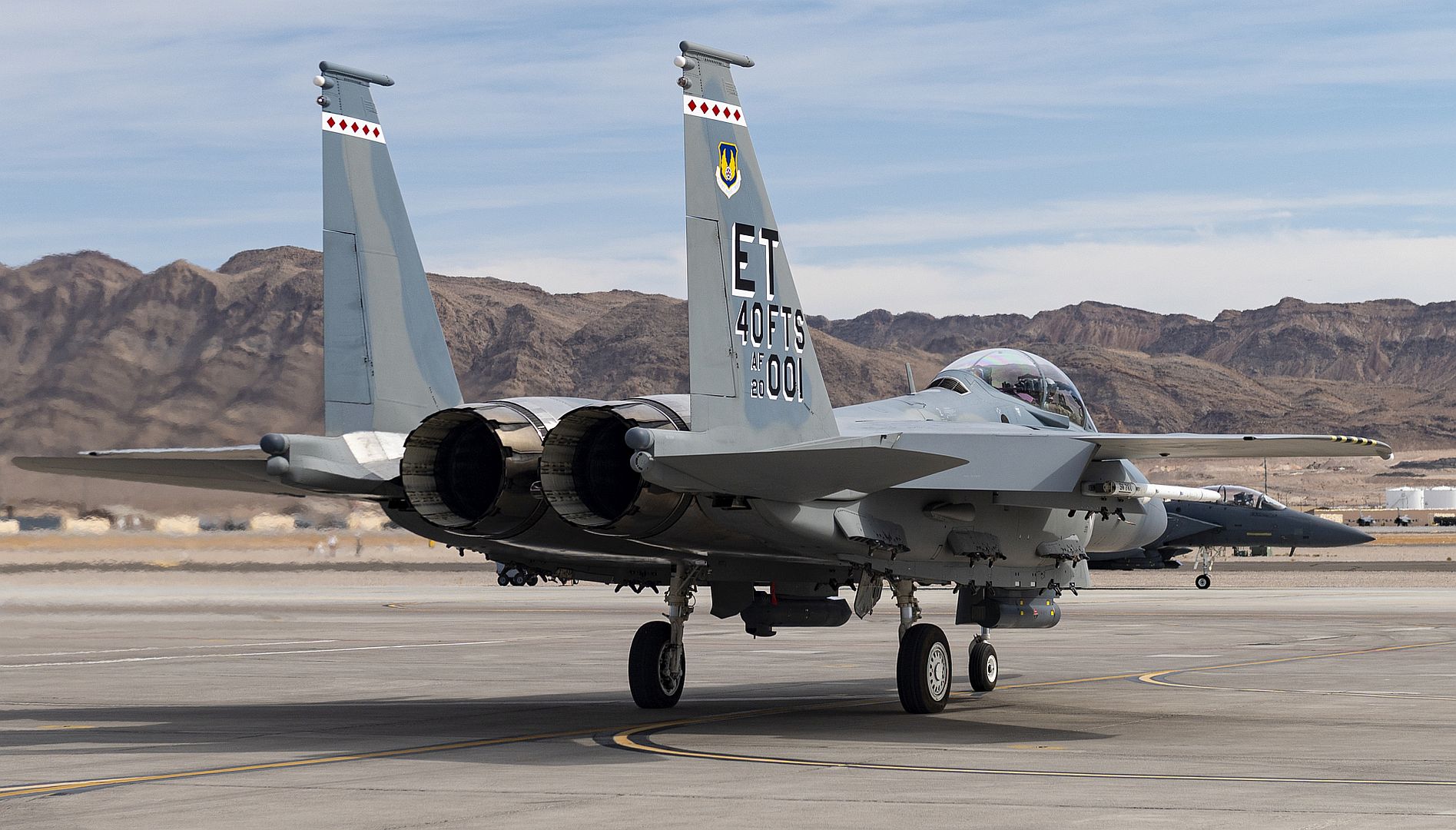
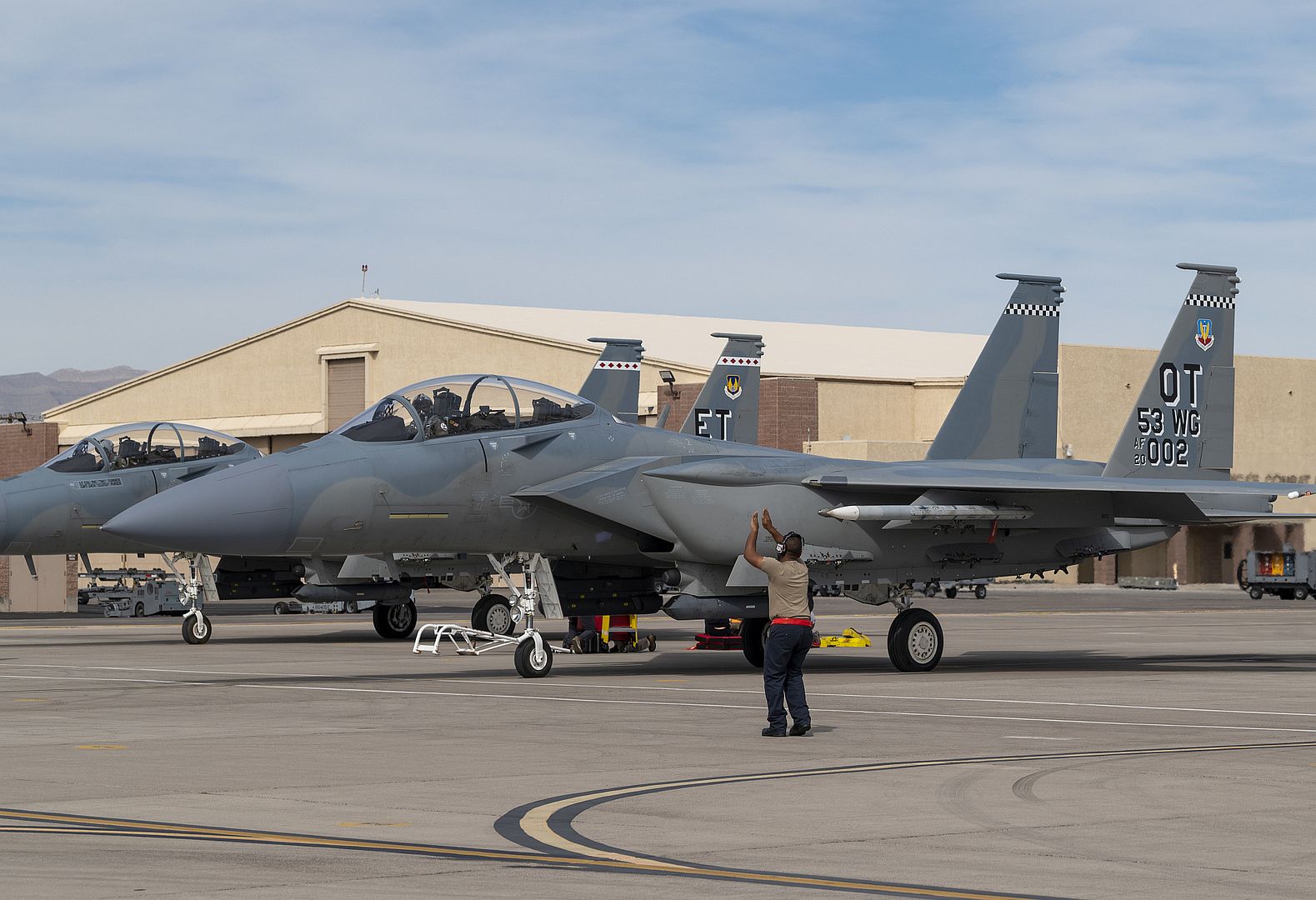
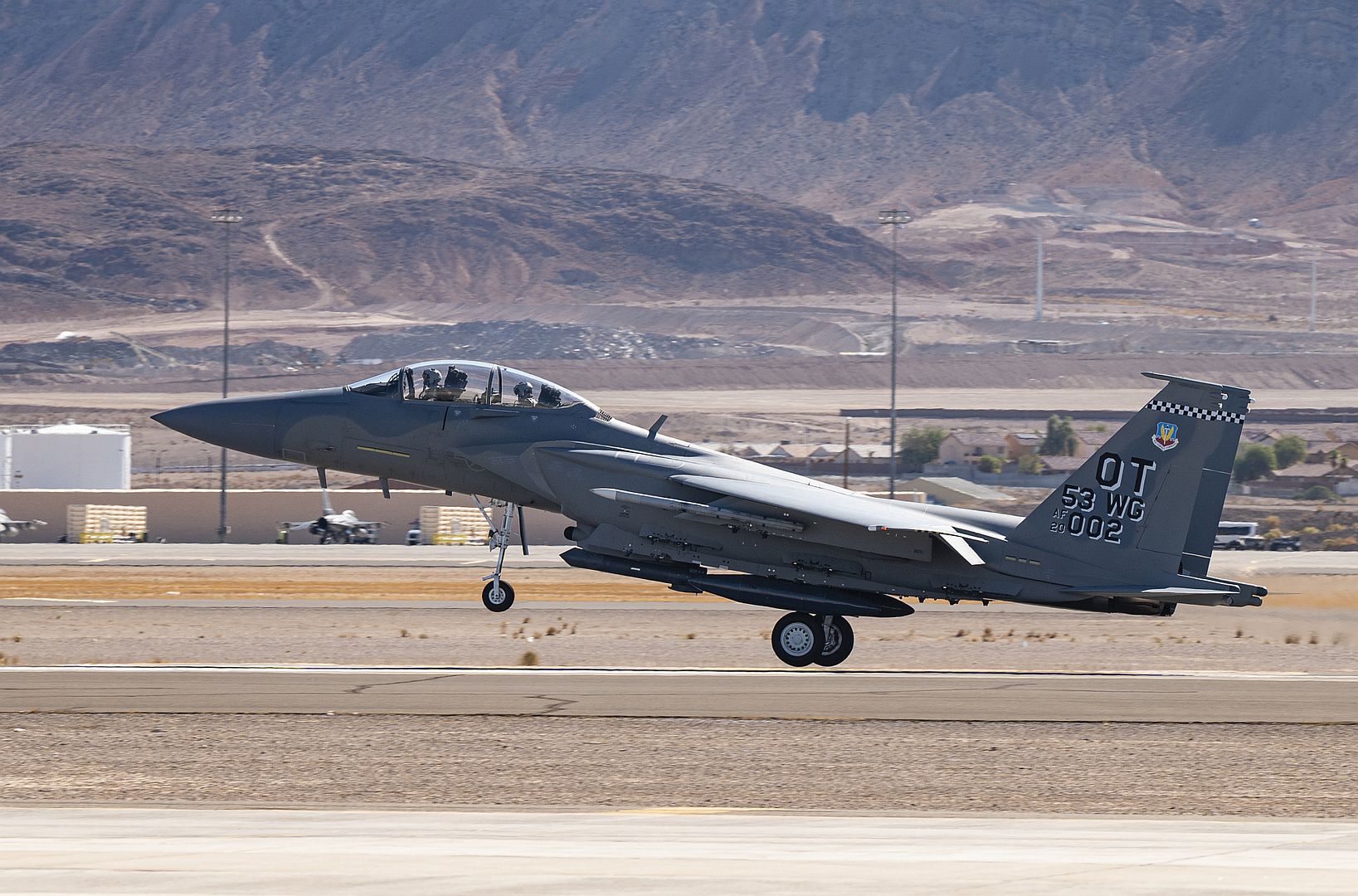
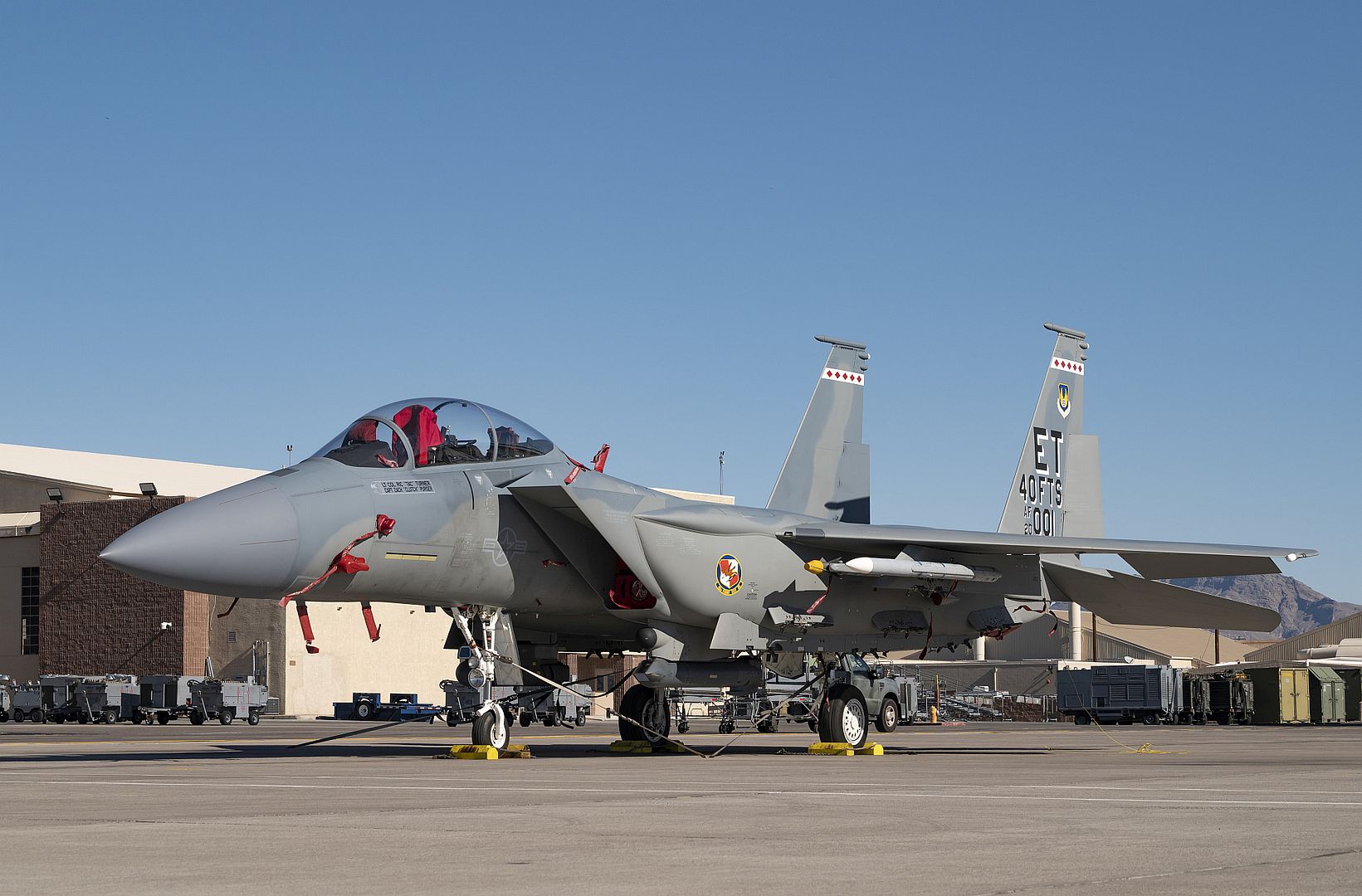
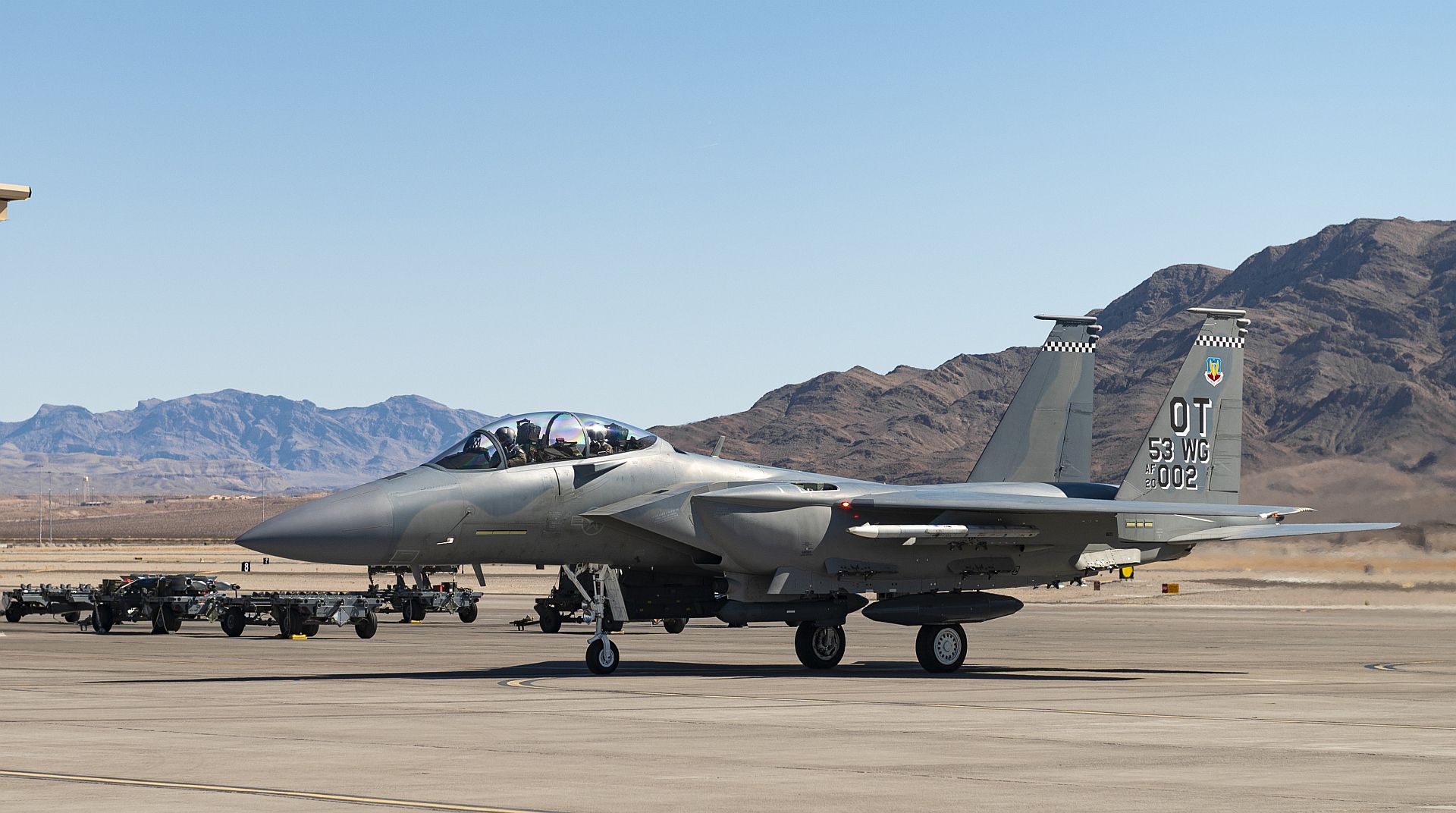
A U.S. Air Force F-15C Eagle assigned to the 44th Fighter Squadron takes off during a super surge exercise at Kadena Air Base, Japan, Oct. 19, 2021. Surge operations are designed to simulate a fast-paced, deployed combat environment to ensure aircrew and support personnel are always ready to execute missions in defense of the U.S. and its allies. (U.S. Air Force photo by Senior Airman Jessi Monte)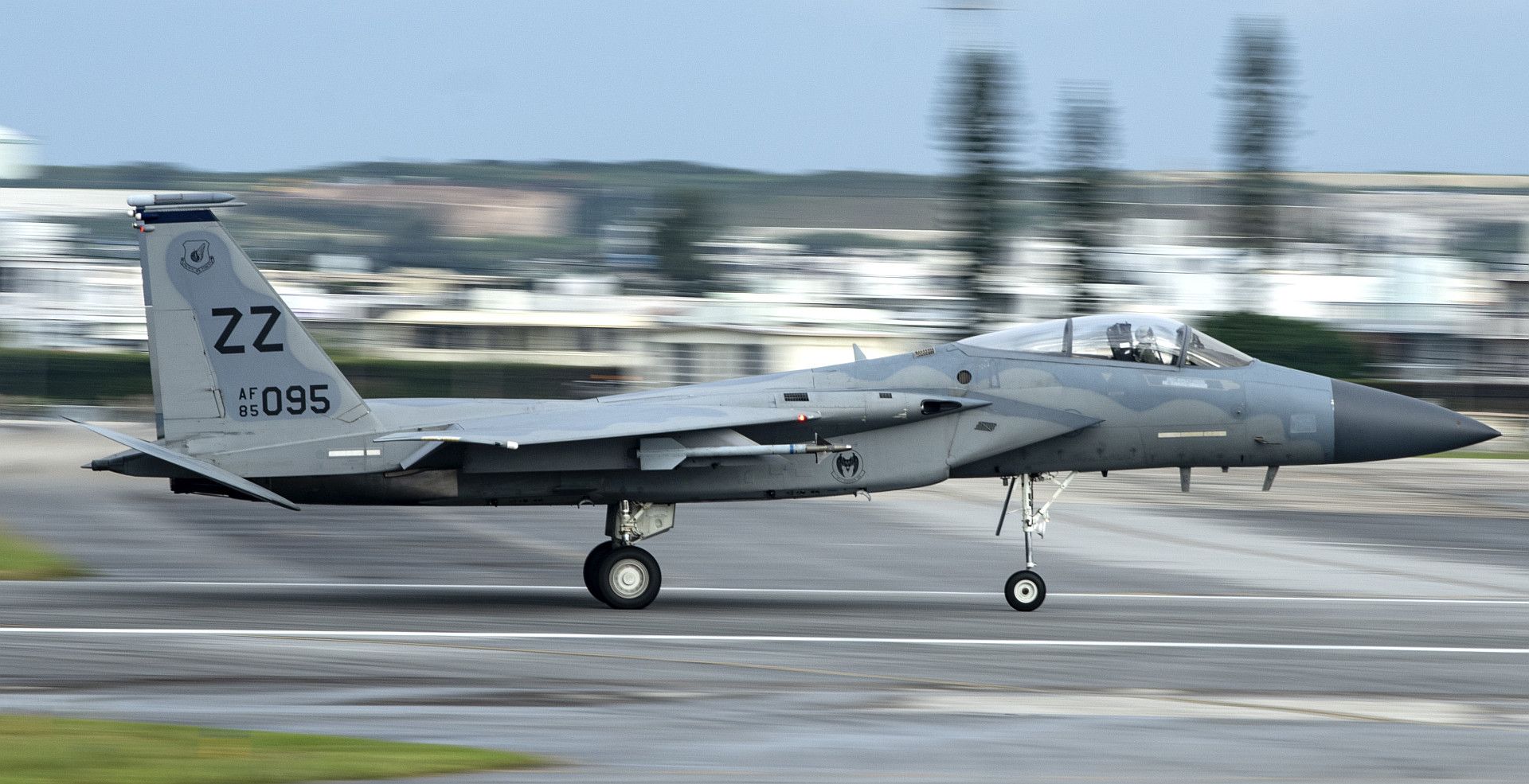
Amsterdam, Netherlands, October 21, 2021 – Embraer announced today at MRO Europe, a leading aeronautical maintenance event, a Pool Program agreement with KLM Cityhopper, the regional subsidiary of KLM Royal Dutch Airlines. The contract includes broad component support for the airline’s E195-E2s fleet. Currently, Embraer’s Pool Program supports more than 50 airlines worldwide.
The airline received the first E195-E2 of the 25 jets it has on order, at the beginning of 2021, with all E2 being covered by this contract. Currently, KLM Cityhopper already operates a total of four E195-E2 and a fleet of 49 first generation E-Jets.
“As the operator with the largest E-Jet fleet in Europe, KLM Cityhopper has vast experience with E-Jets operations and maintenance – and very high standards, especially regarding aircraft availability. This contract is a great endorsement from KLM Cityhopper and continues Embraer’s success in providing comprehensive support and services for E2 customers,” said Johann Bordais, President & CEO, Embraer Services & Support.
Embraer’s Pool Program is designed to allow airlines to minimize their upfront investment on high-value repairable inventories and resources and to take advantage of Embraer’s technical expertise and its vast component repair service provider network. The results are significant savings on repair and inventory carrying costs, reduction in required warehousing space, and the virtual elimination of the need for resources required for repair management, while ultimately providing guaranteed performance levels.
The E195-E2, Embraer’s new generation aircraft, is specifically designed to cut emissions and noise footprint. The E2’s environmental credentials are impressive. The E2’s low external noise level is already well below planned future ICAO limits. Carbon emissions are almost 10% lower per trip and 31% lower per seat. In a typical year, each E195-E2 will emit 1,500 fewer tons of CO2.
Rome 22 October 2021
Leonardo’s leading-edge AWHero RUAS (Rotary Uncrewed Aerial System) has received basic military certification from Italy’s DAAA (Direzione degli Armamenti Aeronautici e per l’Aeronavigabilità), the Directorate for Air Armaments and Airworthiness. This achievement marks the world’s first military certification for a RUAS in the 200kg class.
AWHero’s design, development, production and support meet military airworthiness authority requirements delivering the highest levels of mission safety, reliability and availability to Armed Forces. The military certification includes embarked operations and highlights the robustness of AWHero's design criteria and approach, paving the way for further development, integration and validation of expanded capabilities designed and planned for the system. This military certification is also based on elements of the worldwide recognised STANAG4702 standard.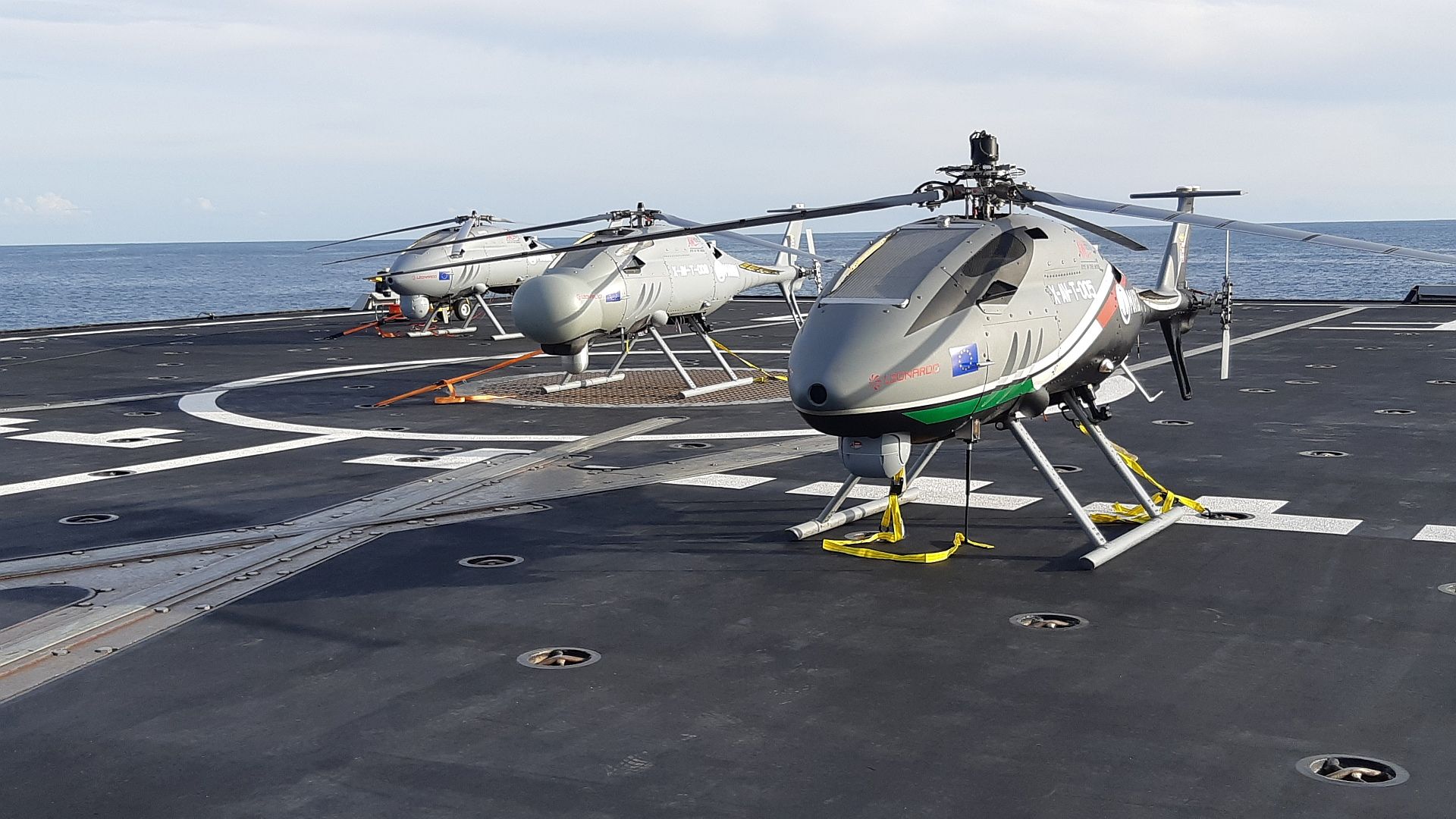
AWHero design leverages on Leonardo’s strength and extensive experience in rotorcraft development, system integration and embarked helicopter operations. Since 2019, the platform has been conducting maritime surveillance capability demonstrations on ships within the framework of the OCEAN2020 initiative, the European Defence Fund strategic research programme for naval surveillance technology and maritime safety, comprising 43 organisations across Europe and led by Leonardo.
AWHero is also being evaluated in international tenders. Northrop Grumman Australia and Leonardo Australia’s team has been shortlisted to proceed to the next phase of the SEA129 Phase 5 programme for the acquisition of a maritime uncrewed aerial system designed to deliver a deployable intelligence, surveillance, reconnaissance and targeting capability to the Royal Australian Navy (RAN). The Northrop Grumman and Leonardo proposal will enhance capability effects and tactical decision-making during RAN maritime operations.
Leonardo is the only company in Europe, which is able to provide complete solutions by designing and developing all the elements of unmanned systems: platforms, sensors, mission systems, control stations and offer customers a certified low risk, high effective, fully integrated capability.
Leonardo is a key partner and contributor to significant European drone programmes and Leonardo’s expertise and capabilities in the sector have been extensively demonstrated during international exercises. Leonardo has developed uncrewed systems and technologies, including anti-drone capabilities and unmanned traffic management (UTM) systems.
The continuous development and integration of cutting-edge solutions across all domains of remotely-piloted and autonomous/semi-autonomous systems and technologies is a key element of Leonardo’s BeTomorrow2030 Strategic Plan.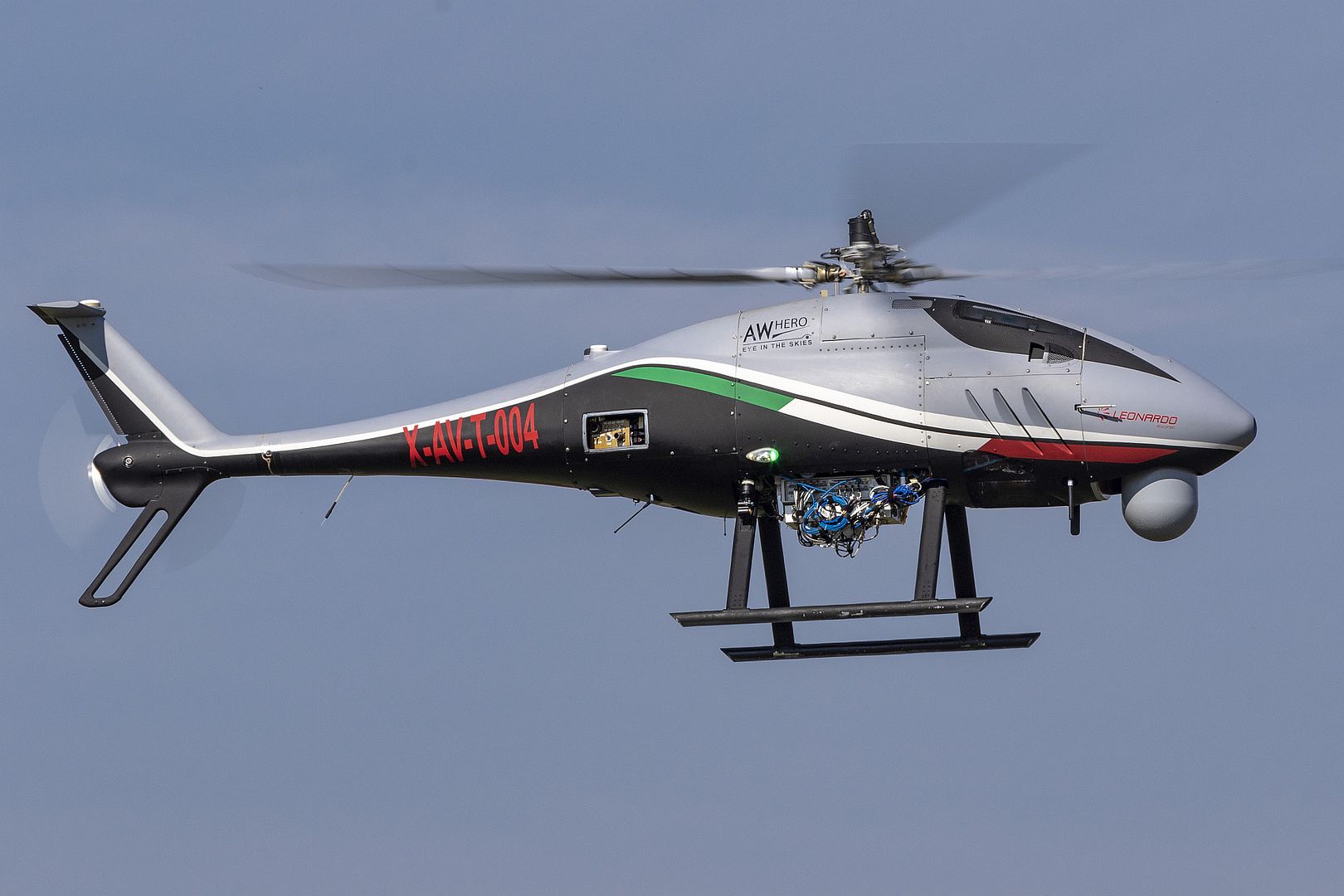
AMARILLO, Texas (Oct. 22, 2021) – Bell Textron Inc., a Textron Inc. (NYSE: TXT) company, celebrated the completion of the first AH-1Z Viper attack helicopter for the Kingdom of Bahrain on Sept. 30. Bell delivered the first of 12 production aircraft to Naval Air Systems Command as part of the 2019 foreign military sales (FMS) contract. Foreign military sales of the AH-1Z bring the advanced, dedicated capabilities of the aircraft directly to international operators and help increase interoperability and amplify effectiveness of allied forces. The helicopter will be prepared for shipment to Bahrain with the Defense Contract Management Agency (DCMA) before being transported to Bahrain in 2022.
“This is an extraordinary achievement by the H-1 Program and brings the Royal Bahraini Air Force a step closer to fielding the advanced capabilities of the AH-1Z,” said Mike Deslatte, Bell H-1 vice president and program director. “The men and women of Team Viper, a group of premier suppliers, have done an exceptional job of delivering to the U.S. Government, on time and on contract.”
Bell designed the AH-1Z Viper specifically to meet the stringent operational requirements of the U.S. Marine Corps, which focus on full marinization and a reduced logistical footprint. The aircraft has a fully integrated glass cockpit and the ability to carry a wide variety of munitions.
The composite rotor system further enhances the Viper’s ability to provide close air support to ground forces in any environment, while the fully integrated Target Sight System (TSS) enhances pilots’ capabilities to identify clearly, acquire, track and engage targets beyond maximum weapon range.
“The Viper will provide significant benefits to the Bahrain Defence Force as they modernize their fleet of attack helicopters,” said Deslatte. “Having a proven state-of-the-art platform will help contribute to the security of Bahrain while improving interoperability with U.S. forces.”
Bell continues to work to deliver aircraft to the U.S. Marine Corps, Bahrain and Czech Republic. The company also keeps the H-1 up to date with planned capability improvements designed to ensure the Viper maintains its strategic technological edge throughout its service life.
-
 Main AdminU.S. Air Force F-16 Fighting Falcon fighter jet maintainers monitor aircraft generation of a U.S. Air Force F-16C from the 480th Fighter Squadron during Blue Flag 21 at Uvda Air Base, Israel, Oct. 24, 2021. Before every takeoff, pilots and maintainers perform stringent safety and maintenance checks to ensure the reliability and safety of the aircraft throughout extensive operations. (U.S. Air Force photo by Tech. Sgt. Maeson L. Elleman)
Main AdminU.S. Air Force F-16 Fighting Falcon fighter jet maintainers monitor aircraft generation of a U.S. Air Force F-16C from the 480th Fighter Squadron during Blue Flag 21 at Uvda Air Base, Israel, Oct. 24, 2021. Before every takeoff, pilots and maintainers perform stringent safety and maintenance checks to ensure the reliability and safety of the aircraft throughout extensive operations. (U.S. Air Force photo by Tech. Sgt. Maeson L. Elleman)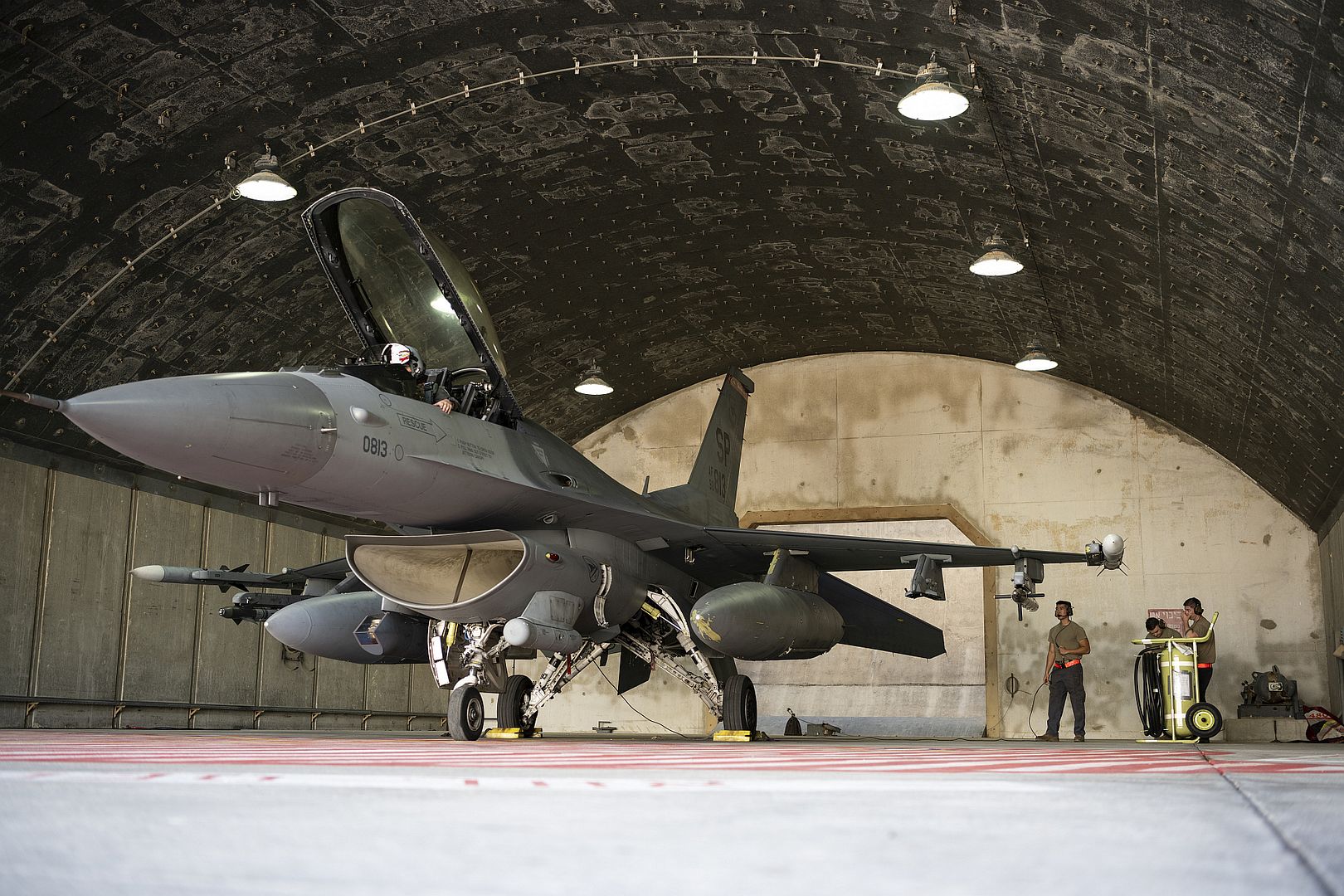
Romanian maintenance personnel prepare their F-16 Fighting Falcon aircraft for a series of integrated training sorties alongside F-15E Strike Eagles from the 336th Fighter Squadron, 4th Fighter Wing, Seymour Johnson Air Force Base, North Carolina, during operation Castle Forge, Borcea 86th Air Base, Romania, Oct. 22, 2021.
Castle Forge is a U.S. Air Forces Europe-Air Forces Africa-led, joint, multi-national operation. It provides a dynamic, partnership-focused training environment that raises the U.S. commitment to collective defense in the Black Sea region while enhancing interoperability alongside NATO allies (U.S. Air Force photo by Capt. Andrew Layton).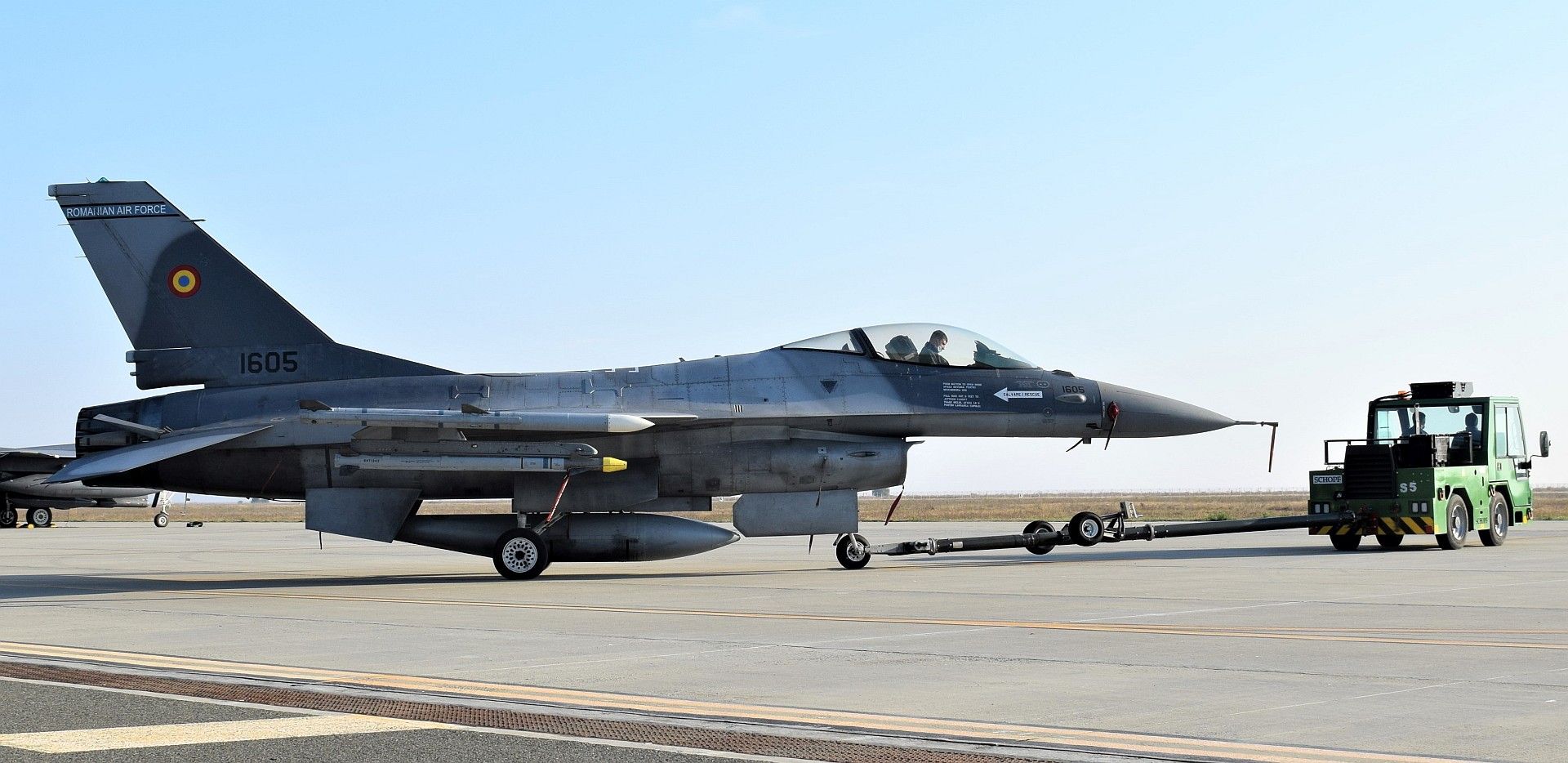
A MH-139, Grey Wolf, lands at F.E. Warren Air Force Base, Wyoming, so Airmen from the 90th Missile Wing and the 37th Helicopter Squadron could see the new aircraft on Oct. 22, 2021. The Grey Wolf will replace the aging UH-1N Huey, overcoming current limits in speed, range, endurance, payload and survivability, to support Air Force nuclear enterprise modernization. (U.S. Air Force photo by Joseph Coslett)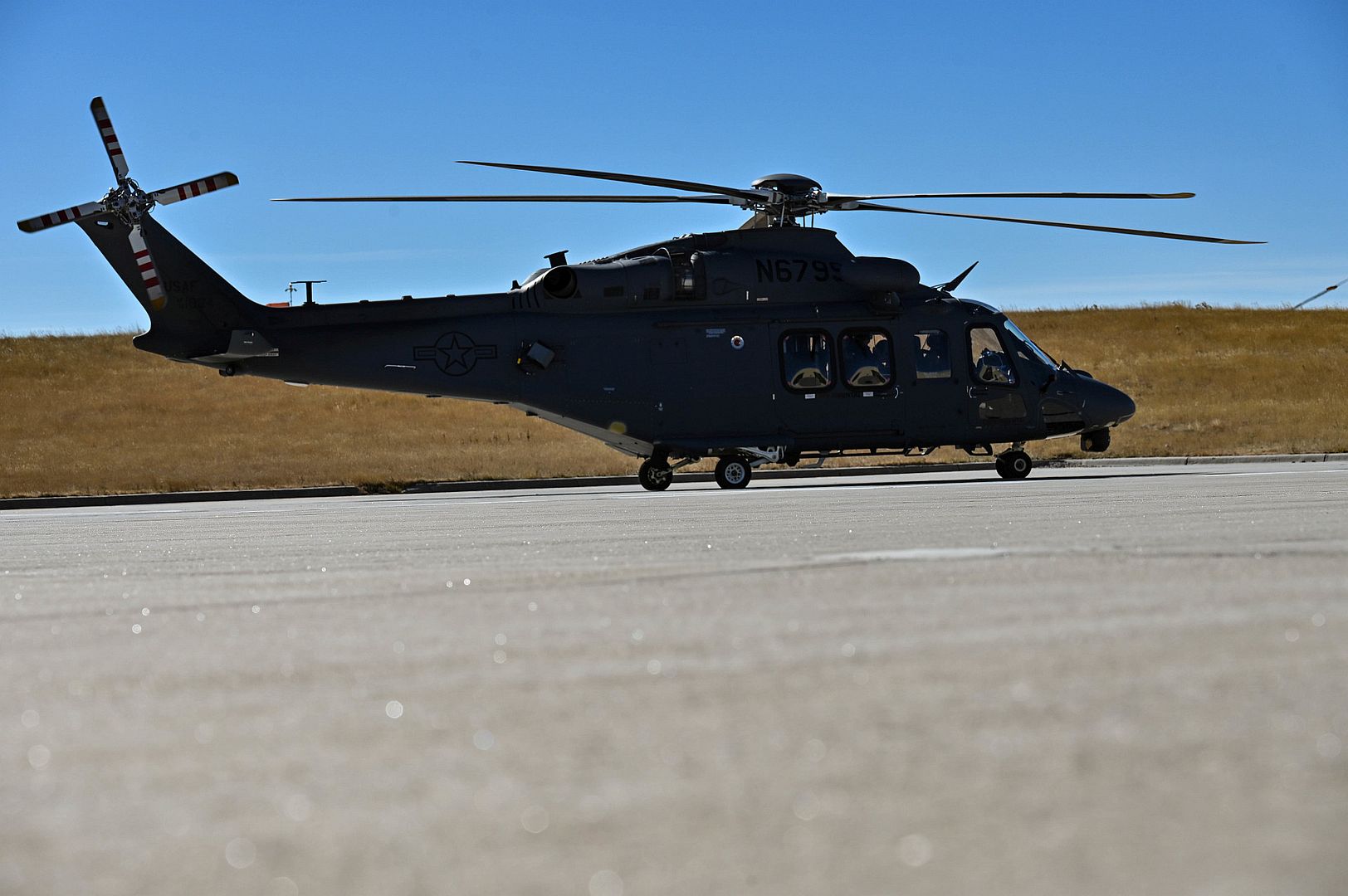
SOUTH CHINA SEA (Oct. 25, 2021) An EA-18G Growler, assigned to the “Gauntlets” of Electronic Attack Squadron (VAQ) 136, flies over Nimitz-class aircraft carrier USS Carl Vinson (CVN 70), Oct. 25, 2021. Carl Vinson Carrier Strike Group is on a scheduled deployment in the U.S. 7th Fleet area of operations to enhance interoperability through alliances and partnerships while serving as a ready-response force in support of a free and open Indo-Pacific region. (U.S. Navy photo by Mass Communication Specialist 1st Class Tyler R. Fraser)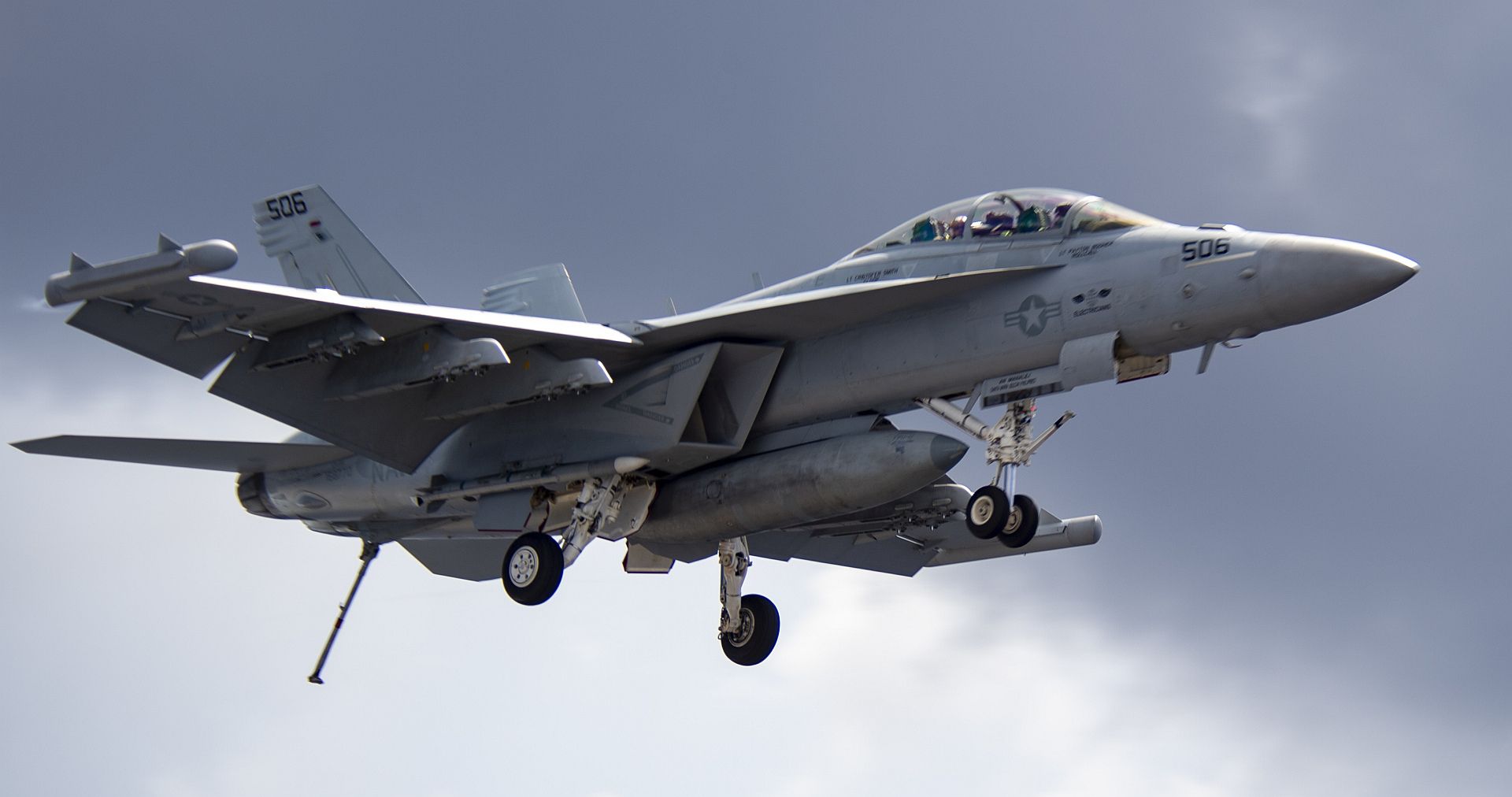
SOUTH CHINA SEA (Oct. 25, 2021) An F/A-18E Super Hornet, assigned to the “Stingers” of Strike Fighter Squadron (VFA) 113, taxis on the flight deck of Nimitz-class aircraft carrier USS Carl Vinson (CVN 70), Oct. 25, 2021. Carl Vinson Carrier Strike Group is on a scheduled deployment in the U.S. 7th Fleet area of operations to enhance interoperability through alliances and partnerships while serving as a ready-response force in support of a free and open Indo-Pacific region. (U.S. Navy photo by Mass Communication Specialist 1st Class Tyler R. Fraser)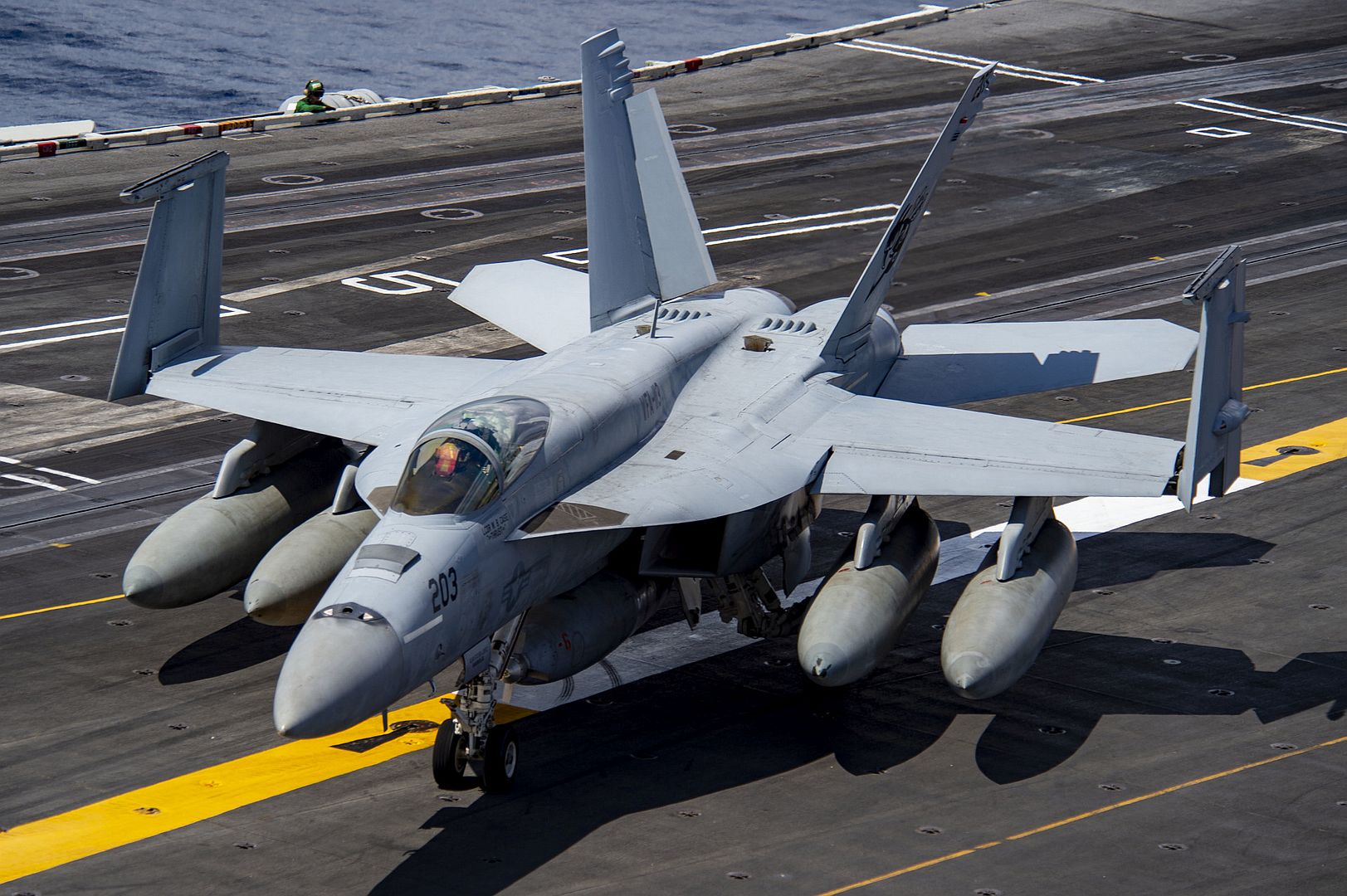
SOUTH CHINA SEA (Oct. 25, 2021) An F/A-18E Super Hornet, assigned to the “Stingers” of Strike Fighter Squadron (VFA) 113, prepares to launch off the flight deck of Nimitz-class aircraft carrier USS Carl Vinson (CVN 70), Oct. 25, 2021. Carl Vinson Carrier Strike Group is on a scheduled deployment in the U.S. 7th Fleet area of operations to enhance interoperability through alliances and partnerships while serving as a ready-response force in support of a free and open Indo-Pacific region. (U.S. Navy photo by Mass Communication Specialist 1st Class Tyler R. Fraser)
-
 Main AdminOct. 26, 2021
Main AdminOct. 26, 2021
TYNDALL AIR FORCE BASE, Fla. (AFNS) --
The 356th Fighter Squadron made history as the first F-35A Lightning II unit in the Pacific Air Forces to participate in an air-to-air weapons evaluation at Tyndall Air Force Base, Oct. 8-23. This is the second fifth-generation platform to be evaluated on live-fire air-to-air weapons employment in support of National Defense Strategy objectives.
Successful completion of Weapon System Evaluation Program East 22.01 marks another milestone for the 356th FS, as they take a crucial step towards becoming the first Initial Operational Capability F-35A squadron in PACAF.
“An F-35A stationed in the Pacific is one thing, an F-35A stationed in the Pacific that has successfully passed WSEP is another,” said Chief Master Sgt. Scott Grabham, 53rd Weapons Evaluation Group chief enlisted manager. “WSEP tests the effectiveness of their daily regime by injecting a deployed environment and live munitions. This is often the first time maintainers get a chance to load a live-munition onto their aircraft and the first time aircrew experience launching a missile at a threat representative, maneuvering target. This is strategic deterrence in the region that needs it most.”
Nine live missiles were fired during the exercise, all by first-time shooters to include the AIM-120 Advanced Medium Range Air-to-Air Missile along with the AIM-9X Sidewinder. Additionally, pilots had the opportunity to shoot the F-35A’s 25mm cannon for the first time against a QF-16-towed Aerial Target Gunnery System.
“All of this realistic training is evaluated by a hand-picked mix of experienced aircrew and maintainers empowered to commend and critique exercise participants,” Grabham said. “We compile missile-fire data from our newest platform (F-35A) with our latest missile variants and software, which helps refine tactical application of the weapons system, uncovers any issues with the platform/missile interface, and eventually feeds Air Force doctrine.”
The 53rd WEG operates a fleet of subscale aerial targets along with the only full-scale, threat-representative targets in the Department of Defense. These assets, coupled with the expansive airspace managed by the Eglin Test and Training Range, enable both short and long-range missile shots. WSEP events provide invaluable training to maintenance and aircrew members.
The next event will combine WSEP East 22.02 with exercise Checkered Flag 22-1, which is slated to take place Nov. 8-19 at Tyndall AFB.
(U.S. Air Force photos by Airman 1st Class Tiffany Price)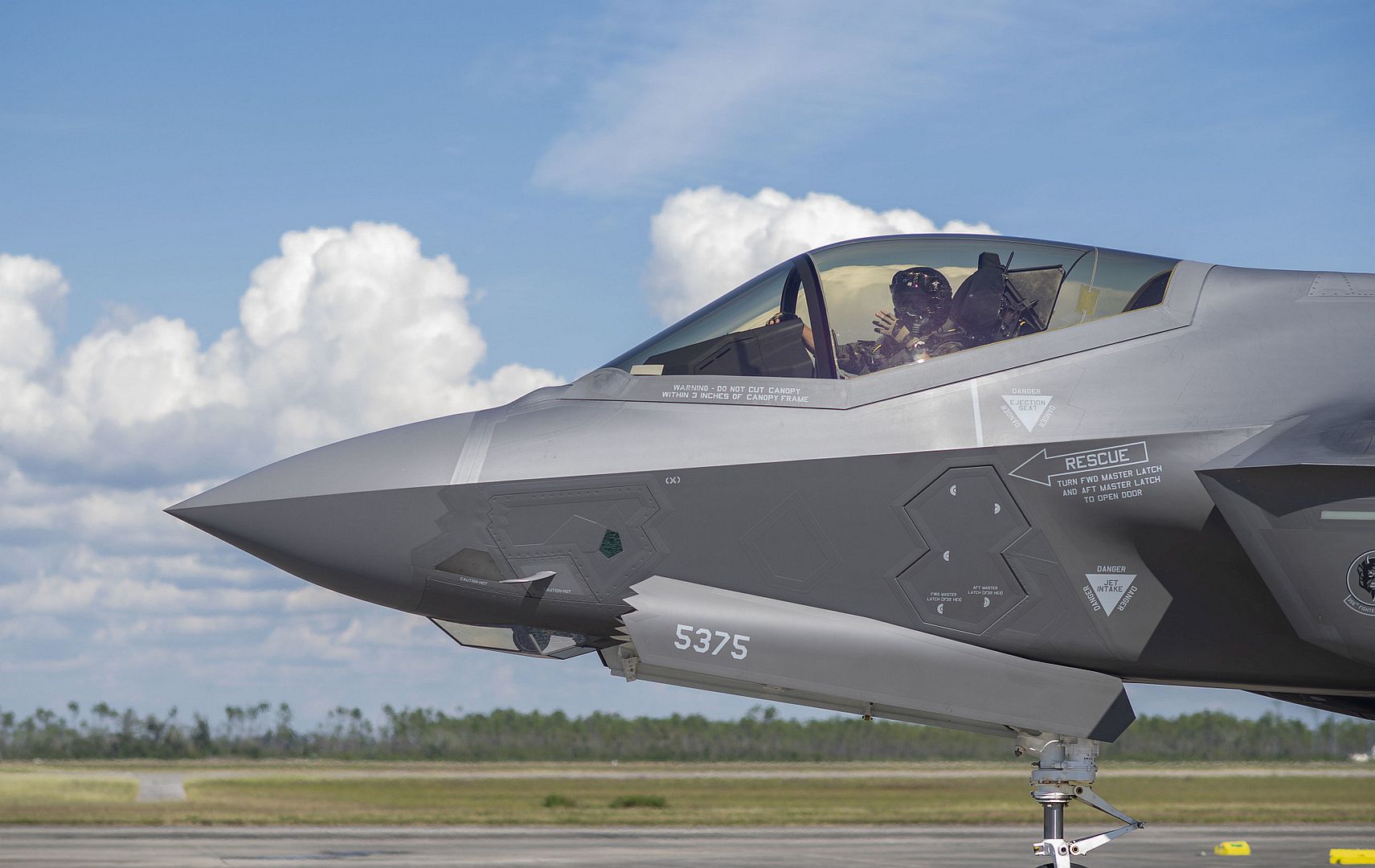
Ten female fighter pilots assigned to the 36th and 25th Fighter Squadrons, fly a historic all-female flight at Osan Air Base, Republic of Korea, Oct. 25, 2021. The benchmark flight the first time 10 female Airmen have planned, led and flown in a formation together while being assigned to Team Osan. Eight of the pilots were A-10 Thunderbolt II pilots and two were F-16 Fighting Falcon pilots. (U.S. Air Force photo by Tech. Sgt. Vernon Young Jr.)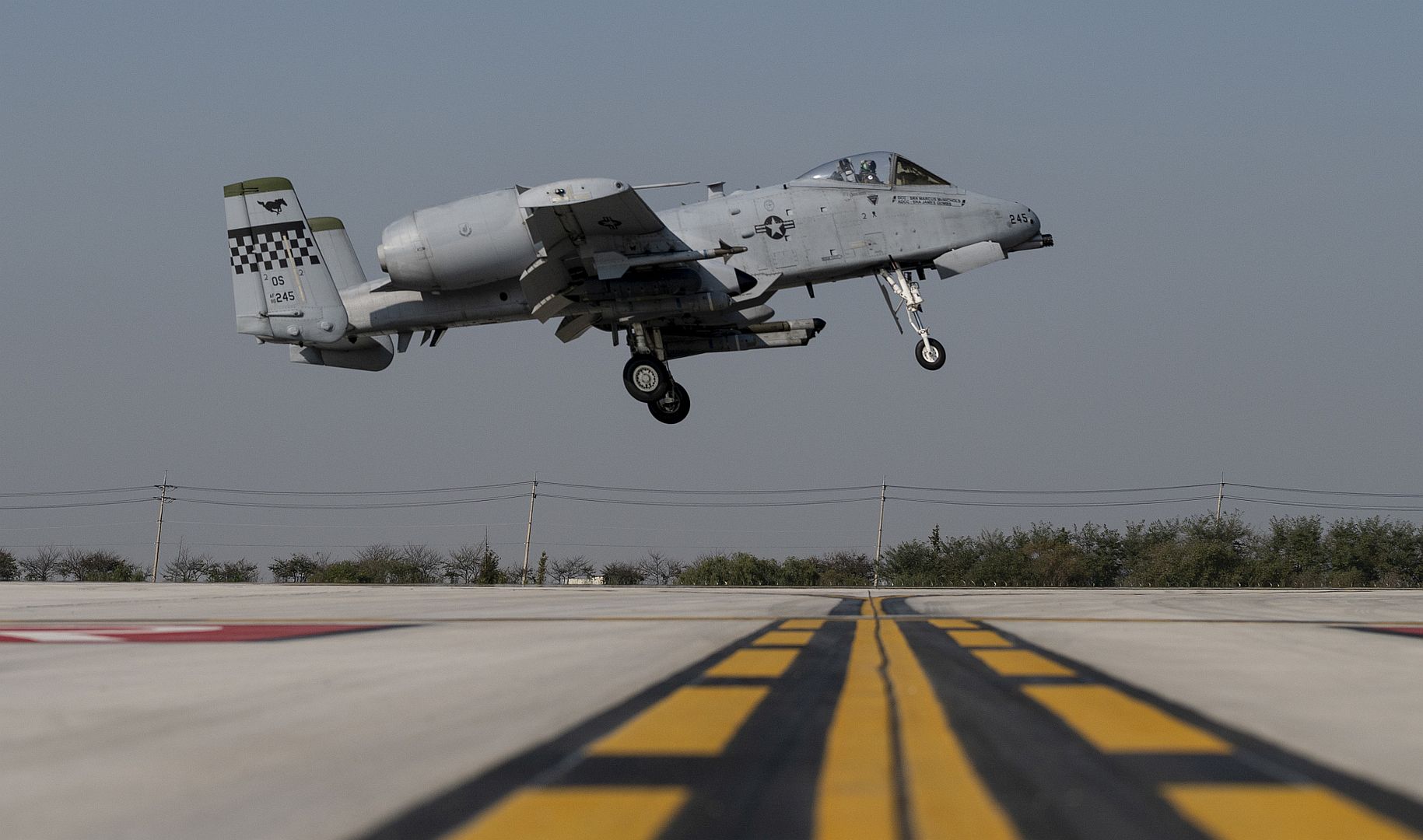
A Texan II T-6 fly’s though the air as it performs standard training routines to help shape pilots, at Laughlin Air Force Base, Texas, Oct. 26. 2021. The T-6 is the first aircraft pilots get to fly during their year long training. (U.S. Air Force photo by Senior Airman David Phaff)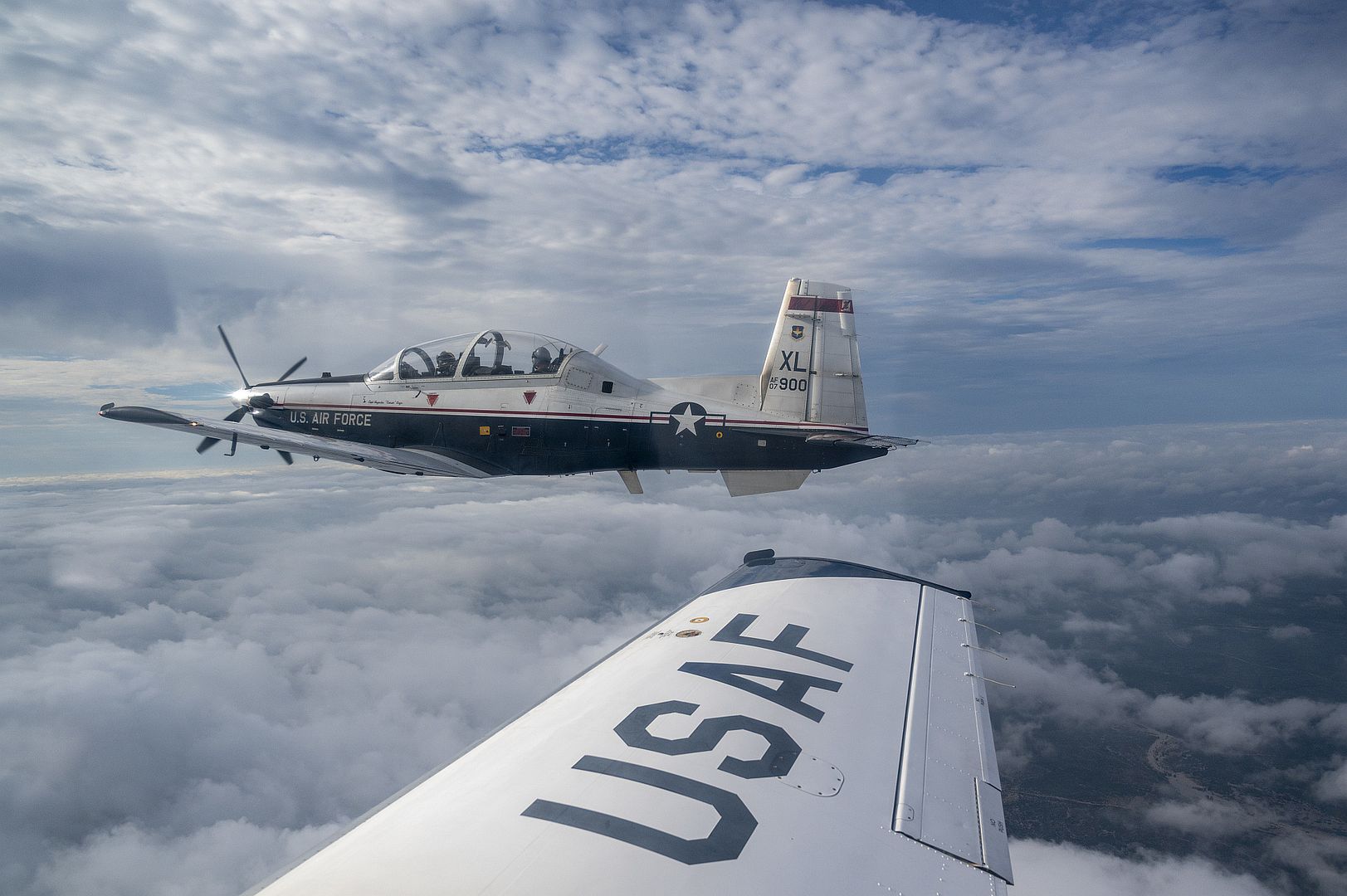
A member from the Royal Netherlands Air Force marshals an F-35 jet at the Vermont Air National Guard Base, South Burlington, Vermont, Oct. 25, 2021. The aircraft is one of eight RNAF jets to arrive as the Dutch military use the base as an intermediate stop for crew rest on their way to Edwards Air Force Base, California. (U.S. Air Force photo by Tech. Sgt. Richard Mekkri)
F-35As from Hill Air Force Base, Utah fly beside a KC-135R Stratotanker during air refueling operations over Utah Oct. 26, 2021. The flight was part of the Employer Support of the Guard and Reserve (ESGR) program, a DOD program designed to promote cooperation and understanding between Guard & Reserve service members and their employers. Civilian employers were able to watch the air refueling operation as well as receive mission briefings detailing the various missions of the Utah Air National Guard. (U.S. Air National Guard photo by Master Sgt. John Winn)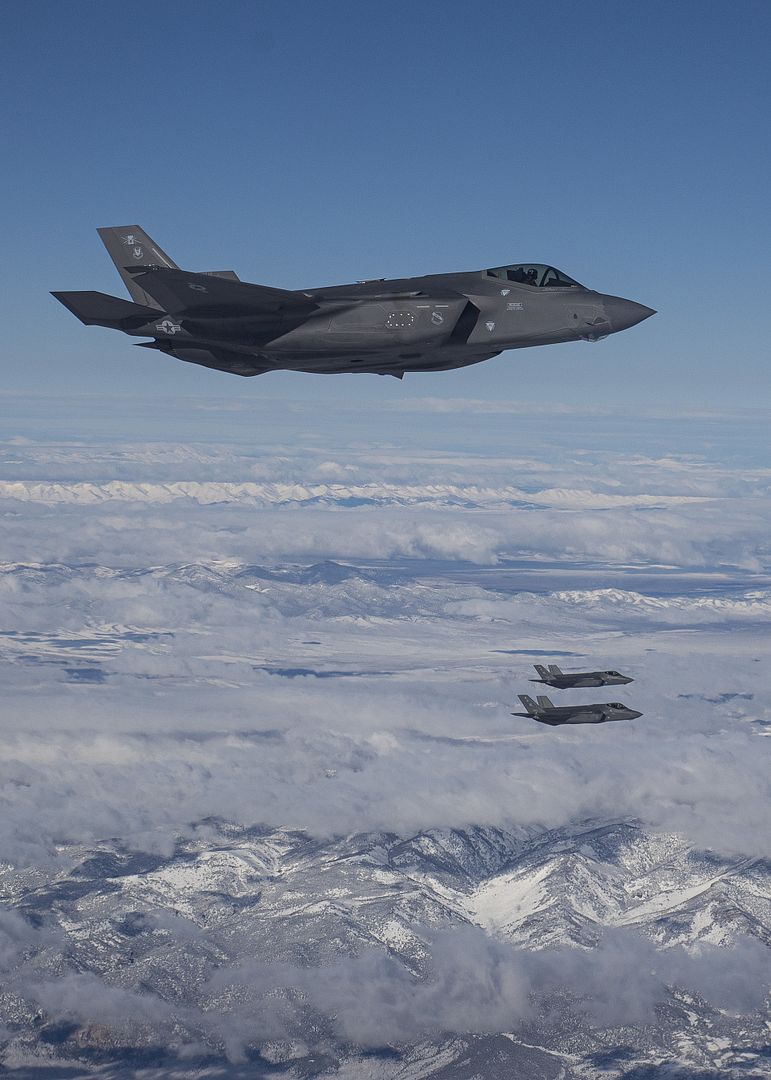
A C-5M Super Galaxy taxis at Dover Air Force Base, Delaware, Oct. 26, 2021. The C-5M Super Galaxy is a strategic transport aircraft and is the largest aircraft in the Air Force inventory. (U.S. Air Force photo by Tech. Sgt. Nicole Leidholm)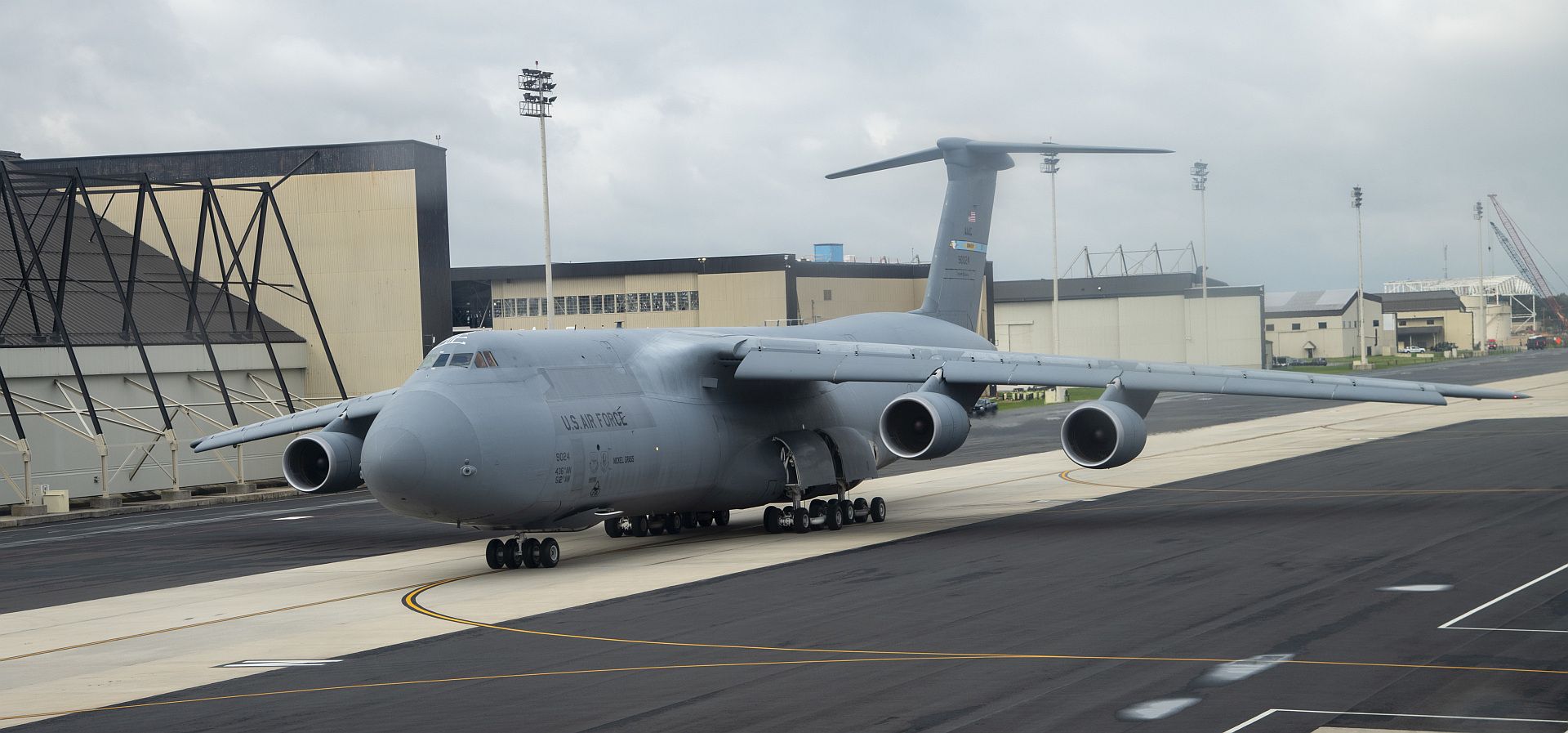
SOUTH CHINA SEA (Oct. 25, 2021) An MH-60S Sea Hawk, assigned to the “Black Knights” of Helicopter Sea Combat Squadron (HSC) 4, approaches the flight deck of Nimitz-class aircraft carrier USS Carl Vinson (CVN 70), Oct. 25, 2021. Carl Vinson Carrier Strike Group is on a scheduled deployment in the U.S. 7th Fleet area of operations to enhance interoperability through alliances and partnerships while serving as a ready-response force in support of a free and open Indo-Pacific region. (U.S. Navy photo by Mass Communication Specialist 3rd Class Jeff D. Kempton)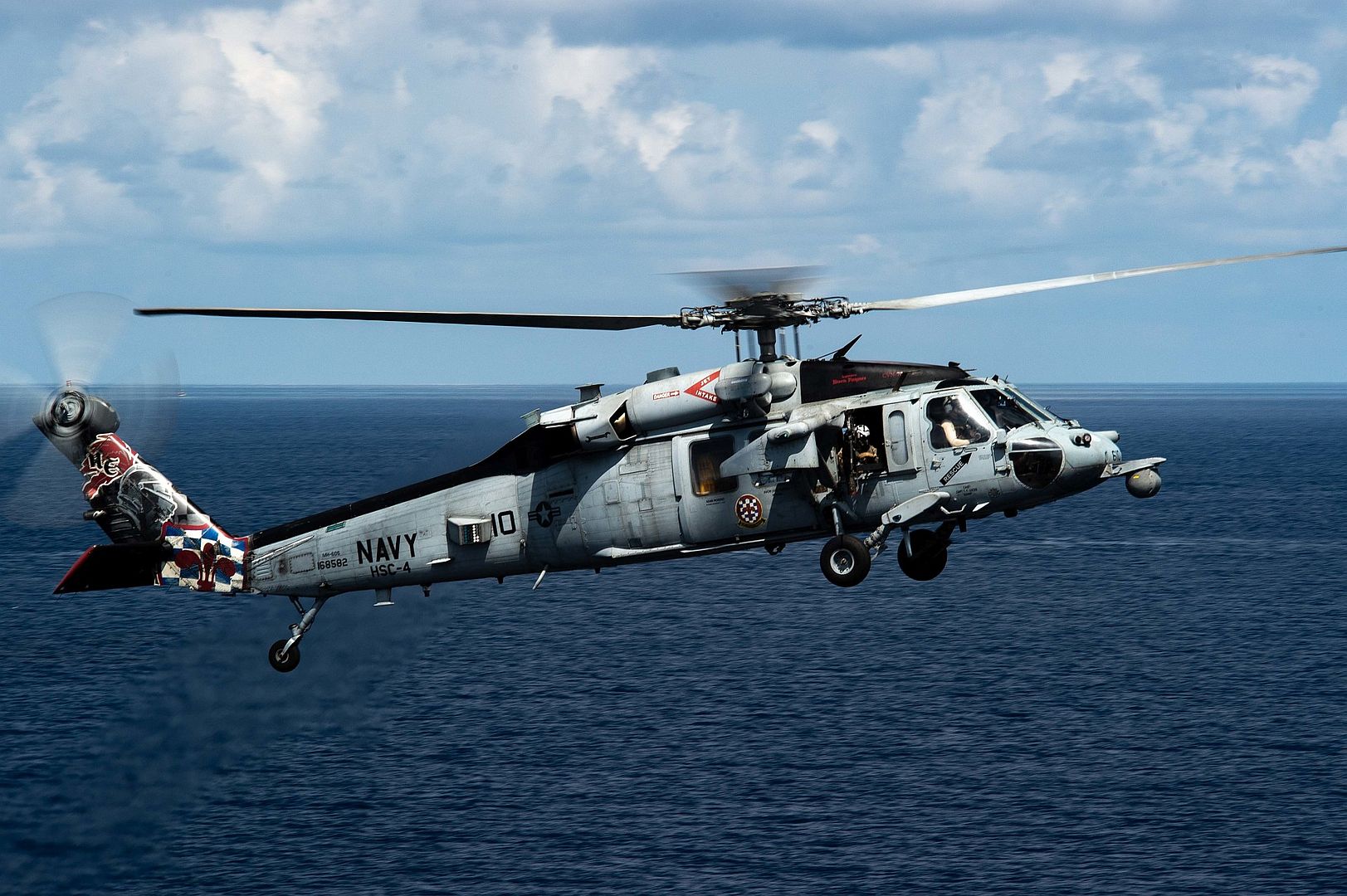
Mobile, Alabama, USA, October 26, 2021 - Breeze Airways (Breeze) unveiled its first of 80 A220-300 aircraft on order during a preview event at the Airbus A220 final assembly line in Mobile, Alabama. The aircraft is expected to be delivered to Breeze in the coming weeks.
Breeze’s A220-300 cabin is configured in a comfortable two-class 126 seat premium cabin layout comprising 36 business and 90 economy seats fitted with in-seat power and USB ports for all passengers.
Breeze will offer superior single-aisle comfort on board its brand new A220s, such as the widest seats, the largest windows and more overhead stowage space per passenger.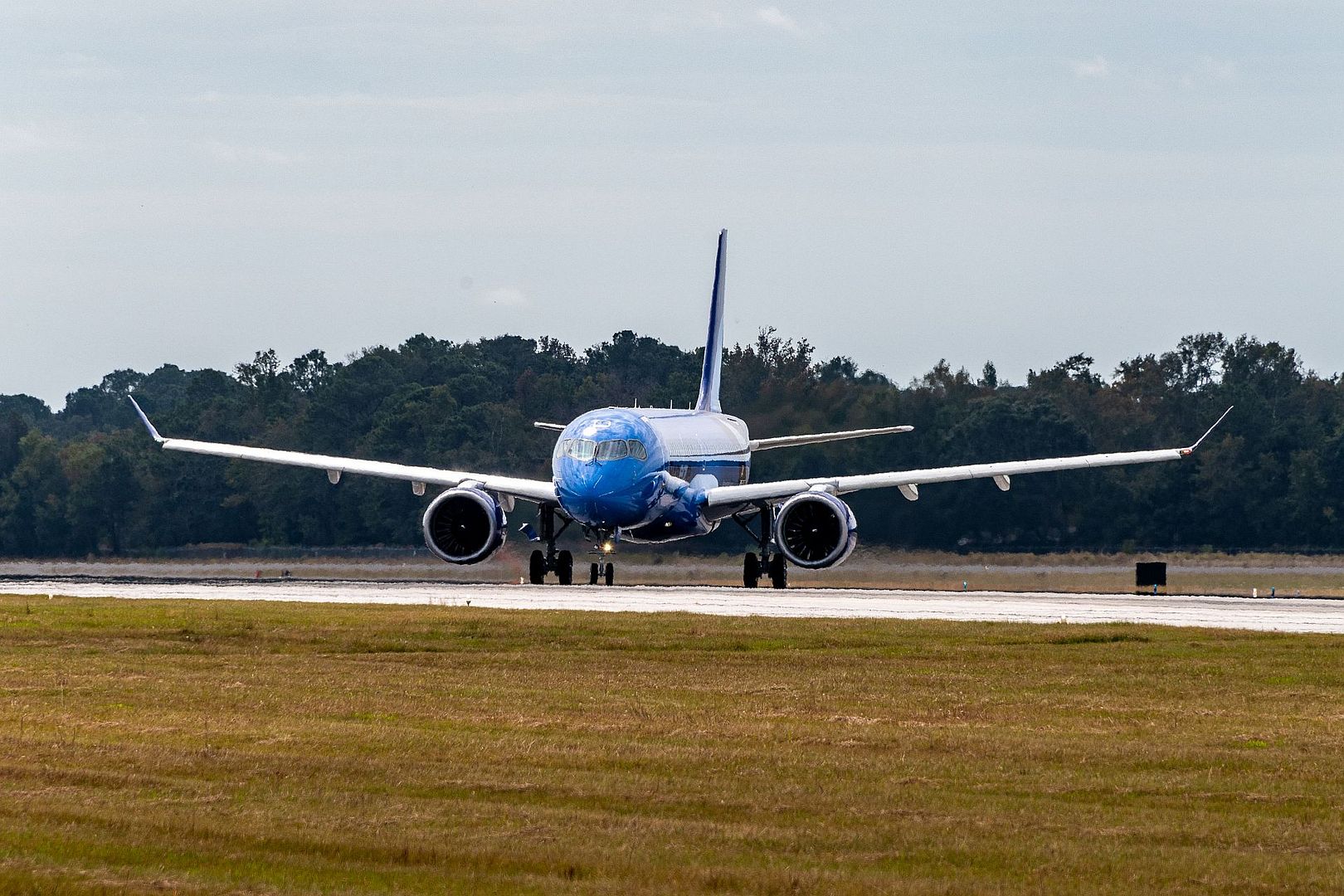
The A220’s superior efficiency will support the new airline’s business objectives to deliver a great travel experience to its passengers, with low fares and high flexibility. Breeze is expected to provide non-stop service between underserved routes across the U.S. at affordable fares - offering point-to-point flights from smaller secondary airports, bypassing hubs for shorter travel times.
Breeze started airline operations in May 2021. This first A220 is expected to enter service in Q2 2022.
The A220 is the only aircraft purpose-built for the 100-150 seat market and brings together state-of-the-art aerodynamics, advanced materials and Pratt & Whitney’s latest-generation geared turbofan engines. With a range of up to 3,450 nm (6,390 km), the A220 gives airlines added operational flexibility. The A220 delivers up to 25% lower fuel burn and CO2 emissions per seat compared to previous generation aircraft, and 50% lower NOx emissions than industry standards. In addition, the aircraft noise footprint is reduced by 50% compared to previous generation aircraft - making the A220 a good neighbour around airports.
As of the end of September 2021, over 170 A220s have been delivered to 12 operators worldwide.
-
 Main AdminU. S. Marine Corps Col. Nathan M. Miller, commanding officer of Marine Fighter Attack Training Squadron (VMFAT) 101, Marine Aircraft Group 11, 3rd Marine Aircraft Wing, prepares for takeoff at Corps Air Station Miramar, California, Oct. 25, 2021. VMFAT-101 flew the F/A-18D Hornet to Range 2507 for an ordnance detonation exercise. This detonation exercise afforded VMFAT-101 the opportunity to enhance the future of naval aviation as they employed aircraft with capabilities of targeting and destroying air, ground and maritime threats. (U. S. Marine Corps Photo by Lance Cpl. Alondra Ortiz-Montejano)
Main AdminU. S. Marine Corps Col. Nathan M. Miller, commanding officer of Marine Fighter Attack Training Squadron (VMFAT) 101, Marine Aircraft Group 11, 3rd Marine Aircraft Wing, prepares for takeoff at Corps Air Station Miramar, California, Oct. 25, 2021. VMFAT-101 flew the F/A-18D Hornet to Range 2507 for an ordnance detonation exercise. This detonation exercise afforded VMFAT-101 the opportunity to enhance the future of naval aviation as they employed aircraft with capabilities of targeting and destroying air, ground and maritime threats. (U. S. Marine Corps Photo by Lance Cpl. Alondra Ortiz-Montejano)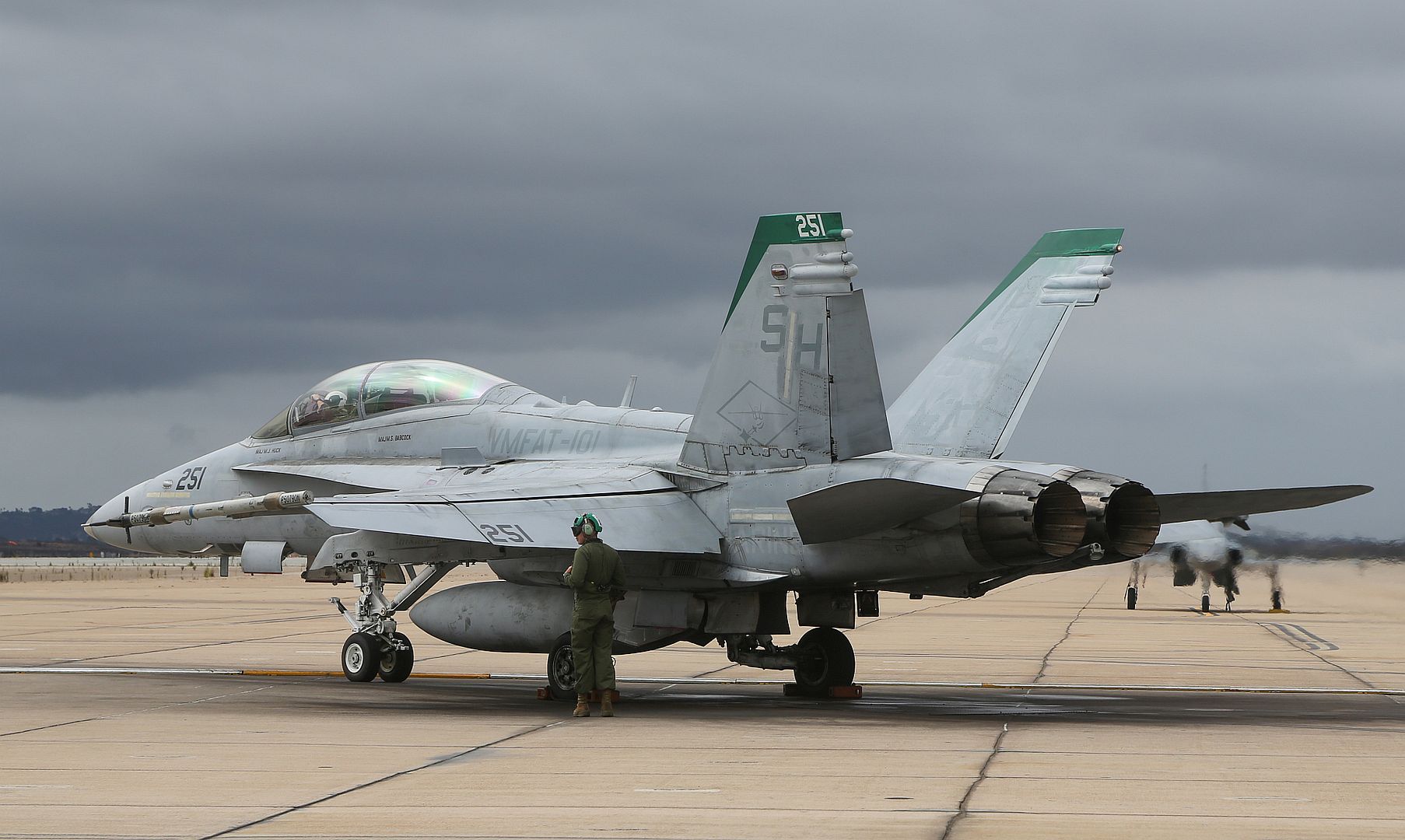
NAVAL AIR FACILITY ATSUGI, Japan (Oct. 26, 2021) Naval Air Facility (NAF) Atsugi emergency response teams participate with Japan Maritime Self-Defense Force (JMSDF) emergency response teams during a joint airfield training exercise conducted onboard the installation, Oct. 26, 2021. The exercise was an emergency aircraft mishap scenario performed to demonstrate the collaborative capabilities by both forces in the event of a real-life potential catastrophe. (U.S. Navy photo by Mass Communication Specialist 3rd Class Rafael Avelar)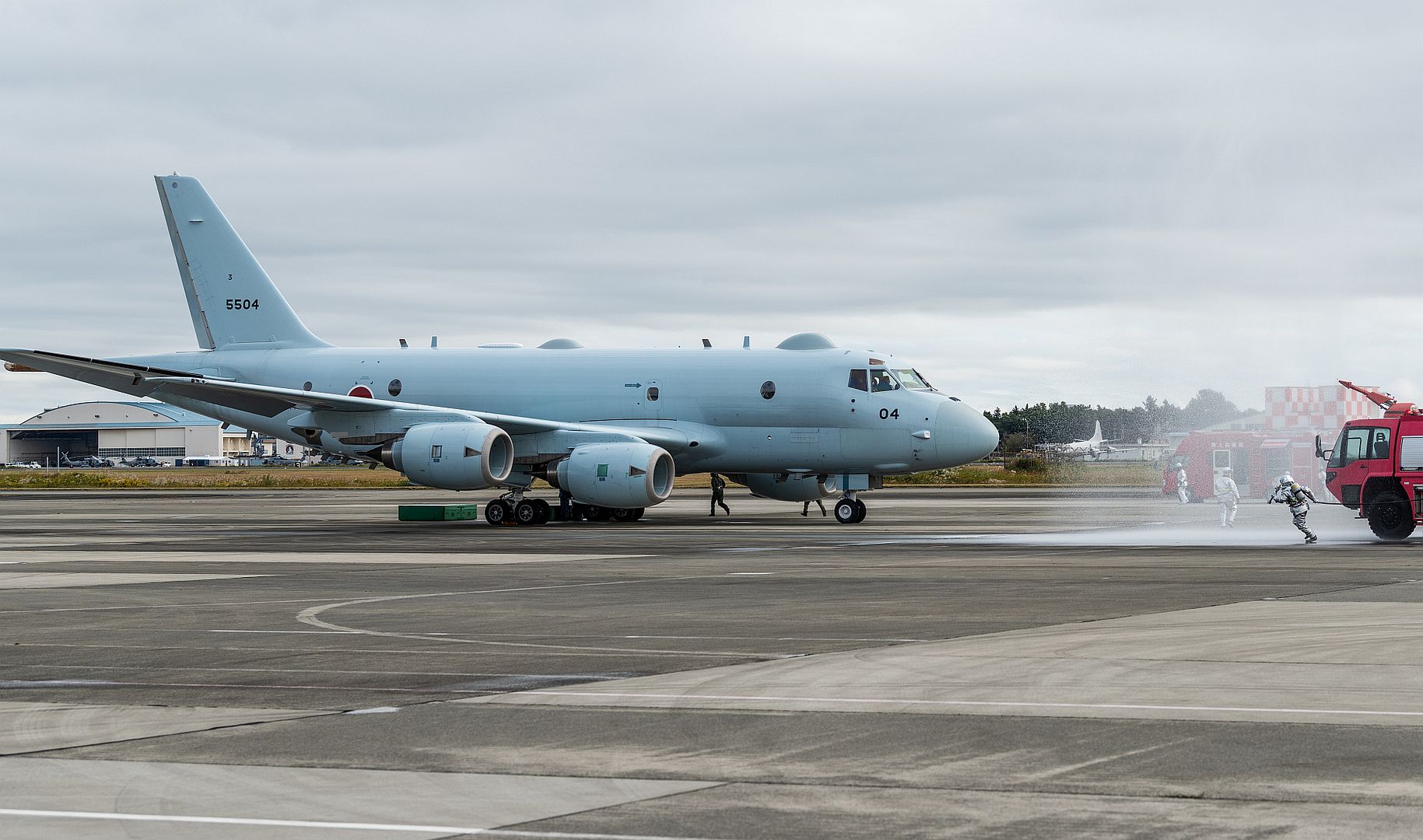
YOKOSUKA, Japan (October 26, 2021) – Secretary of the Navy, Carlos Del Toro and Mrs. Betty Del Toro, ride on a U.S. Air Force UH-1N Huey assigned to the 459th Airlift Squadron, after touring Commander Fleet Activities Yokosuka’s (CFAY) ships and facilities and meeting with personnel. For more than 75 years, CFAY has provided, maintained, and operated base facilities and services in support of the U.S. 7th Fleet’s forward-deployed naval forces, tenant commands, and thousands of military and civilian personnel and their families. (U.S. Navy photo by Tetsuya Morita)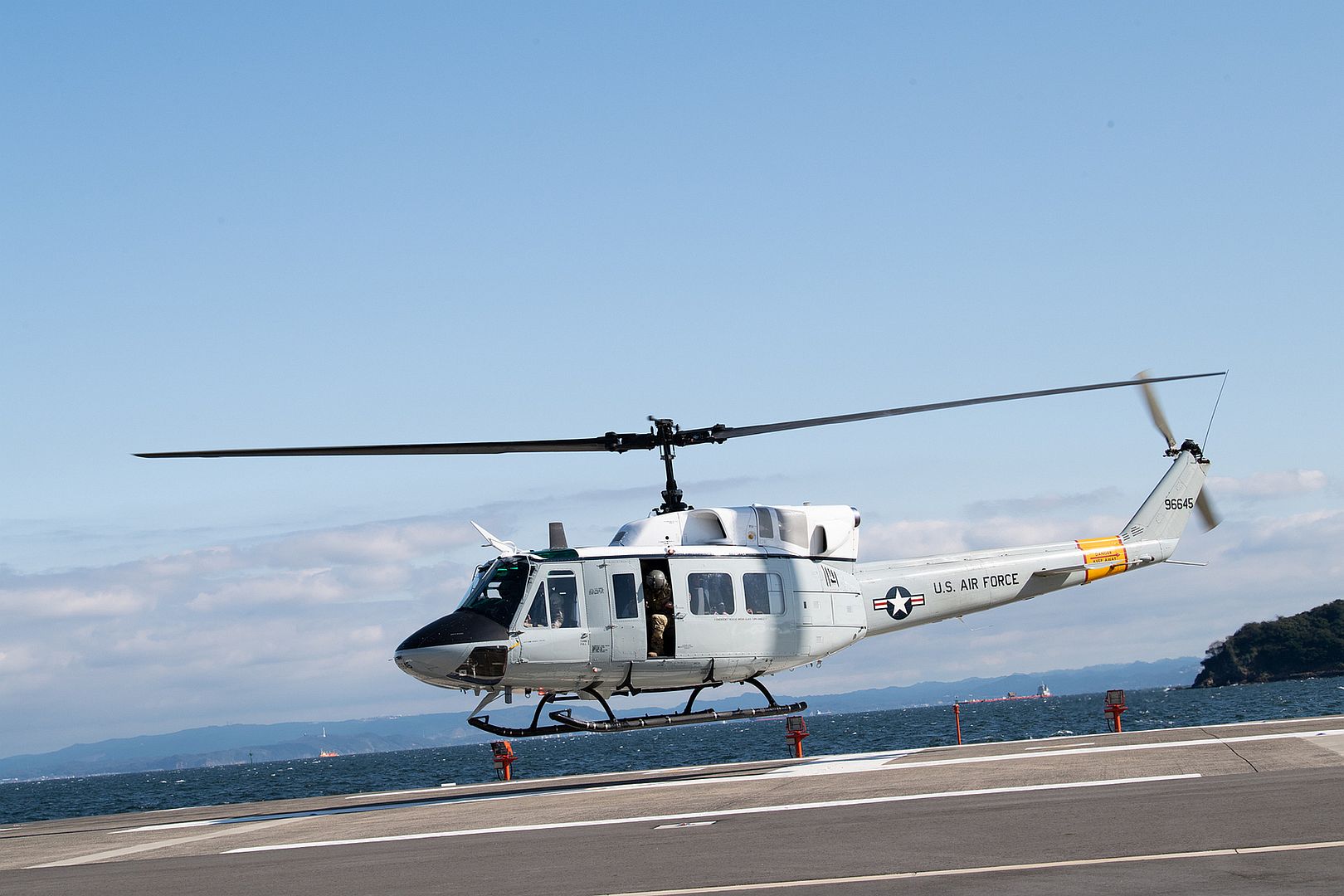
Air Force Staff Sgt. Anthony Mahon, 732nd Air Mobility Squadron, signals a Douglas DC-6 pilot to hold short prior to departure during the Nodal Lightning at Ted Steven International Airport in Anchorage, Alaska, Oct. 19, 2021. he Nodal Lightning exercise allowed the 732nd AMS personnel to respond efficiently and effectively to contested or degraded contingency environments.
(Photo by: Sheila deVera )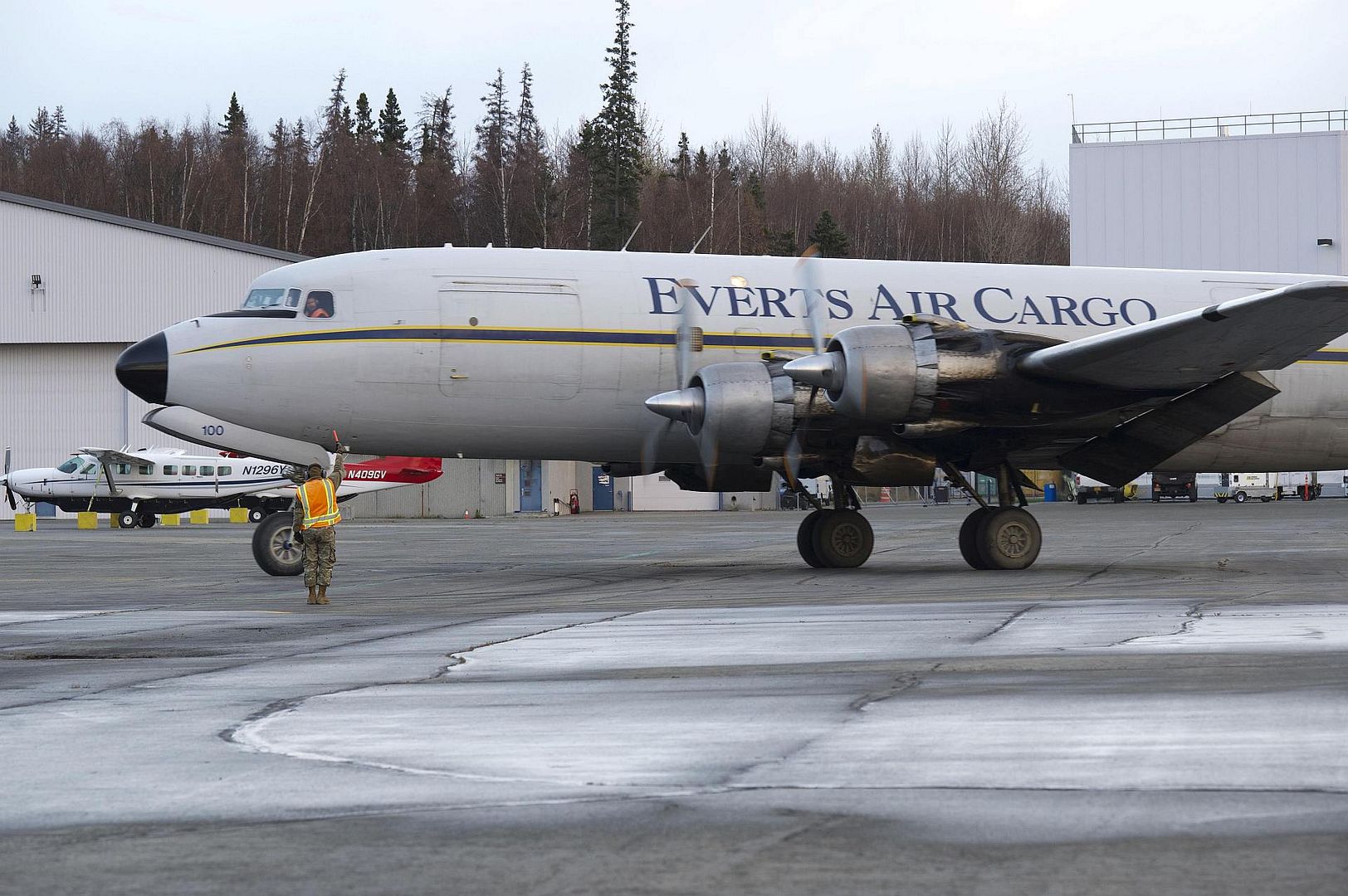
A B-52H Stratofortress takes off from Barksdale Air Force Base, Louisiana, Oct. 21, 2021. Maintenance teams, aircrew, and Airmen across the 2nd Bomb Wing participated in a readiness exercise to showcase nuclear combat capability. (U.S. Air Force photo by Staff Sgt. Christopher Tam)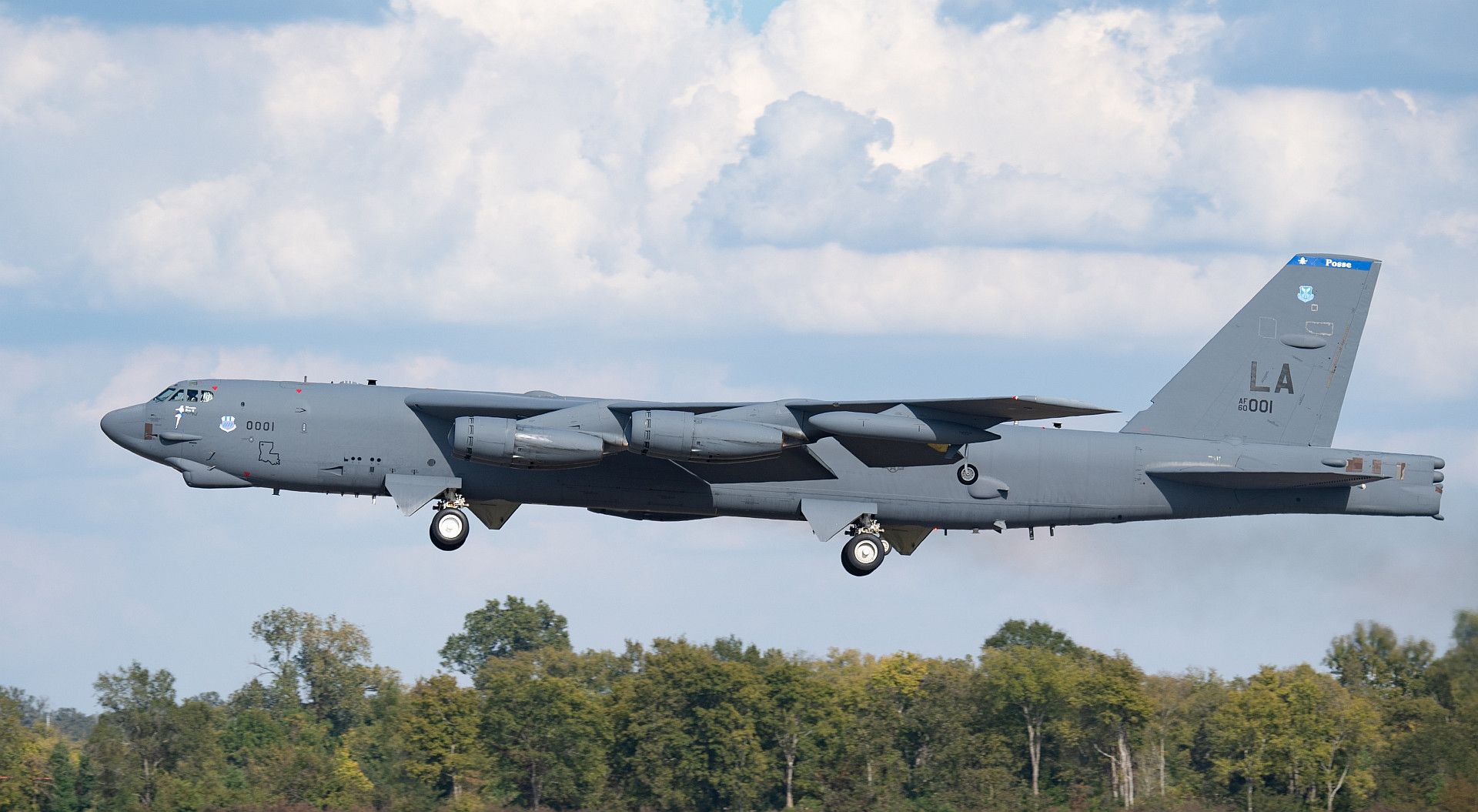
Rome 26 October 2021
The Chief of Staff of the Italian Air Force, General Alberto Rosso, and the Chief of Staff of the Japan Air Self-Defense Force (JASDF), General Shunji Izutsu, have signed today an important technical arrangement on the training of Japanese military pilots.
The technical arrangement was signed in "distance mode”, through a connection between the offices of the two Generals in Italy and Japan. Thanks to this agreement, the Japanese military pilots will take part in the advanced training courses (Phase IV) at International Flight Training School (IFTS). The IFTS is a joint project made by Italian Air Force and Leonardo, that includes also an industrial partnership between Leonardo and CAE for the maintenance/support of the aircraft fleet and simulators.
Japan's interest in the training capabilities developed by the Italian Air Force was consolidated after a series of discussions and initiatives that culminated in a visit to the 61st Wing at Lecce-Galatina Air Force Base on September 2020. This was when a JASDF delegation was able to appreciate the excellence of the Italian Air Force’s training system, particularly the Integrated Training System developed by Leonardo and centered around the T-346A aircraft.
The newly signed technical arrangement enables a gradual increase in JASDF student pilot intake over the forthcoming years. In the future, Japanese instructors could be welcomed into the school to work side-by-side with Italian colleagues, in an approach that favours the exchange of experiences, the optimization and standardization of procedures, to benefit all the operators in the sector.
Japan is the third country, after Qatar and Germany, to choose the International Flight Training School (IFTS) for its pilots.
The Chief of Staff of the Italian Air Force, General Alberto Rosso, before signing the document, underlined its profound significance: “Today is an important and historical date. I am proud and honoured to be able to sign this agreement, which will outline for both countries the track for growing together, for sharing professional skills, allowing our staff to work in close contact, synergy and friendship. This is another important step in the collaboration between our Air Forces: we are already cooperating with great success in many areas, for example having common platforms such as the F-35 aircraft and the KC-767 tanker. […] The distance that separates us today is geographical only, but our countries are close, joined in harmony on many themes and historically connected. We remember, for example, the “Rome - Tokyo flight” of the pioneer Arturo Ferrarin, which we celebrated last week in his hometown of Thiene (North Italy): a historic undertaking and also a powerful symbol of the strong and lasting bond that joins our two countries."
Chief of Staff of the Japan Air Self-Defense Force (JASDF), General Shunji Izutsu, commented: “Signing today the technical arrangement, I deeply appreciate your and your staff’s extensive support and cooperation. I believe that this is a significant step to deepen defense cooperation and exchanges between the Koku-Jieitai (Japan Air Self-Defense Force) and Italian Air Force. This is one of your great achievements. Let me extend my heartfelt respect to your achievements and gratitude to your contribution to Japan-Italy relationship. I really wish your continuous success and prosperity, and progress for the Italian Air Force.”
The International Flight Training School (IFTS) is the result of a strategic collaboration between the Italian Air Force and Leonardo, which is aimed at the establishment of an advanced flight training centre based in Italy. It is a virtuous example of collaboration and public-private synergy, capable of satisfying the growing demand of partner countries for the training of their pilots at highest standards. The project is intended to double today’s training offer by creating a new training center distributed between the bases of Galatina and Decimomannu, in Sardinia, where the new IFTS Campus is under construction. It will be a real flight academy capable of hosting students, technical staff and featuring accommodations as well as recreational areas, a cafeteria, sports facilities. Its logistic-maintenance infrastructures will assure the operations of the fleet of 22 M-346 (designated T-346A by the Italian Air Force) airplane fleet. An entire building will be home to the Ground Based Training System (GBTS), with classrooms and the installation of a modern training system based on the latest generation simulation devices.
The partnership between Italian Air Force and Leonardo combined the Air Force’s established know-how and Leonardo’s excellence in military pilot integrated training systems maximizing cost-effectiveness for Italian Air Force, whilst strengthening the international role played by Leonardo as a Training Service Provider.”
-
 Main AdminTwo F-35A Lightning II aircraft stand alongside three F-22 Raptors at Joint Base Elmendorf-Richardson, Alaska, Oct. 26, 2021. Maintainers from JBER and Eielson Air Force Base gathered to teach each other maintenance techniques for their respective aircraft, developing the teams’ Agile Combat Employment capabilities. (U.S. Air Force photo by Airman 1st Class Patrick Sullivan)
Main AdminTwo F-35A Lightning II aircraft stand alongside three F-22 Raptors at Joint Base Elmendorf-Richardson, Alaska, Oct. 26, 2021. Maintainers from JBER and Eielson Air Force Base gathered to teach each other maintenance techniques for their respective aircraft, developing the teams’ Agile Combat Employment capabilities. (U.S. Air Force photo by Airman 1st Class Patrick Sullivan)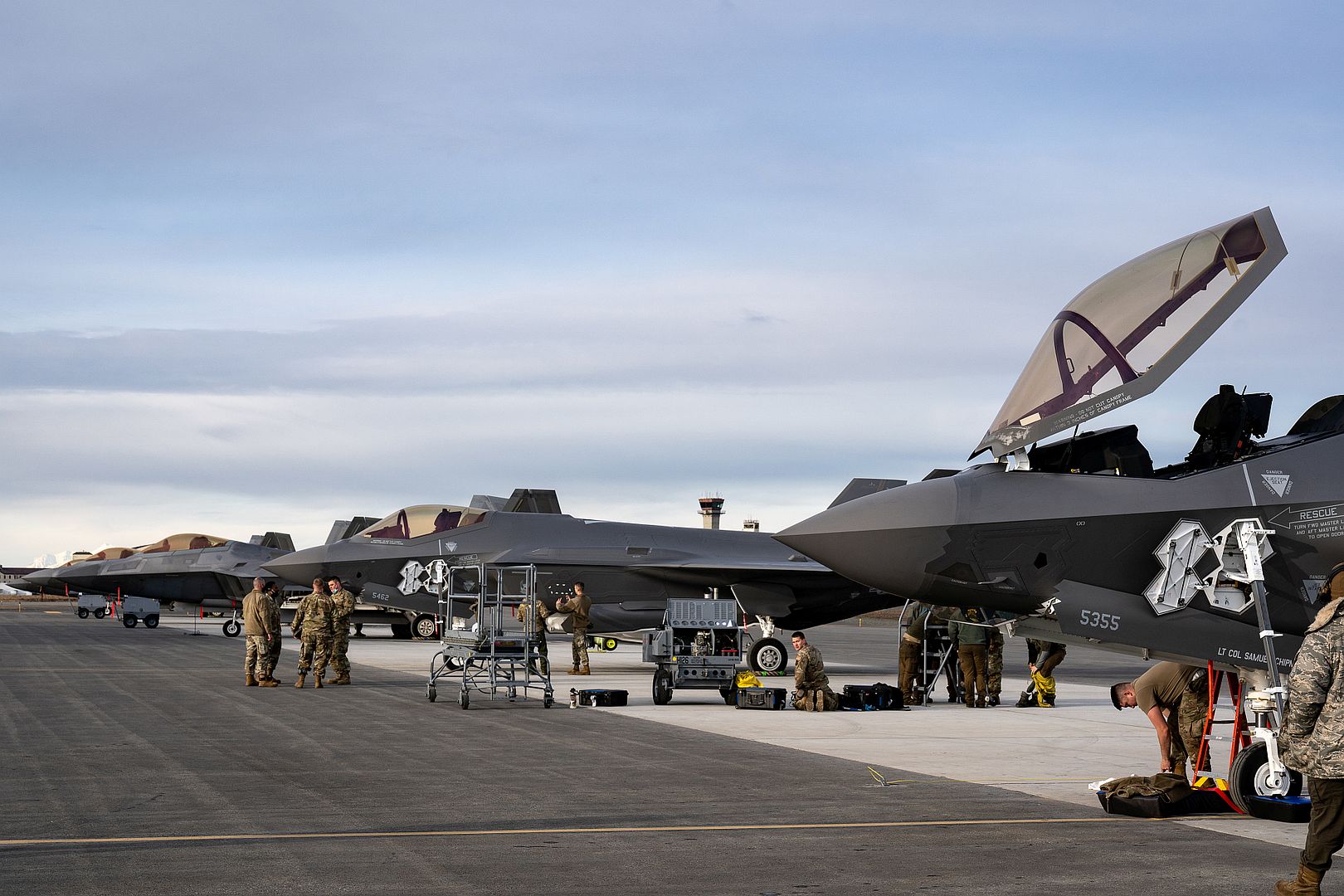
U.S. Air Force F-16 Fighting Falcons, assigned to the 332nd Air Expeditionary Wing, taxi down the flightline at Al Dhafra Air Base, United Arab Emirates, Oct 26, 2021. The F-16s arrived at ADAB to participate in an Agile Combat Empolyment exercise designed to demonstrate the ability to rapidly deploy forces and operate in austere locations around the world on short notice. (U.S. Air Force photo by Senior Airman Nicholas Ross)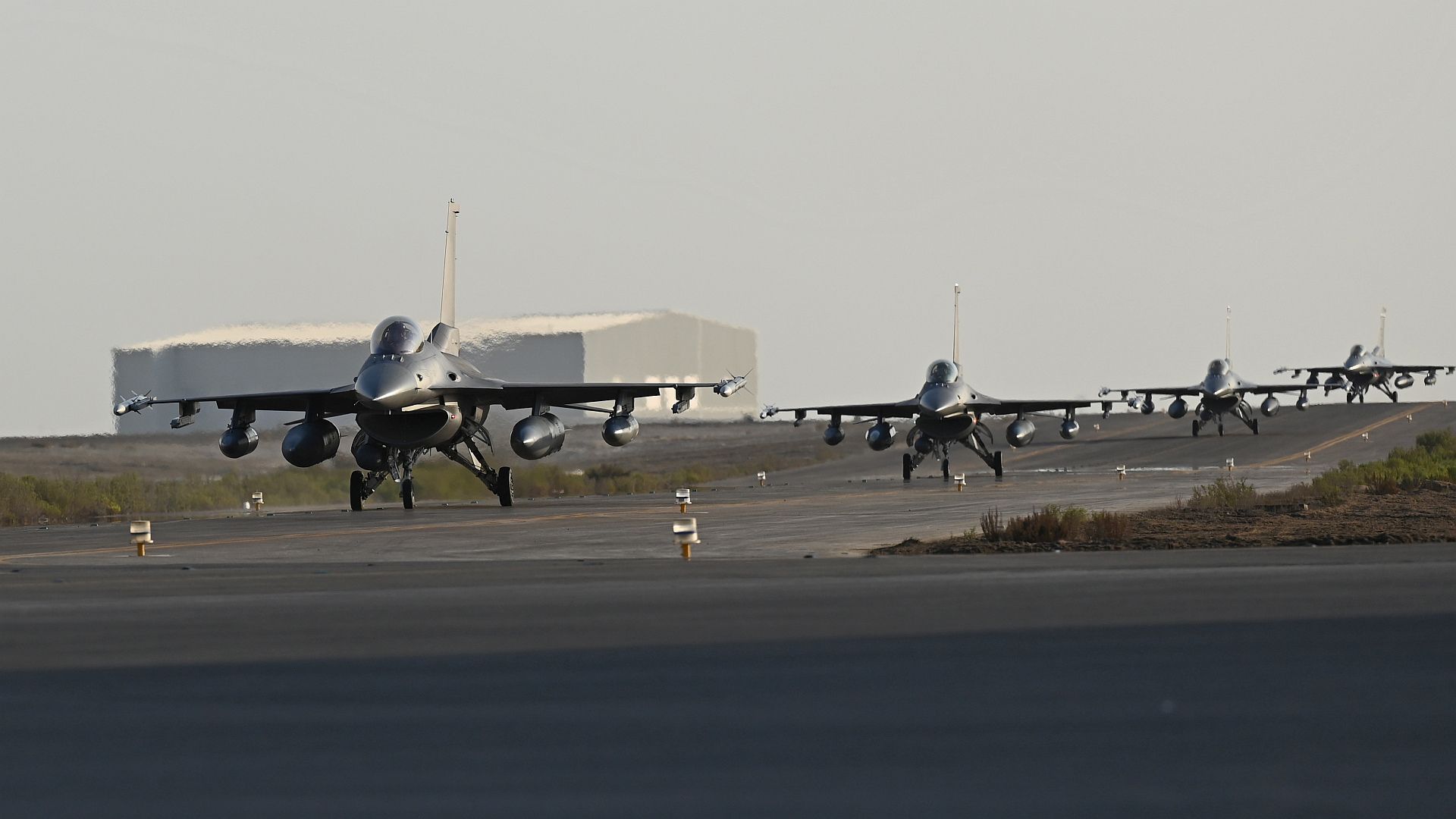
An E-2D Hawkeye aircraft assigned to Carrier Airborne Early Warning Squadron (VAW) 120 prepares to launch from the aircraft carrier USS George H.W. Bush (CVN 77). GHWB is operating in the Atlantic Ocean in support of naval operations to maintain maritime stability and security in order to ensure access, deter aggression and defend U.S., allied and partner interests. (U.S. Navy photo by Mass Communication Specialist 3rd Class Brandon Roberson)
SOUTH CHINA SEA (Oct. 28, 2021) Sailors assigned to the “Gauntlets” of Electronic Attack Squadron (VAQ) 136 prepare an EA-18G Growler for flight operations on the flight deck of Nimitz-class aircraft carrier USS Carl Vinson (CVN 70), Oct. 28, 2021. Carl Vinson Carrier Strike Group is on a scheduled deployment in the U.S. 7th Fleet area of operations to enhance interoperability through alliances and partnerships while serving as a ready-response force in support of a free and open Indo-Pacific region. (U.S. Navy photo by Mass Communication Specialist 3rd Class Tyler Wheaton)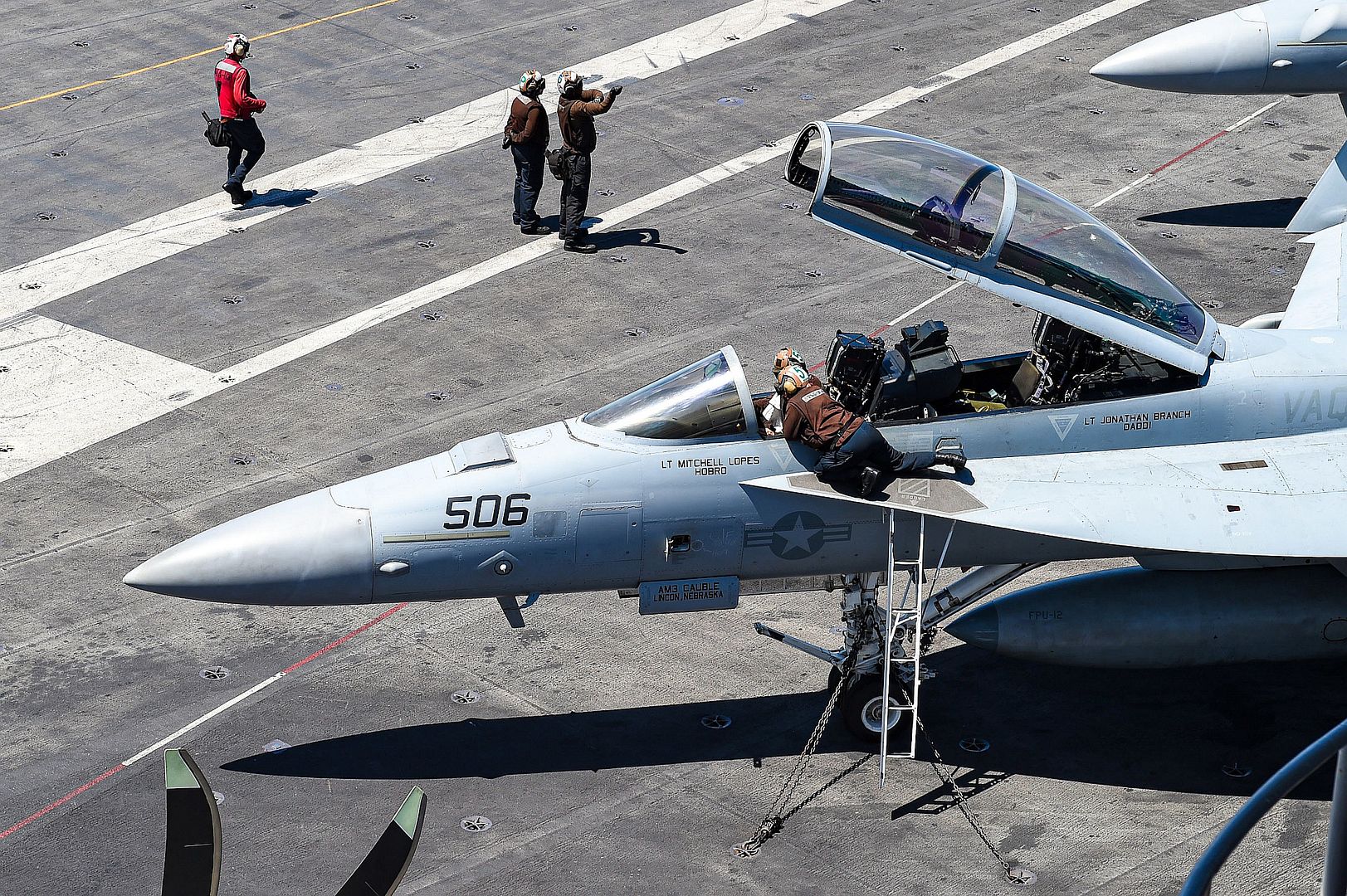
A B-52 Stratofortress from Minot Air Force Base, North Dakota, arrived at Sheppard AFB, Texas, Oct. 21, 2021, so undergraduate pilot training and aircraft maintenance technical training students could get an up-close look at an operational version of the aircraft. The flight crew of the Stratofortress provided capability briefings to the undergraduate pilot training students, and enlisted crew talked to technical training students about the aircraft. (U.S. Air Force photo by Staff Sgt. Robert L. McIlrath)
Blue Flag, hosted by and held in Israel, is a biennial exercise, which features aircraft from several international partners to showcase coalition interoperability and strength while improving multinational partnerships. (U.S. Air Force photos by Tech. Sgt. Maeson L. Elleman)
An Indian Air Force Mirage 2000 ITI from 1 Squadron "Tigers" takes off from the flightline of Uvda Air Base, Israel, during Blue Flag 21 on Oct. 18, 2021.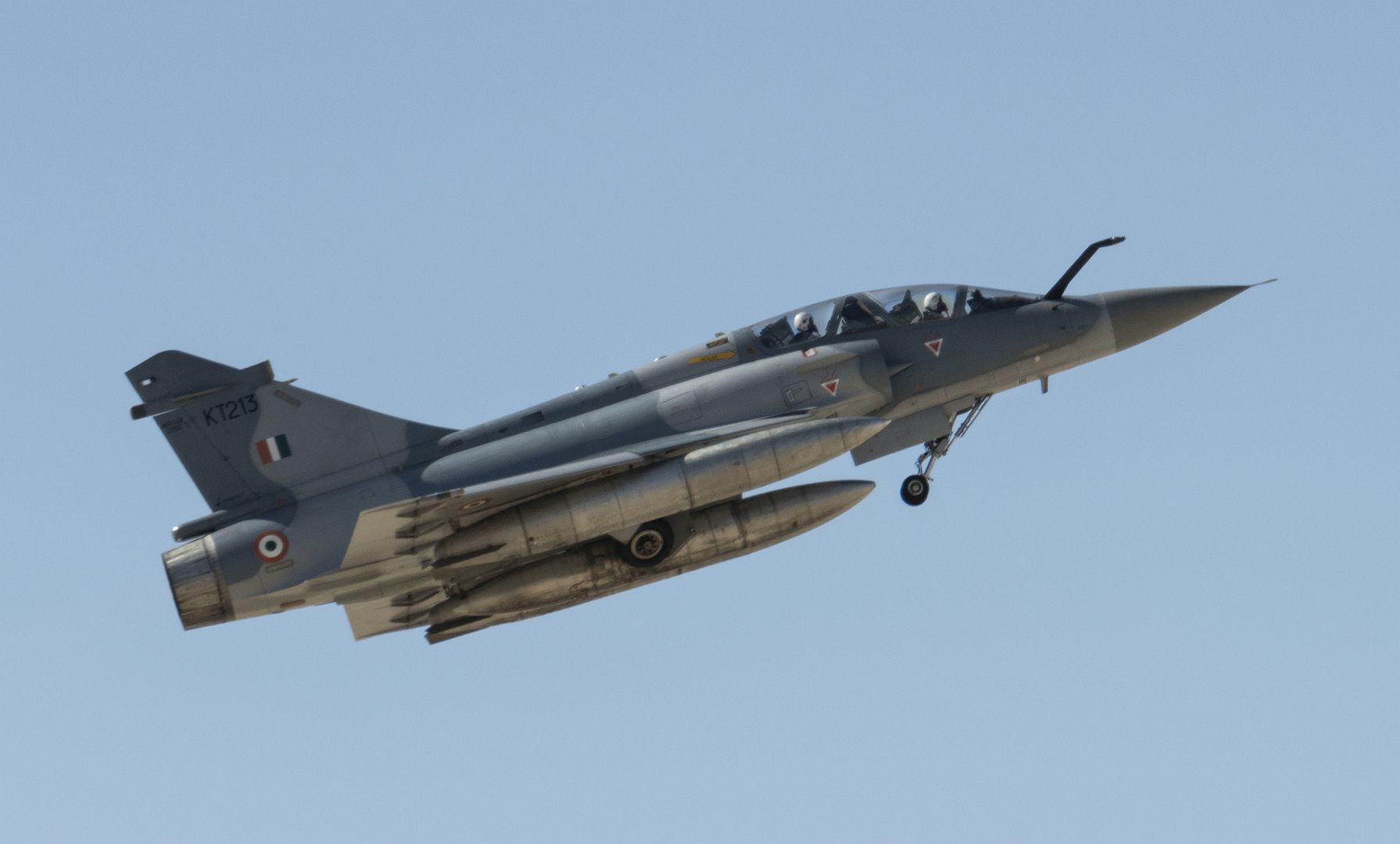
An Israeli Air Force “Baz” (F-15) from the 106th (“Edge of the Spear”) Squadron takes off from the flightline of Uvda Air Base, Israel, during Blue Flag 21 on Oct. 18, 2021.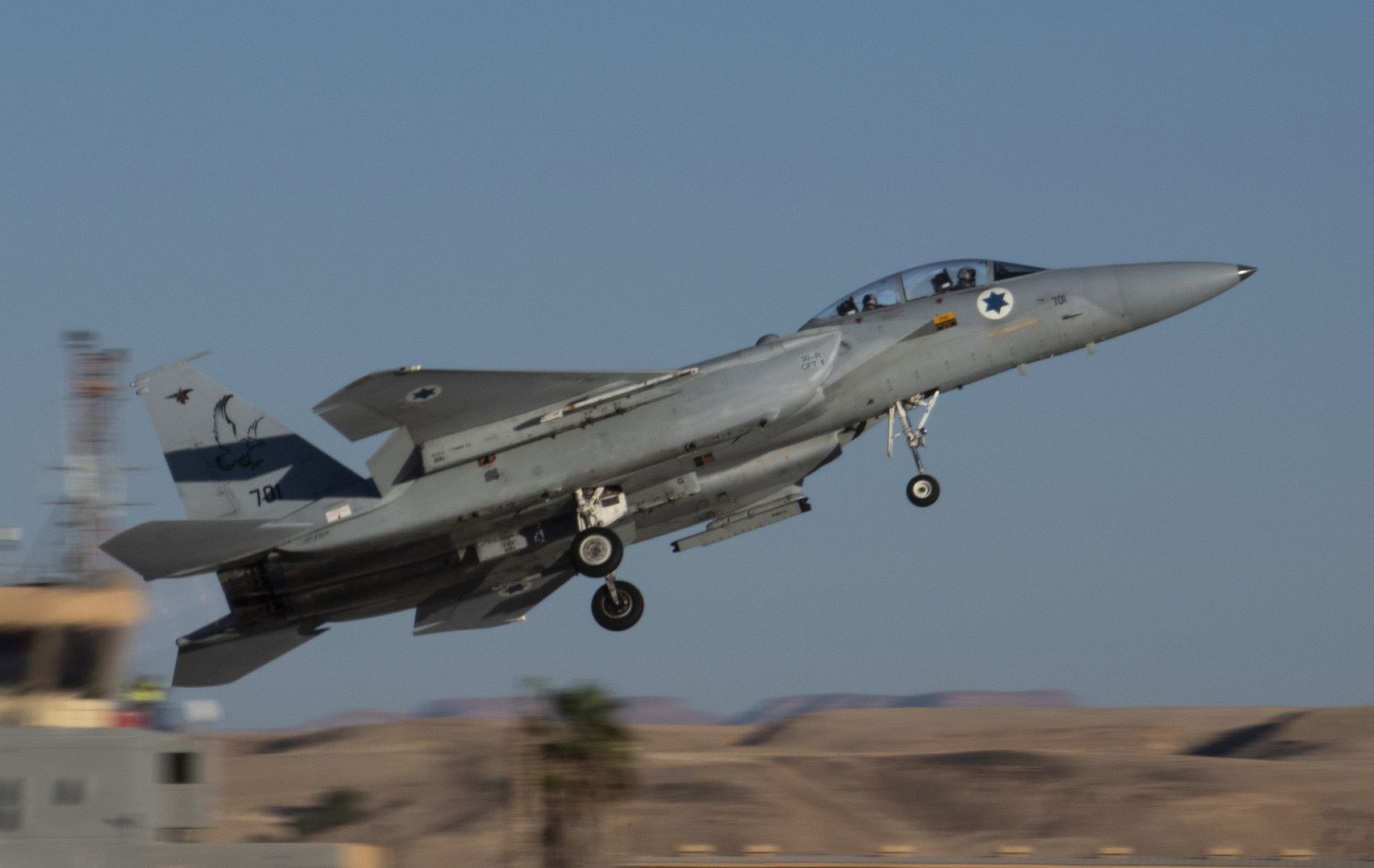
A Hellenic Air Force F16C from the 336th Squadron "Olympos" takes off from the flightline of Uvda Air Base, Israel, during Blue Flag 21 on Oct. 18, 2021.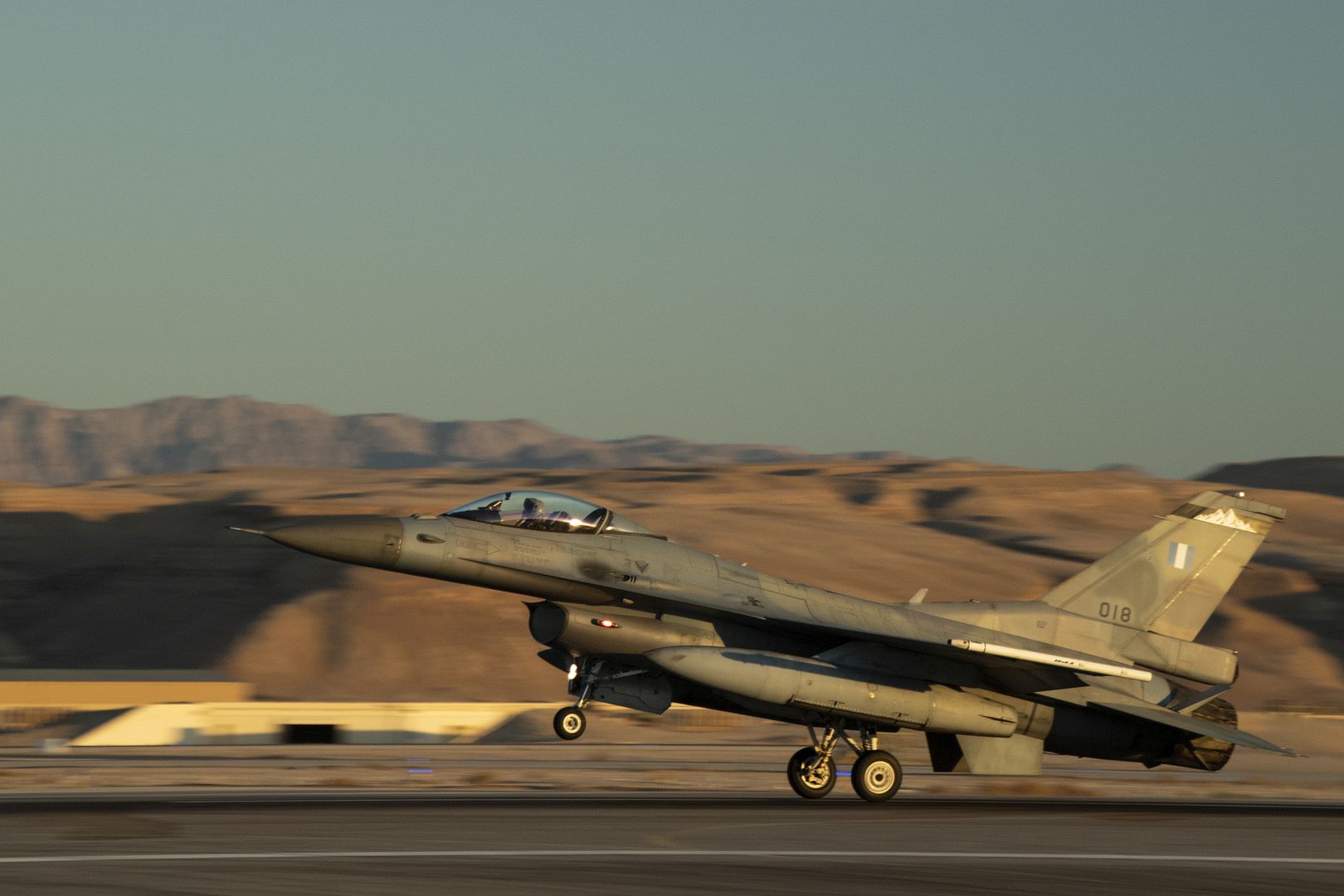
A Royal Air Force Typhoon FGR4 of 1 (Fighter) Squadron takes off from Uvda Air Base, Israel, during Blue Flag 21 on Oct. 18, 2021.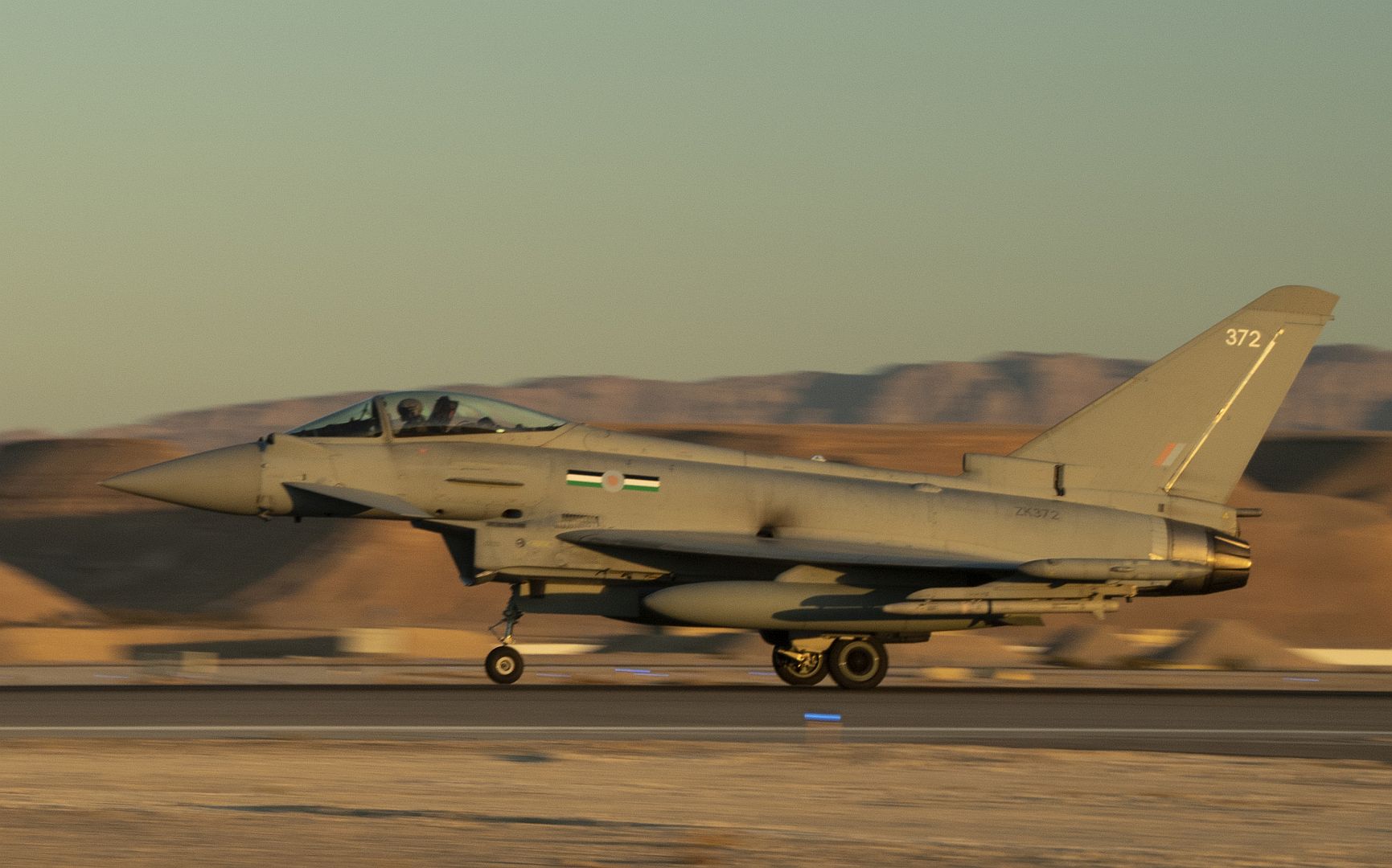
An Israeli Air Force "Barak" F-16 from the 115th "Flying Dragon" Squadron takes off from the flightline of Uvda Air Base, Israel, during Blue Flag 21 on Oct. 18, 2021.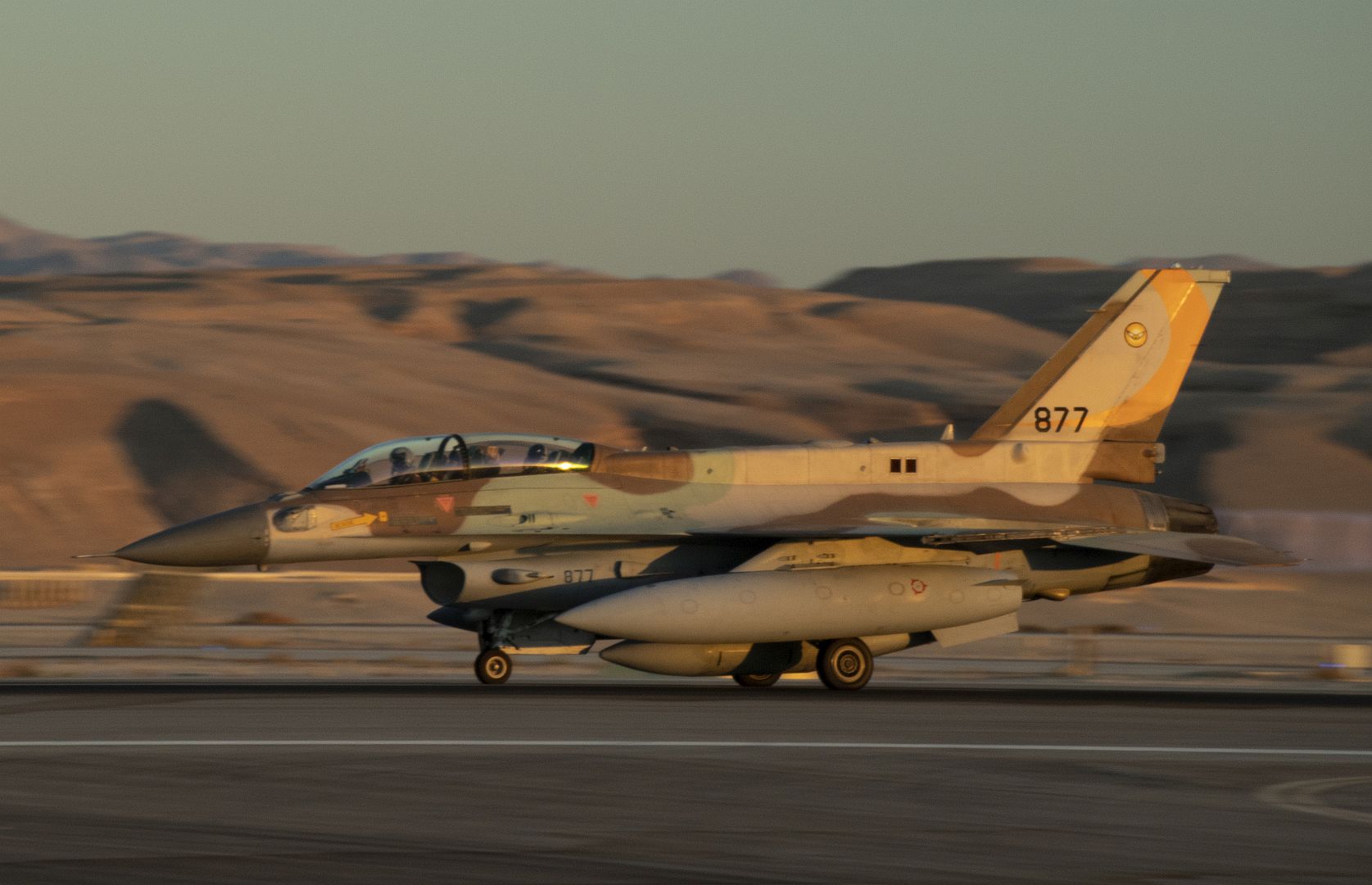
A German Luftwaffe Eurofighter Typhoon takes off from the flightline of Uvda Air Base, Israel, during Blue Flag 21 on Oct. 18, 2021.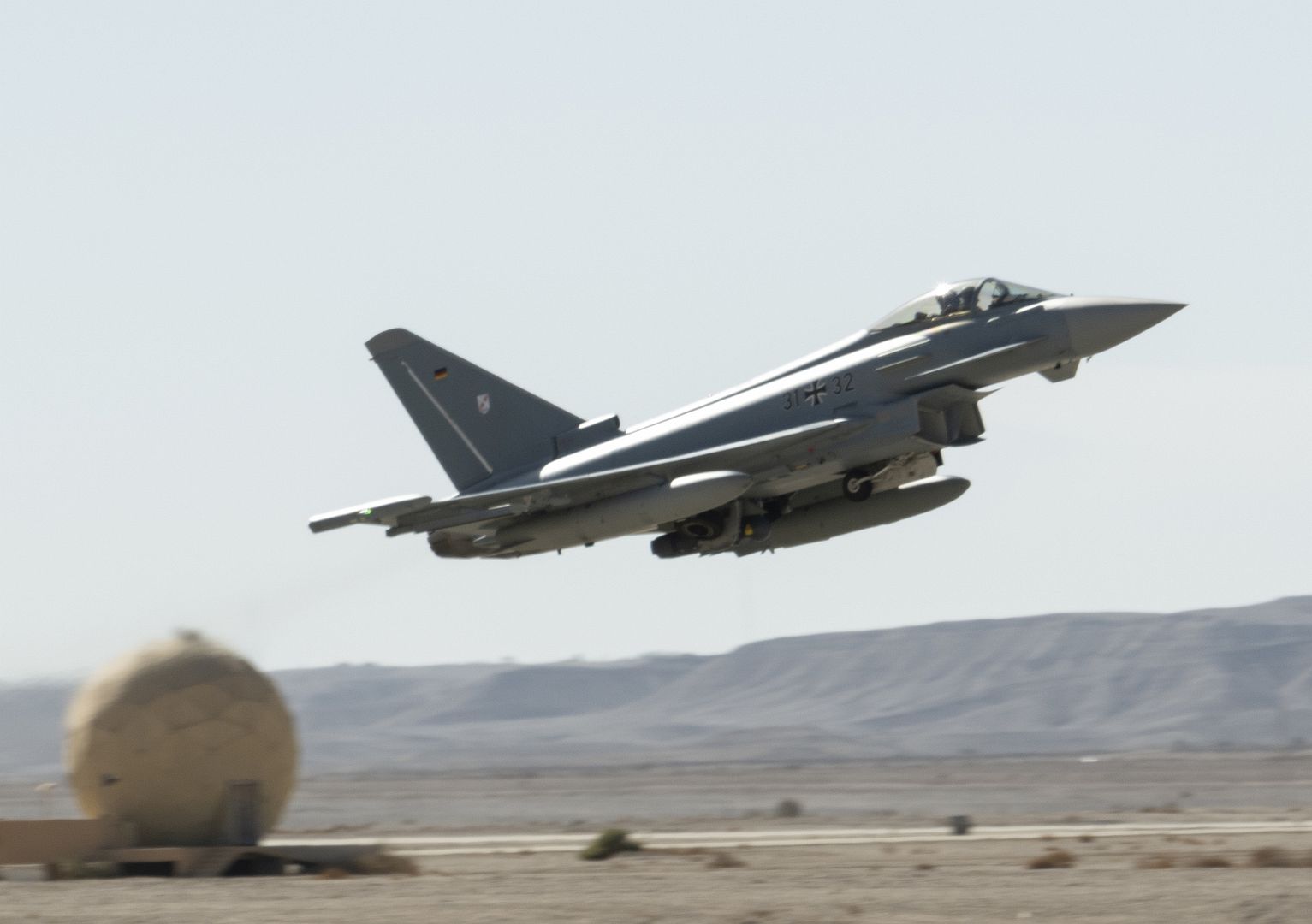
27 October 2021.
The NSW Police Force (NSWPF) Aviation Command launched operations of their three Bell 429 aircraft during a commissioning ceremony. The three Bell 429 helicopters – PolAir 1, 3 and 4 – will be used to support the Force with patrols, search and rescue, surveillance, and specialist operations across the state.
The platforms carry the latest technology in airborne law enforcement, including a Trakka beam, FLIR 380 HDc camera system, advanced mapping systems, tactical radios, and a rescue hoist winch. The equipment enhances the helicopter’s capabilities and allows a greater response to any job, at any time, be it search and rescue or surveillance, whereas previously a change of aircraft may have been needed. The helicopters are also fitted with twin-engines making them faster and more comfortable to fly than some of their predecessors.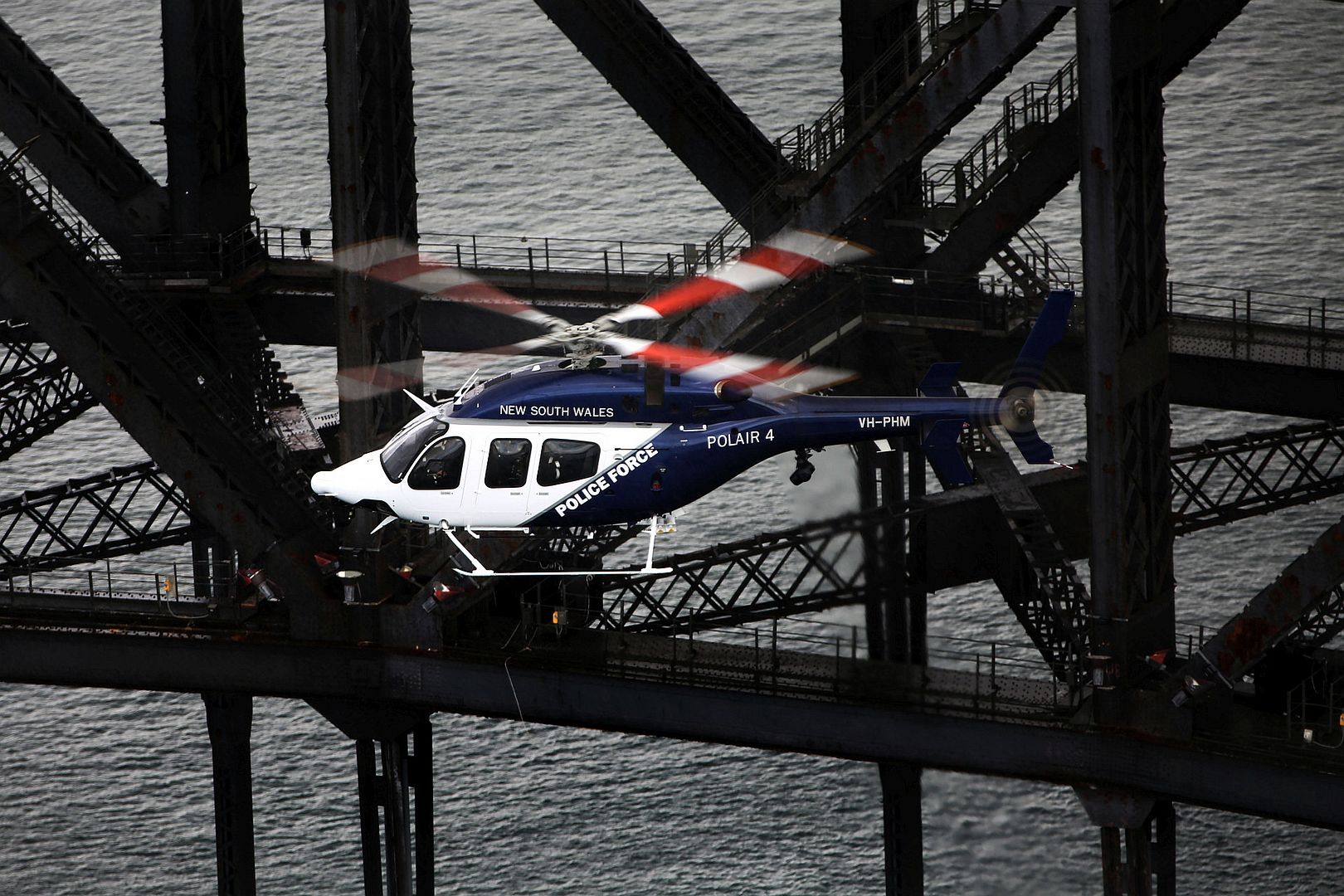
Commissioner Mick Fuller said each helicopter had been purpose-built to policing specifications. “The Bell 429 helicopters have been specifically designed and fitted with the best technology available to carry out search and rescue operations, conduct aerial patrols and surveillance operations,” Commissioner Fuller said. “Each one has been customised with the most sophisticated equipment, including a FLIR camera system, advanced mapping systems, tactical radio and rescue hoist winch.”
Aviation Commander Superintendent Brad Monk said the Bell 429s are a welcomed boost to policing across the state. “These new choppers take us forward and put us at the forefront of airborne law enforcement,” Supt Monk said. “The upgraded technology means we can better support Police Area Commands and Police Districts in fighting crime from the air and making the community safer. By now using only two types of helicopters (the Bell 429 and Bell 412), we’ve standardised the fleet making it more cost-efficient to operate and easier to maintain,” said Superintendent Monk.
Recently, the Bell 429 was named the most favored aircraft for the light twin-turbine helicopters category in a customer survey for Business Jet Magazine. With an easily-configurable cabin, the platform can be equipped with law enforcement mission-specific features including an infrared camera, searchlight, removeable and sliding doors, wire strike protection system, optional auxiliary fuel tank, fast rope insertion/extraction system and an equipment operator station with two 17” HD displays and more.
-
 Main AdminA U.S. Air Force KC-135 tail number 58-0109 with the nickname “Phantom 109” assigned to the Iowa Air National Guard is on the ramp in Sioux City, Iowa on October 28, 2021. 185th Crew Chiefs recently added new nose art to the aircraft depicting a phantom riding along on a KC-135 boom.
Main AdminA U.S. Air Force KC-135 tail number 58-0109 with the nickname “Phantom 109” assigned to the Iowa Air National Guard is on the ramp in Sioux City, Iowa on October 28, 2021. 185th Crew Chiefs recently added new nose art to the aircraft depicting a phantom riding along on a KC-135 boom.
(U.S. Air National Guard photos Senior Master Sgt. Vincent De Groot )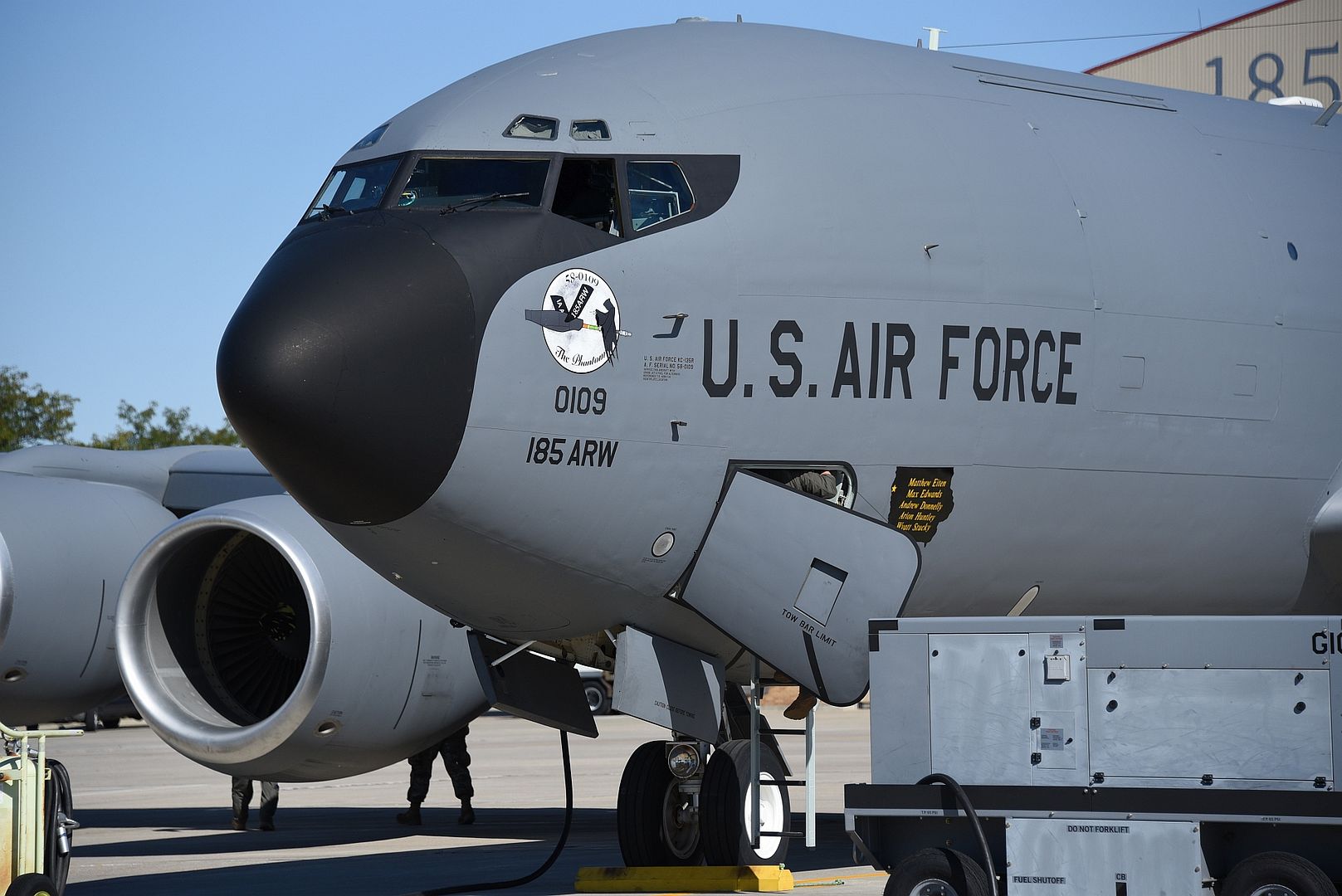

An F-35 assigned to the Royal Netherlands Air Force departs Vermont for a training mission, Vermont Air National Guard base, South Burlington, Vt., October 27, 2021. Members of the RNLAF visited the base as an intermediate stop on their way to an exercise at Edwards Air Force Base, California. (U.S. Air National Guard photo by Julie M. Paroline)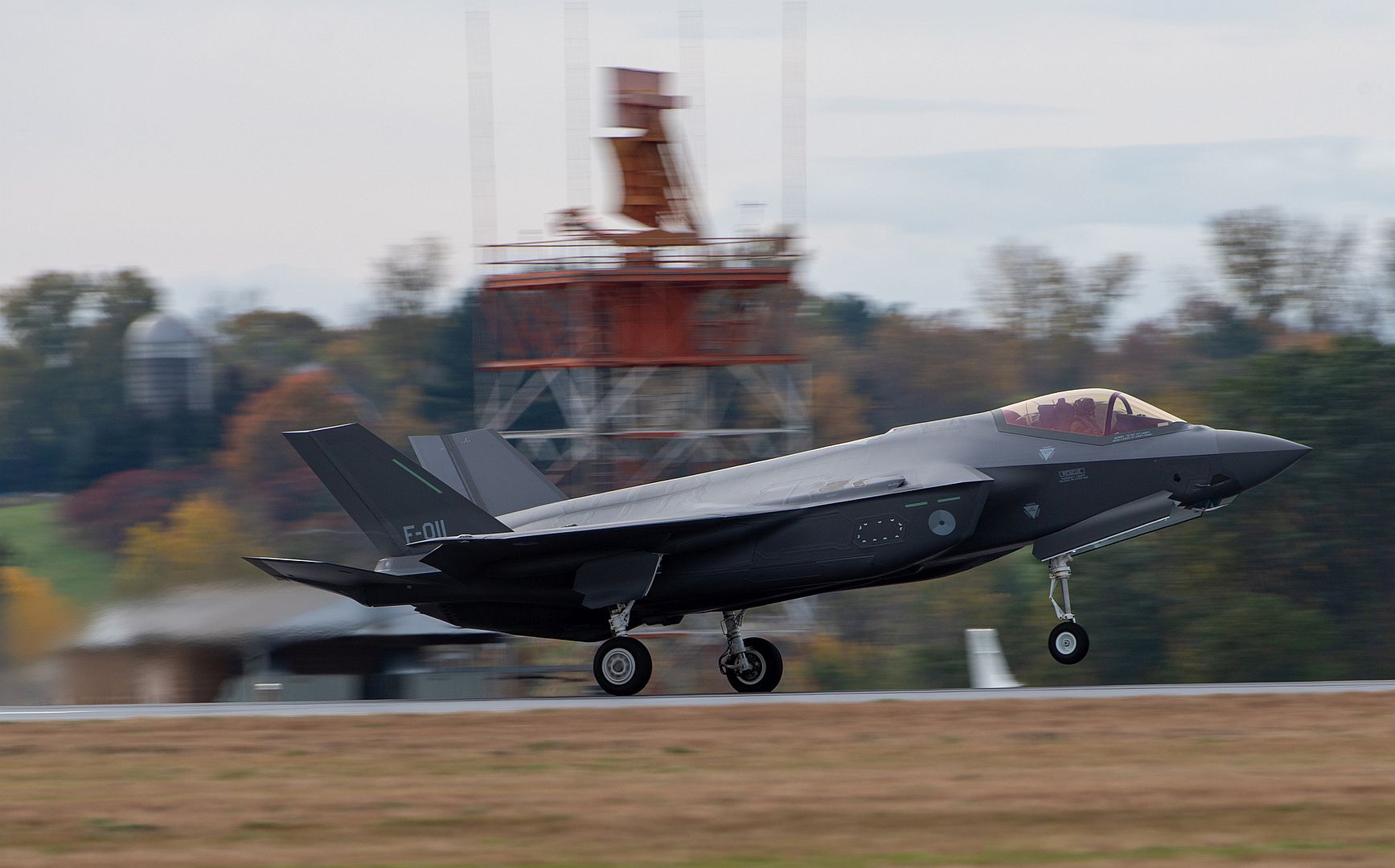
An F-35B Lightning II aircraft assigned to Marine Fighter Attack Squadron 121 conducts short takeoff operations during Exercise Active Shield at Marine Corps Air Station Iwakuni, Japan, Oct. 28, 2021. The ‘B’ variant of the F-35 Joint Strike Fighter is specifically designed to conduct short takeoffs and vertical landings aboard amphibious ships and expeditionary landing zones. Exercise Active Shield, conducted annually, better prepares the station to quickly and safely carry out incident response procedures during base defense operations (U.S. Marine Corps photo by Cpl. Bryant Rodriguez)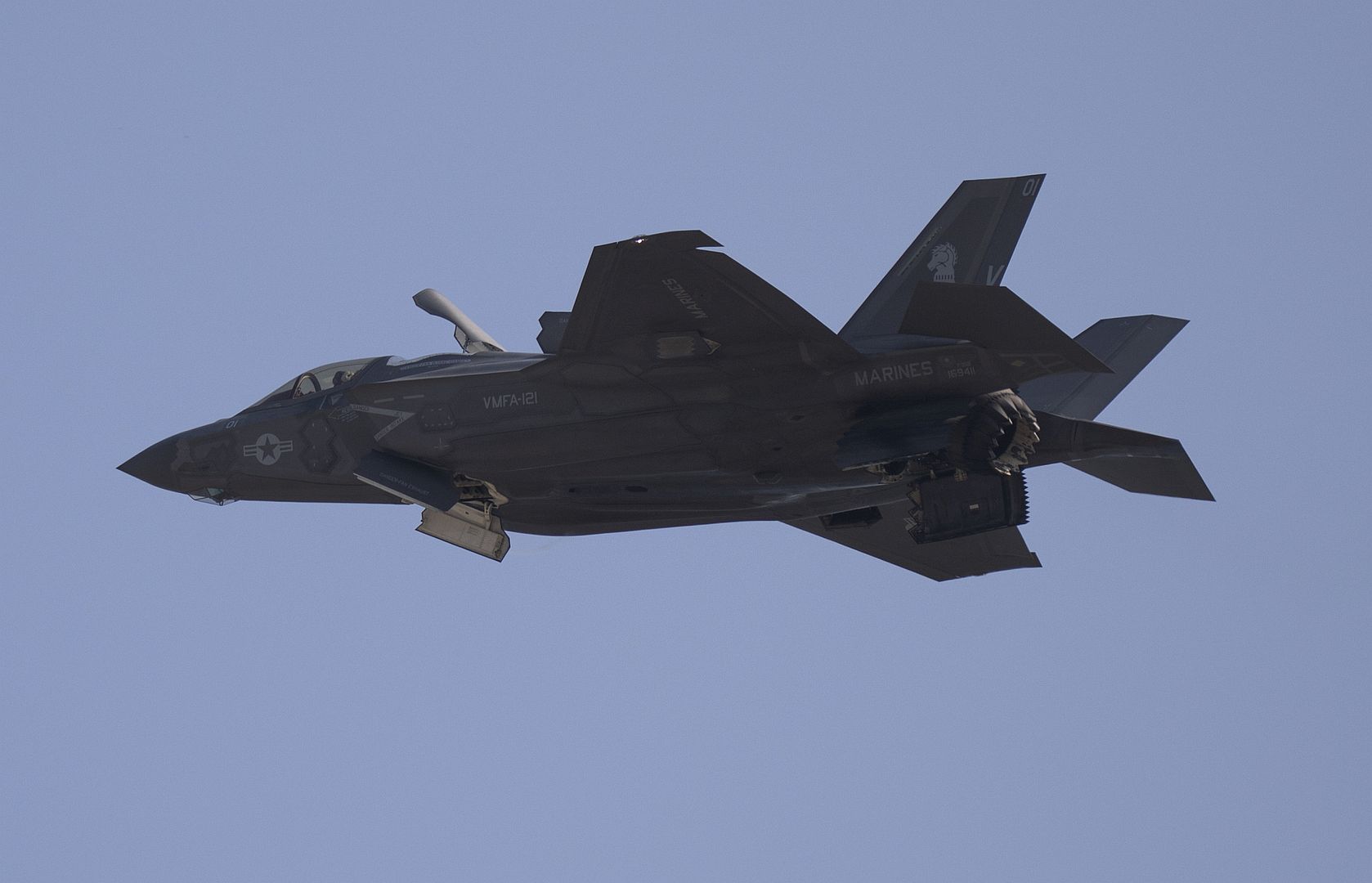
SOUTH CHINA SEA (Oct. 28, 2021) Aircraft assigned to Carrier Air Wing (CVW) 2 prepare to launch off the flight deck of Nimitz-class aircraft carrier USS Carl Vinson (CVN 70), Oct. 28, 2021. Carl Vinson Carrier Strike Group is on a scheduled deployment in the U.S. 7th Fleet area of operations to enhance interoperability through alliances and partnerships while serving as a ready-response force in support of a free and open Indo-Pacific region. (U.S. Navy photo by Mass Communication Specialist 3rd Class Tyler Wheaton)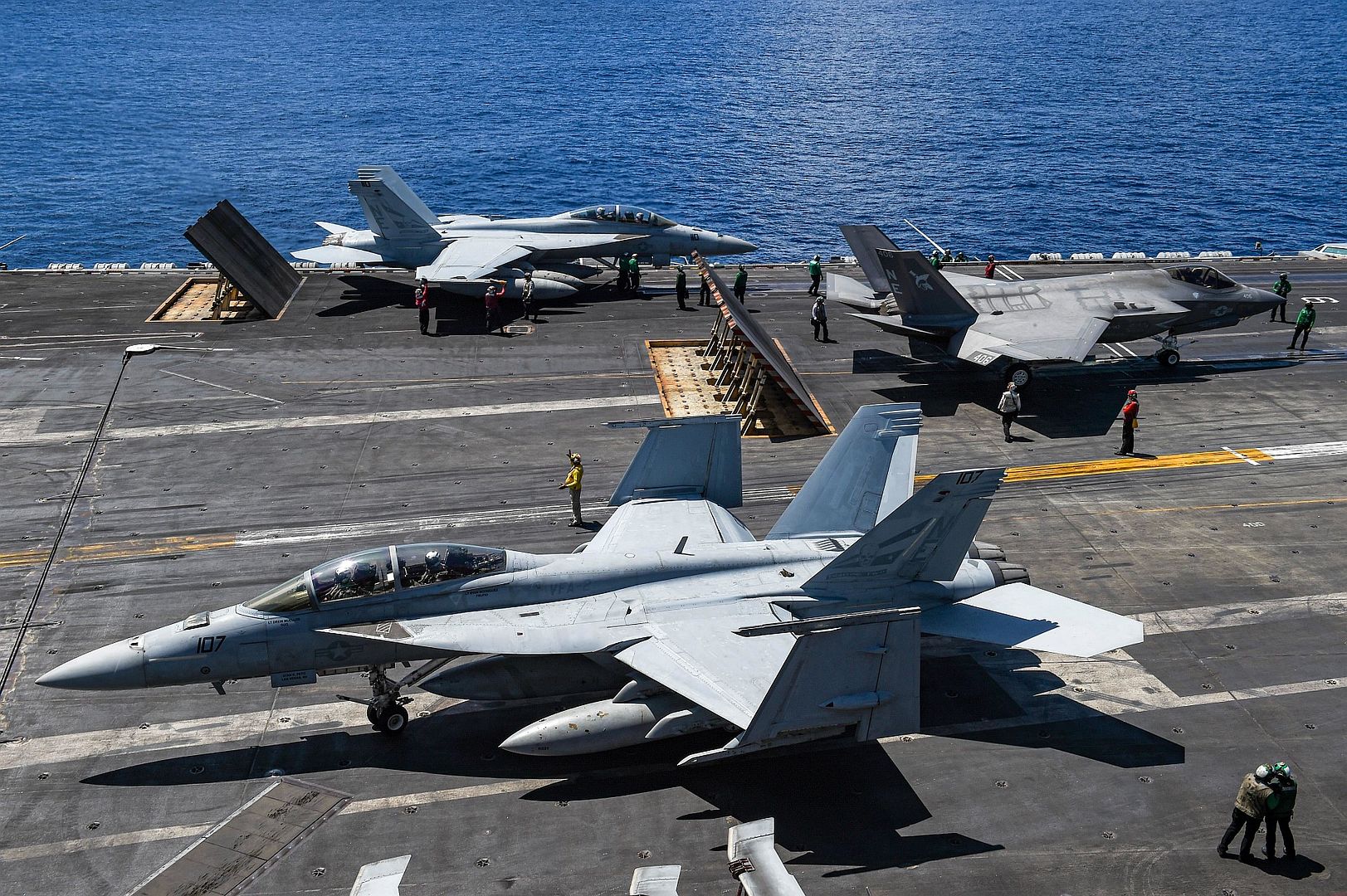
An F/A-18 Hornet takes off to participate in Black Flag at Nellis Air Force Base, Nevada, Oct. 26, 2021. Black Flag is a premier operational test event where warfighters from the U.S. Air Force, U.S. Marine Corps, U.S. Army and U.S. Navy gather to develop tactics, techniques and procedures in response to enhance readiness and lethality. (U.S. Air Force photo by Senior Airman Bailee A. Darbasie)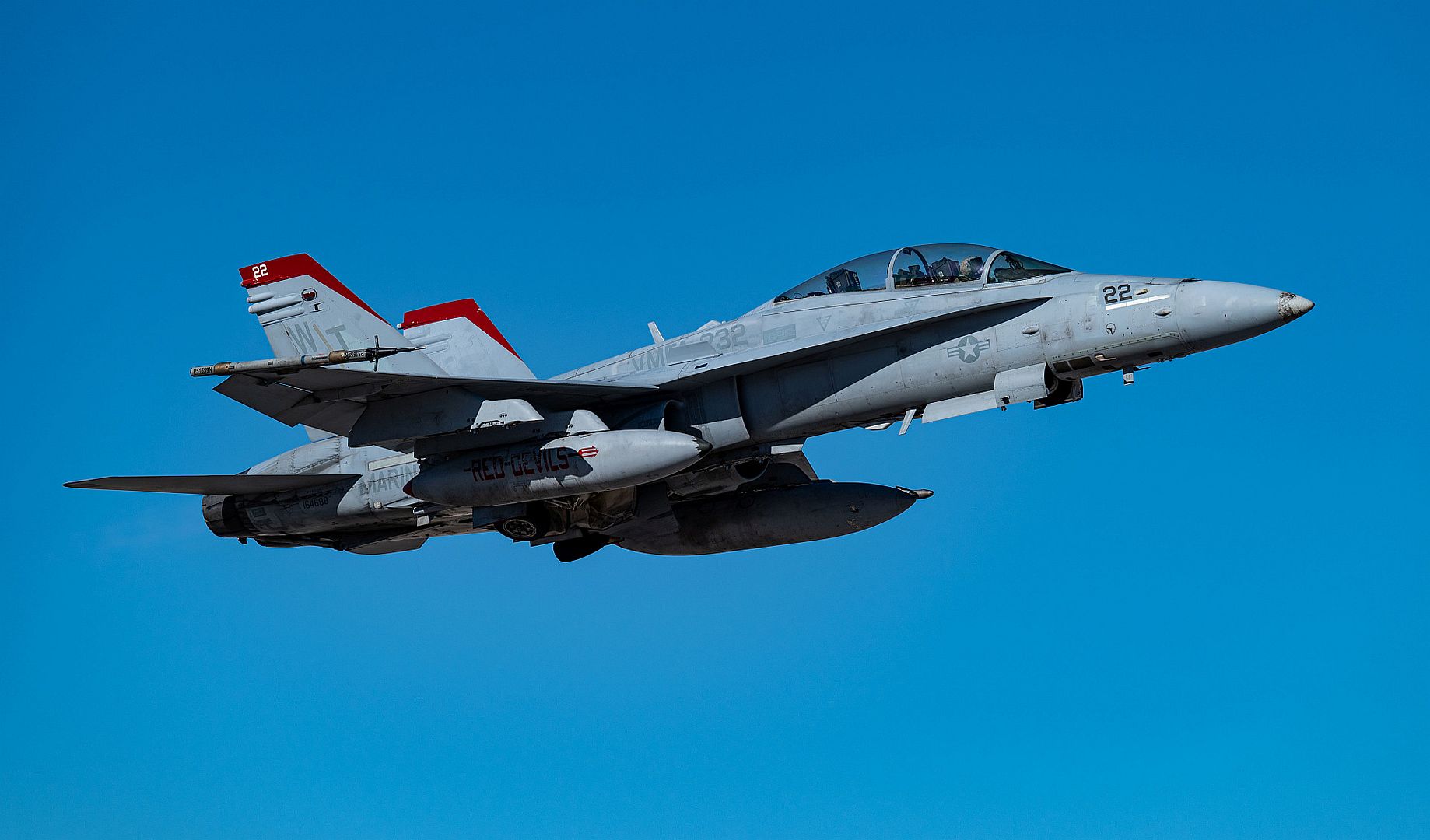
An F-35A Lightning II fighter jet assigned to the 422nd Test and Evaluation Squadron, takes off to participate in Black Flag at Nellis Air Force Base, Nevada, Oct. 26, 2021. Black Flag is a premier operational test event where warfighters from the U.S. Air Force, U.S. Marine Corps, U.S. Army and U.S. Navy gather to develop tactics, techniques and procedures in response to enhance readiness and lethality. (U.S. Air Force photo by Senior Airman Bailee A. Darbasie)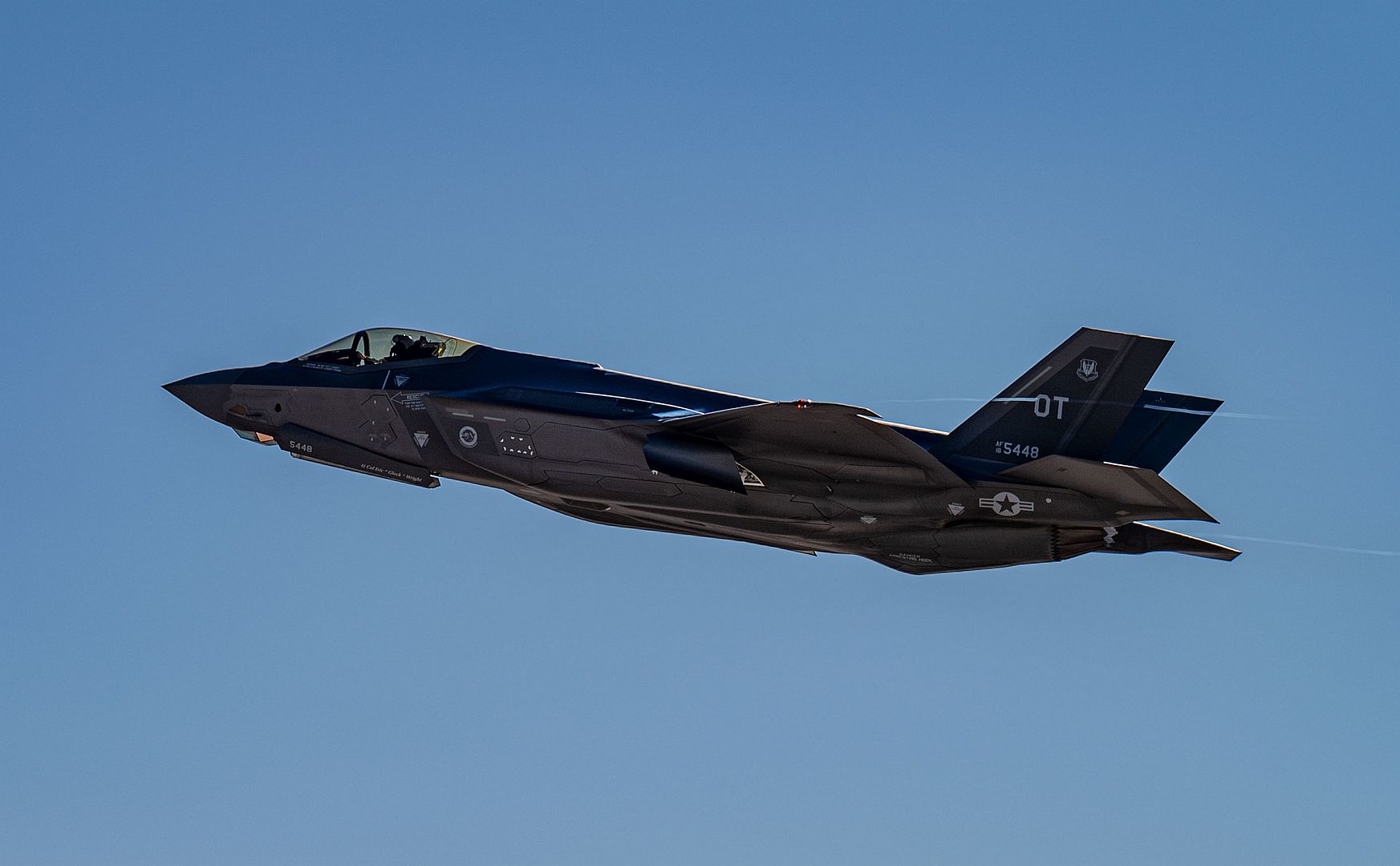
An F-15E assigned to the 422nd Test and Evaluation Squadron takes off at Nellis Air Force Base, Nevada, Oct. 26, 2021. Black Flag is a premier operational test event where warfighters from the U.S. Air Force, U.S. Marine Corps, U.S. Army and U.S. Navy gather to develop tactics, techniques and procedures in response to enhance readiness and lethality. (U.S. Air Force photo by Staff Sgt. Dylan Murakami)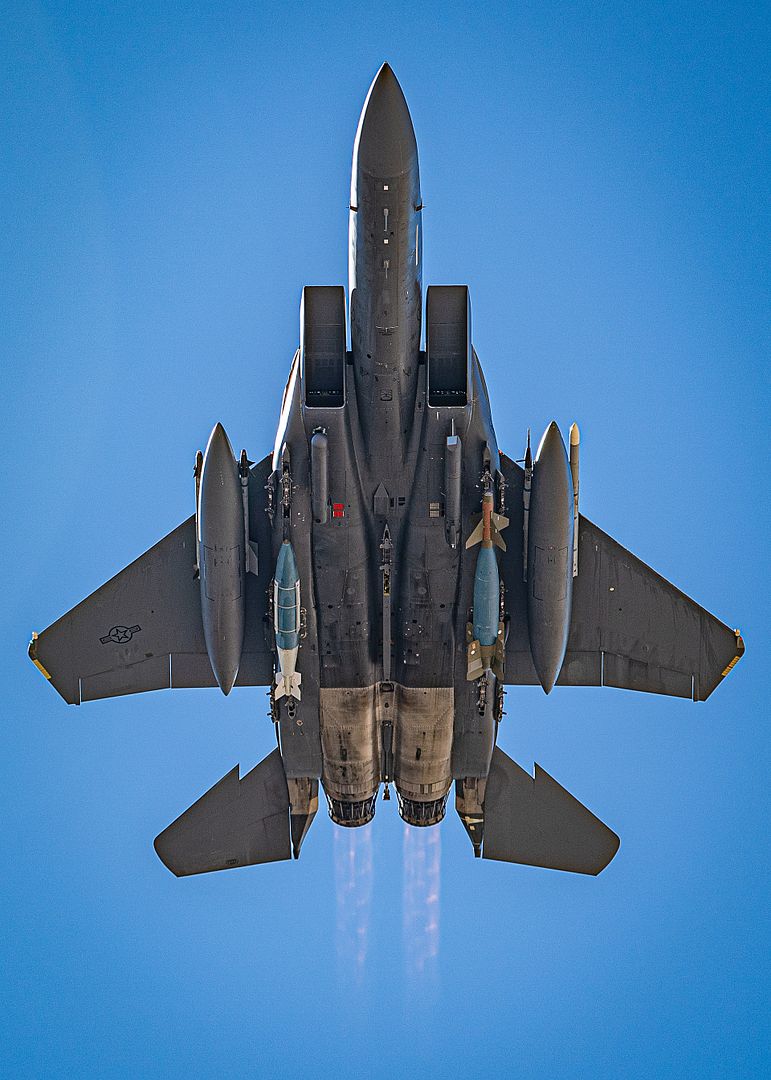
An F-22 Raptor assigned to the 422nd Test and Evaluation Squadron taxis toward the runway at Nellis Air Force Base, Nevada, Oct. 26, 2021. Black Flag is a premier operational test event where warfighters from the U.S. Air Force, U.S. Marine Corps, U.S. Army and U.S. Navy gather to develop tactics, techniques and procedures in response to enhance readiness and lethality. (U.S. Air Force photo by Staff Sgt. Dylan Murakami)
An F-15E assigned to the 422nd Test and Evaluation Squadron waits to take off during Black Flag at Nellis Air Force Base, Nevada, Oct. 26, 2021. Black Flag is a premier operational test event where warfighters from the U.S. Air Force, U.S. Marine Corps, U.S. Army and U.S. Navy gather to develop tactics, techniques and procedures in response to enhance readiness and lethality. (U.S. Air Force photo by Airman 1st Class Zachary Rufus)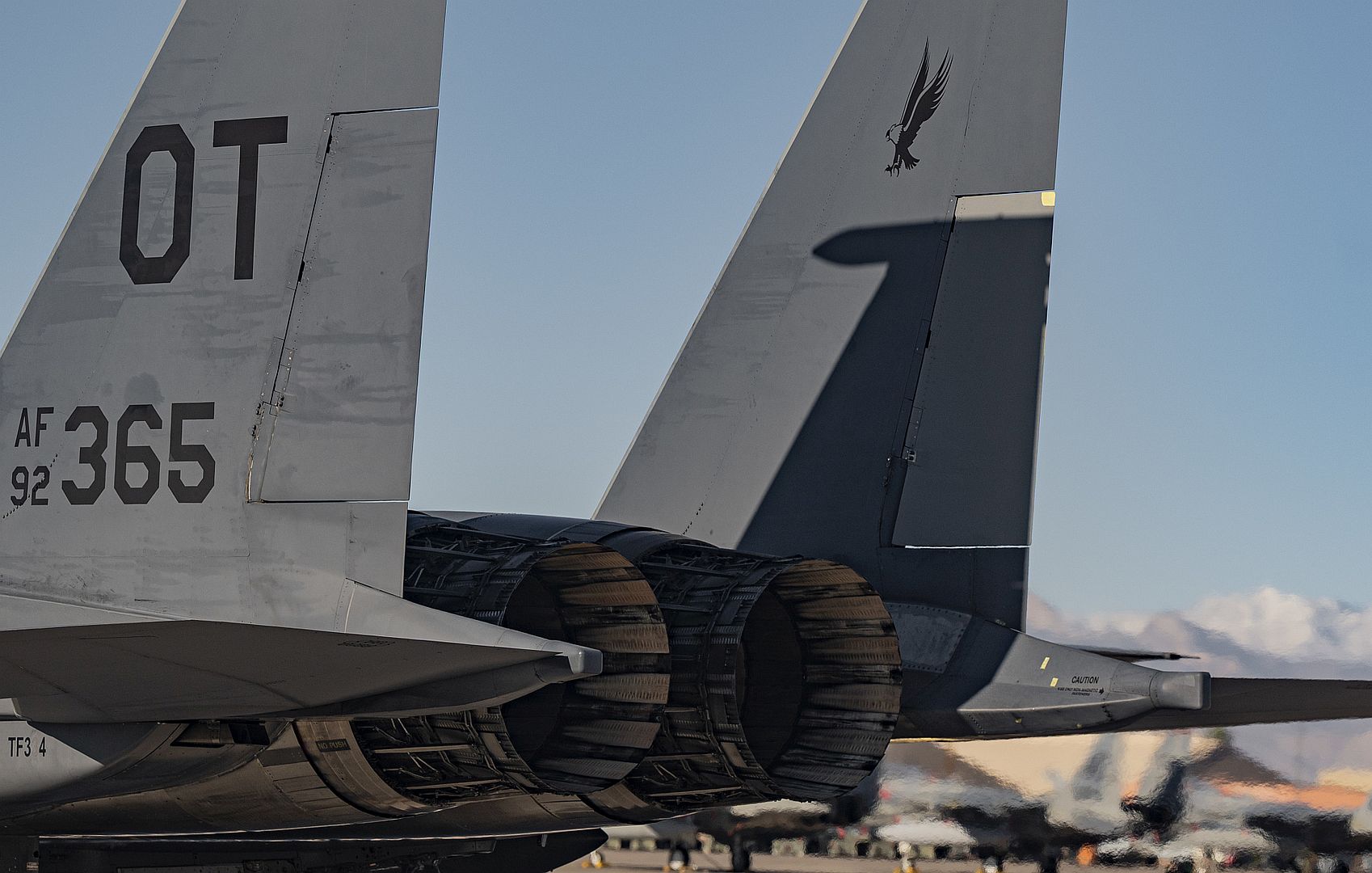
Toulouse, 29 October 2021 - Airbus, Dassault Aviation, ONERA, the French Ministry of Transports and Safran have launched the first in-flight study of a single-aisle aircraft running on unblended sustainable aviation fuel (SAF).
During the flight test over the Toulouse region on 28 October, one CFM LEAP-1A engine of an Airbus A319neo test aircraft operated on 100% SAF. Initial results from the ground and flight tests are expected in 2022.
The unblended SAF is provided by Total Energies. It is made from Hydroprocessed Esters and Fatty Acids (HEFA), which primarily consists of used cooking oil, as well as other waste fats. HEFA is made of paraffinic hydrocarbons and is free of aromatics and sulfur. Approximately 57 tonnes of SAF will be used for the entire test campaign. It is produced in Normandy close to Le Havre, France. The 100% SAF will also be utilised for compatibility and engine operability studies on the Safran Helicopters Arrano engine used on the Airbus Helicopters H160, which are expected to start in 2022.
Airbus, in collaboration with DLR, is responsible for characterising and analysing the impact of 100% SAF on ground and in-flight emissions. Safran focuses on compatibility studies related to the fuel system and engine adaptation for commercial and helicopter aircraft and their optimisation for various types of 100% SAF fuels. Safran will perform LEAP engine ground tests with 100% SAF at its Villaroche facilities later this year to complete analysis. ONERA is supporting Airbus and Safran in analysing the compatibility of the fuel with aircraft systems and will be in charge of preparing, analysing and interpreting test results for the impact of 100% SAF on emissions and contrail formation. Dassault Aviation is contributing to the material and equipment compatibility studies and verifying 100% SAF biocontamination susceptibility.
The study – known as VOLCAN (VOL avec Carburants Alternatifs Nouveaux) – contributes to global decarbonisation efforts currently underway across the entire aeronautical industry, and is benefiting from a financing of the France Relance recovery plan, the part thereof dedicated to the decarbonisation of aviation, which is implemented by DGAC under the supervision of Jean-Baptiste Djebbari, French Minister of Transports. The study’s ultimate goal is to promote the large-scale deployment and use of SAF, and certification of 100% SAF for use in single-aisle commercial aircraft and the new generation of business jets.
-
 Main AdminAn Israeli Air Force F-15 Strike Eagle moves into formation with a U.S. Air Force B-1B Lancer over Israel as part of a presence patrol above the U.S. Central Command’s area of responsibility Oct. 30, 2021. Multiple partner nations’ fighter aircraft accompanied the B-1B Lancer at different points during the flight, which flew over the Gulf of Aden, Bab el-Mandeb Strait, Red Sea, Suez Canal, Arabian Gulf, Strait of Hormuz and the Gulf of Oman before departing the region. (U.S. Air Force photos by Senior Airman Jerreht Harris)
Main AdminAn Israeli Air Force F-15 Strike Eagle moves into formation with a U.S. Air Force B-1B Lancer over Israel as part of a presence patrol above the U.S. Central Command’s area of responsibility Oct. 30, 2021. Multiple partner nations’ fighter aircraft accompanied the B-1B Lancer at different points during the flight, which flew over the Gulf of Aden, Bab el-Mandeb Strait, Red Sea, Suez Canal, Arabian Gulf, Strait of Hormuz and the Gulf of Oman before departing the region. (U.S. Air Force photos by Senior Airman Jerreht Harris)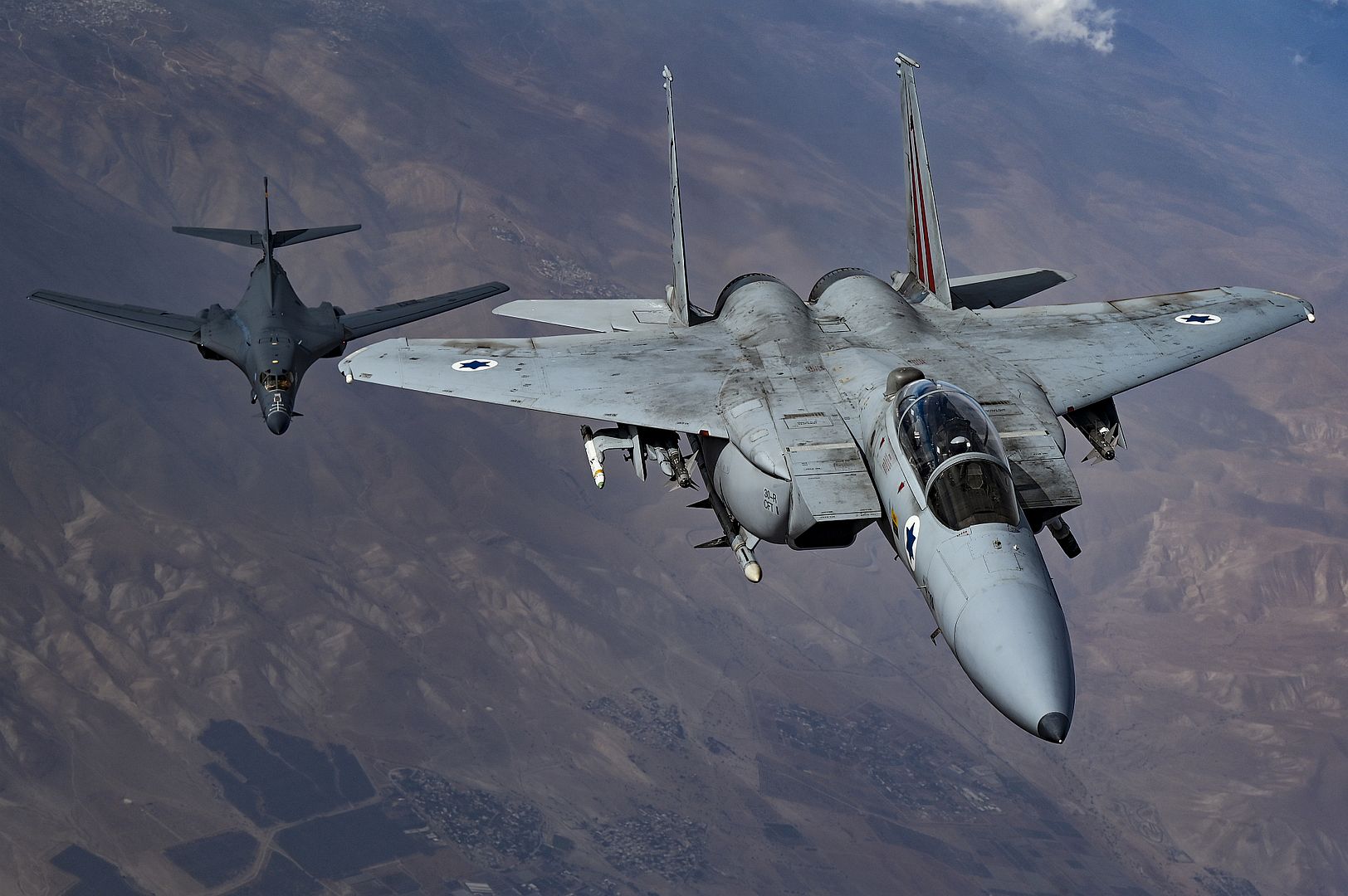
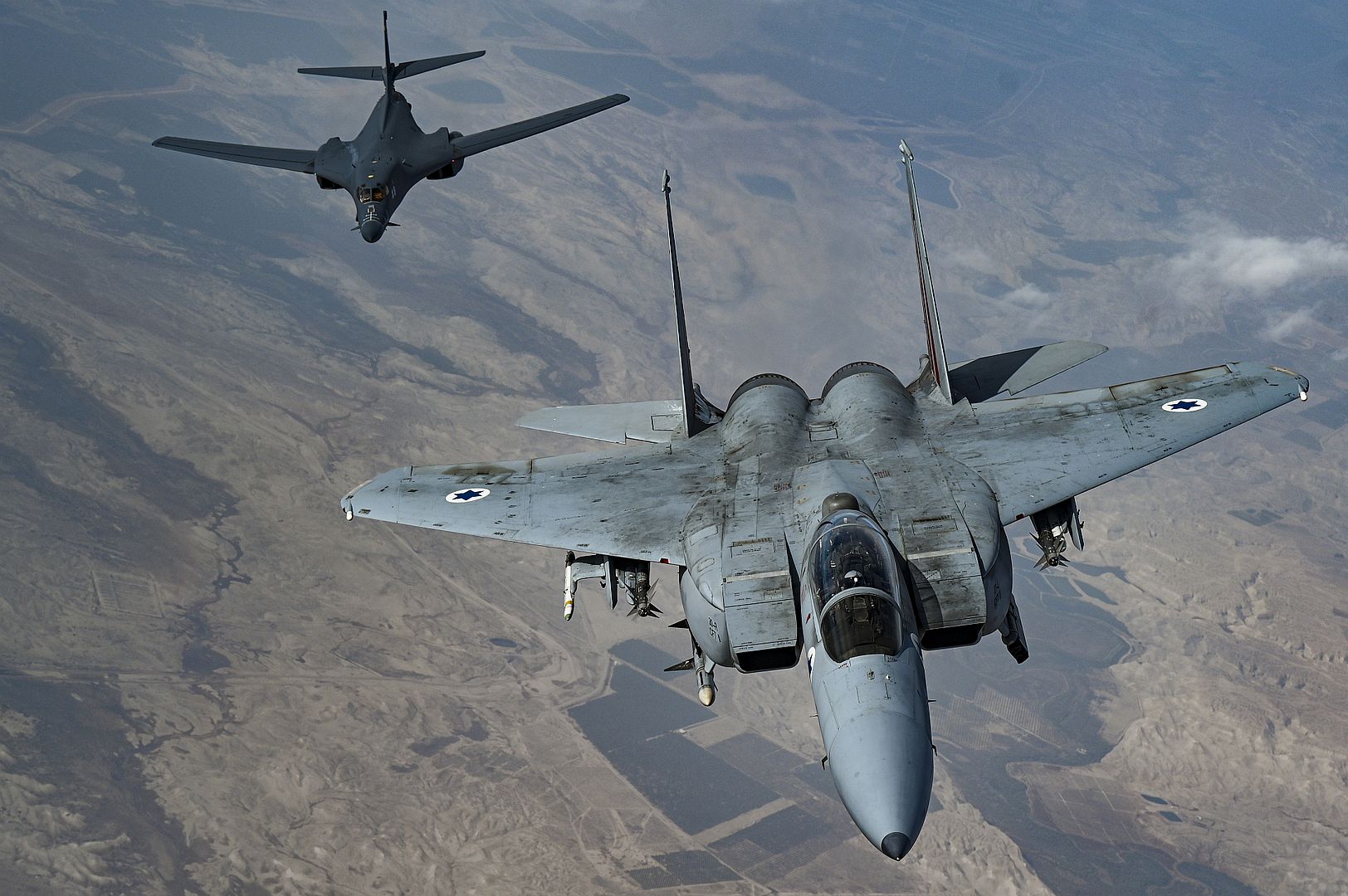
A Royal Saudi Air Force F-15 Strike Eagle accompanies a U.S. Air Force B-1B Lancer over the Red Sea as part of a presence patrol above the U.S. Central Command’s area of responsibility Oct. 30, 2021. The flight was a five-hour, non-stop multilateral mission with participation from air forces to include: Bahrain, Egypt, Israel and the Kingdom of Saudi Arabia. (U.S. Air Force photo by Senior Airman Jerreht Harris)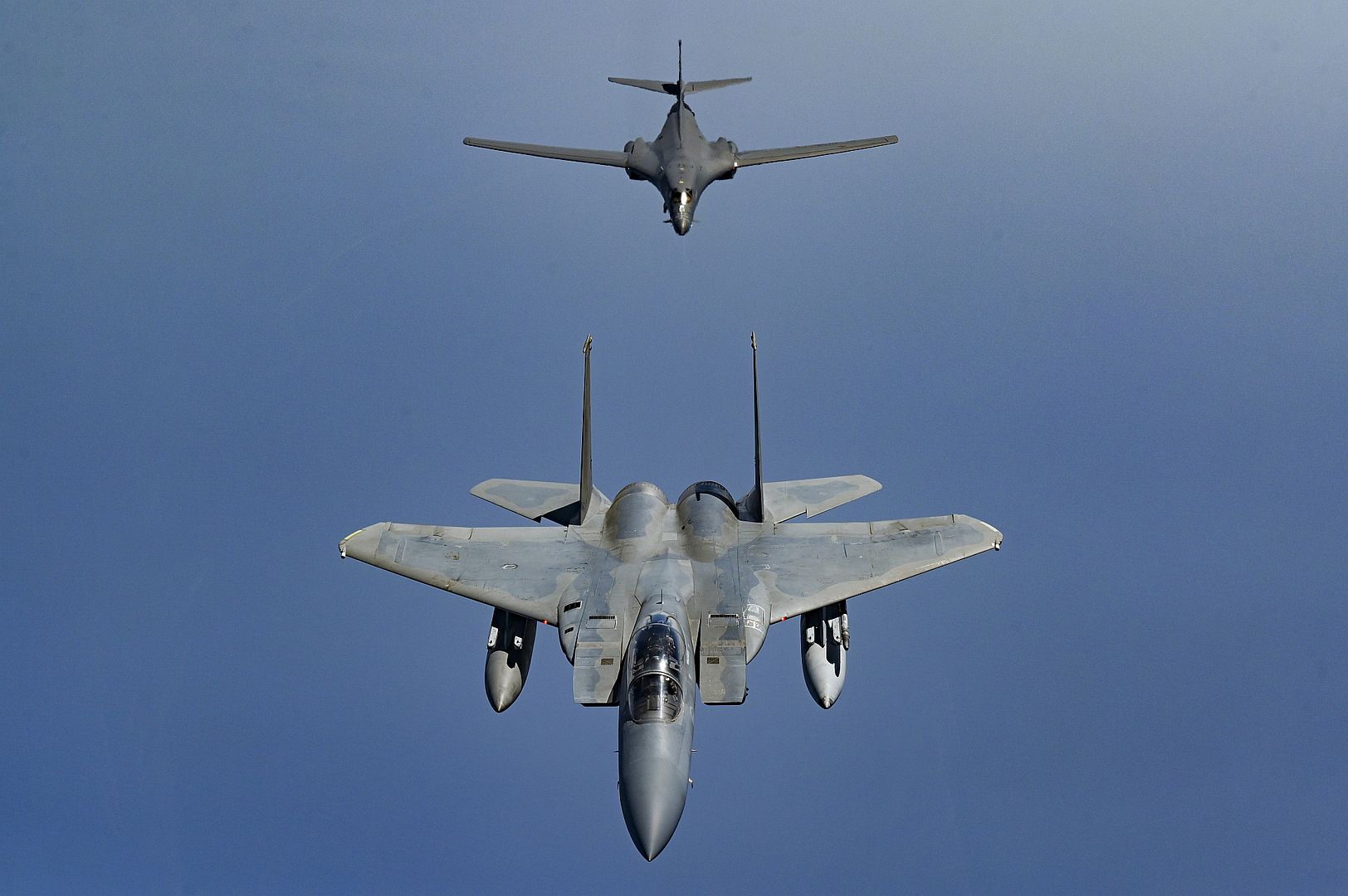
Japan Air Self-Defense Force F-15J Eagles flie over the Pacific Ocean during Exercise Southern Beach, Oct. 28, 2021. This was the first time since the inception of Southern Beach in which the majority of the mission sets and a Japan-U.S. training program were conducted during night time hours. (U.S. Air Force photos by Staff Sgt. Savannah L. Waters)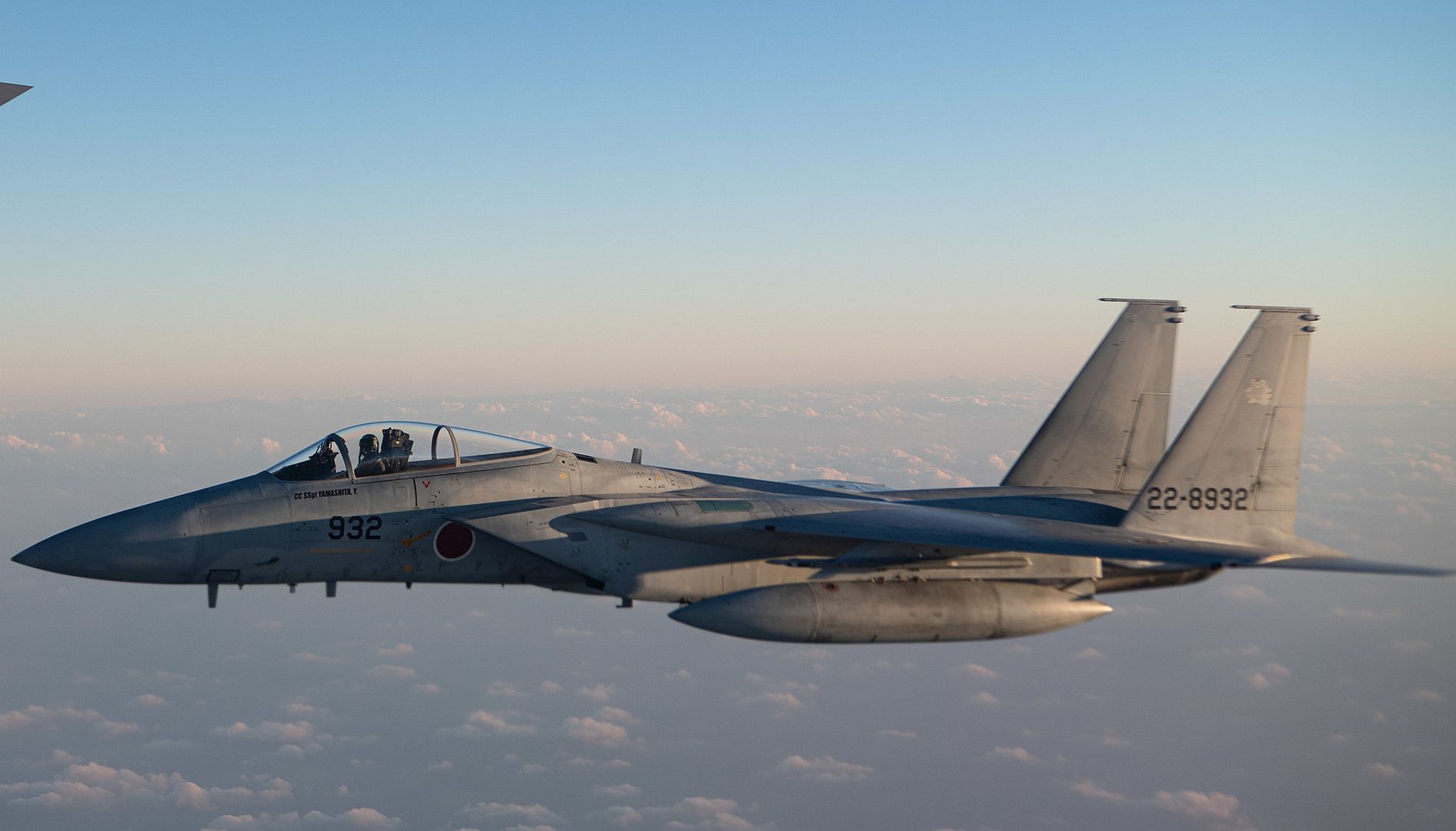
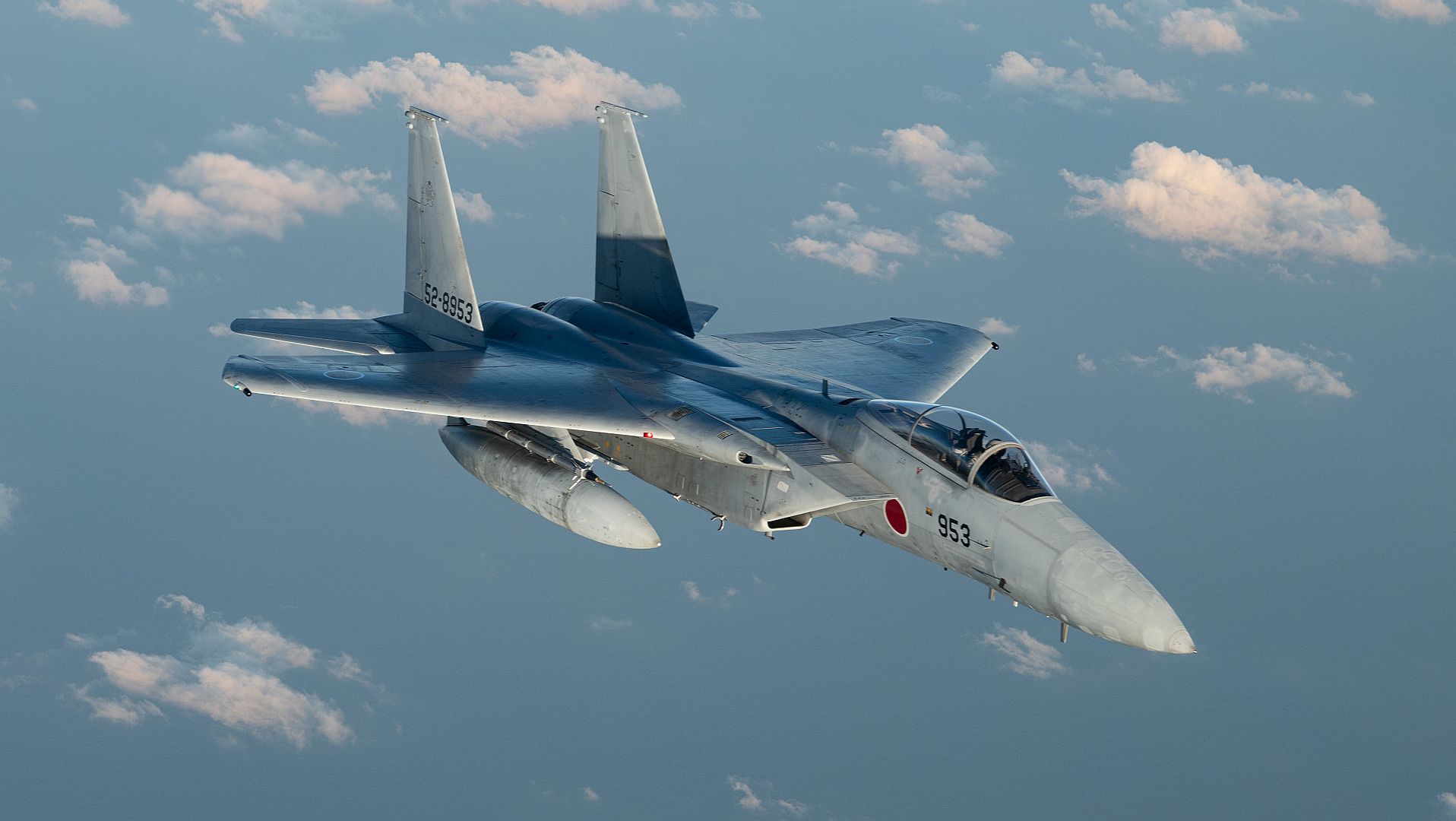
U.S. F-15E Strike Eagle aircraft from the 336th Fighter Squadron, 4th Fighter Wing, Seymour Johnson Air Force Base, North Carolina, arrive at Graf Ignatievo Air Base, Bulgaria, Nov. 1, 2021, in support of operation Castle Forge, a U.S. Air Forces Europe-Air Forces Africa-led joint, multinational training event. The Strike Eagles will spend the next several days training at the Bulgarian Air Force facility, continuing Castle Forge’s objective of affirming U.S. commitment to NATO allies in the Black Sea region (U.S. Air Force photo by Capt. Andrew Layton).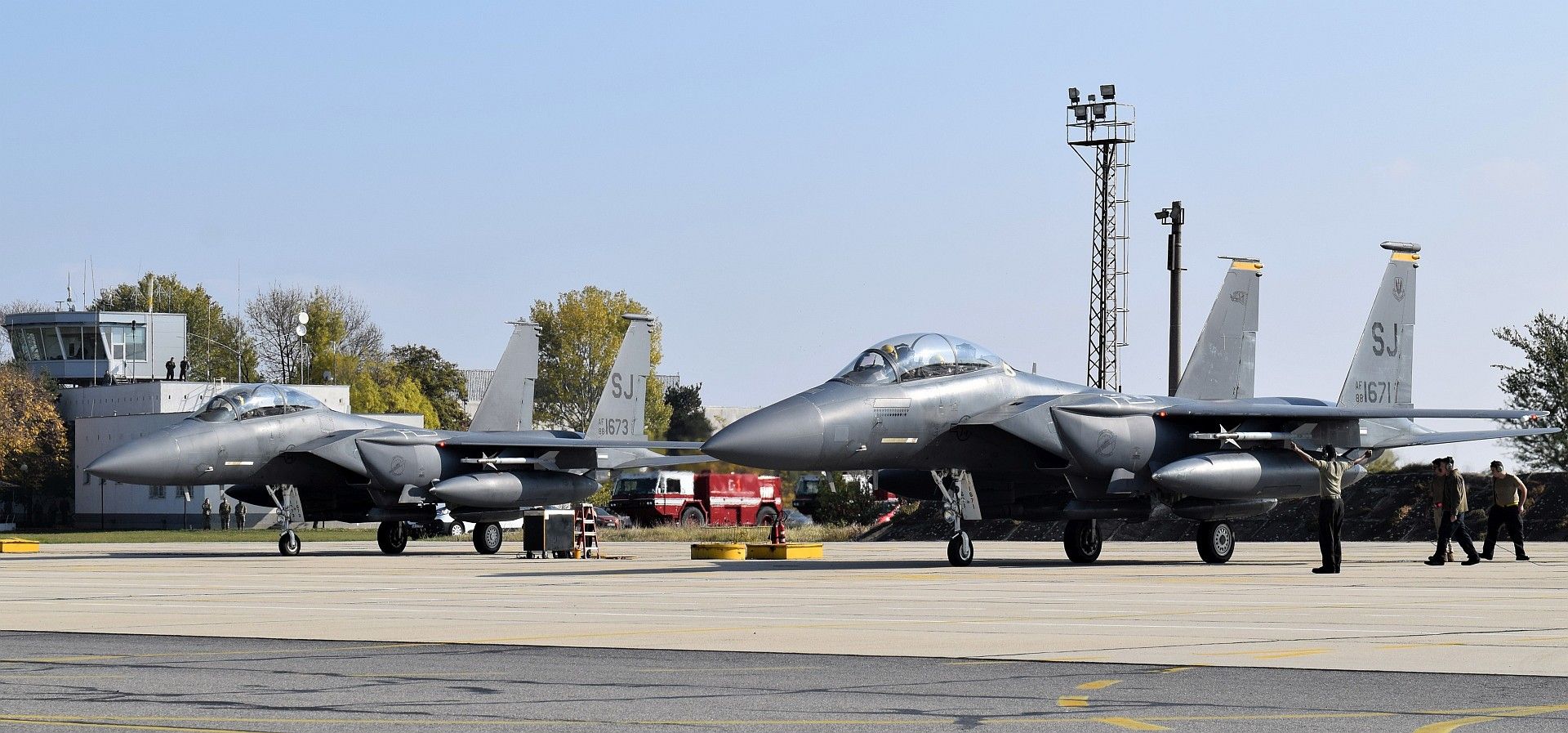
SOUTH CHINA SEA (Oct. 31, 2021) An F-35C Lightning II, assigned to the “Argonauts” of Strike Fighter Squadron (VFA) 147, taxis on the flight deck of Nimitz-class aircraft carrier USS Carl Vinson (CVN 70), Oct. 31, 2021. Carl Vinson Carrier Strike Group is on a scheduled deployment in the U.S. 7th Fleet area of operations to enhance interoperability through alliances and partnerships while serving as a ready-response force in support of a free and open Indo-Pacific region. (U.S. Navy photo by Mass Communication Specialist Seaman Megan Alexander)
SOUTH CHINA SEA (Oct. 31, 2021) An F/A-18E Super Hornet, assigned to the “Stingers” of Strike Fighter Squadron (VFA) 113, taxis on the flight deck of Nimitz-class aircraft carrier USS Carl Vinson (CVN 70), Oct. 31, 2021. Carl Vinson Carrier Strike Group is on a scheduled deployment in the U.S. 7th Fleet area of operations to enhance interoperability through alliances and partnerships while serving as a ready-response force in support of a free and open Indo-Pacific region. (U.S. Navy photo by Mass Communication Specialist Seaman Megan Alexander).jpg?width=1920&height=1080&fit=bounds)
10.26.2021
A 53rd Wing F-16D takes off to participate in Emerald Flag Oct. 26 at Eglin Air Force Base, Fla.The Large Force Test Event paired with Orange Flag and Black Flag to connect air, land, ground, sea, space, and cyberspace systems to improve the speed and accessibility of information shared in a live and virtual battlefield. (U.S. Air Force photo/1st Lt. Karissa Rodriguez)
A 96th Test Wing F-16C takes off to participate in Emerald Flag Oct. 26 at Eglin Air Force Base, Fla. The Large Force Test Event paired with Orange Flag and Black Flag to connect air, land, ground, sea, space, and cyberspace systems to improve the speed and accessibility of information shared in a live and virtual battlefield. (U.S. Air Force photo/1st Lt. Karissa Rodriguez)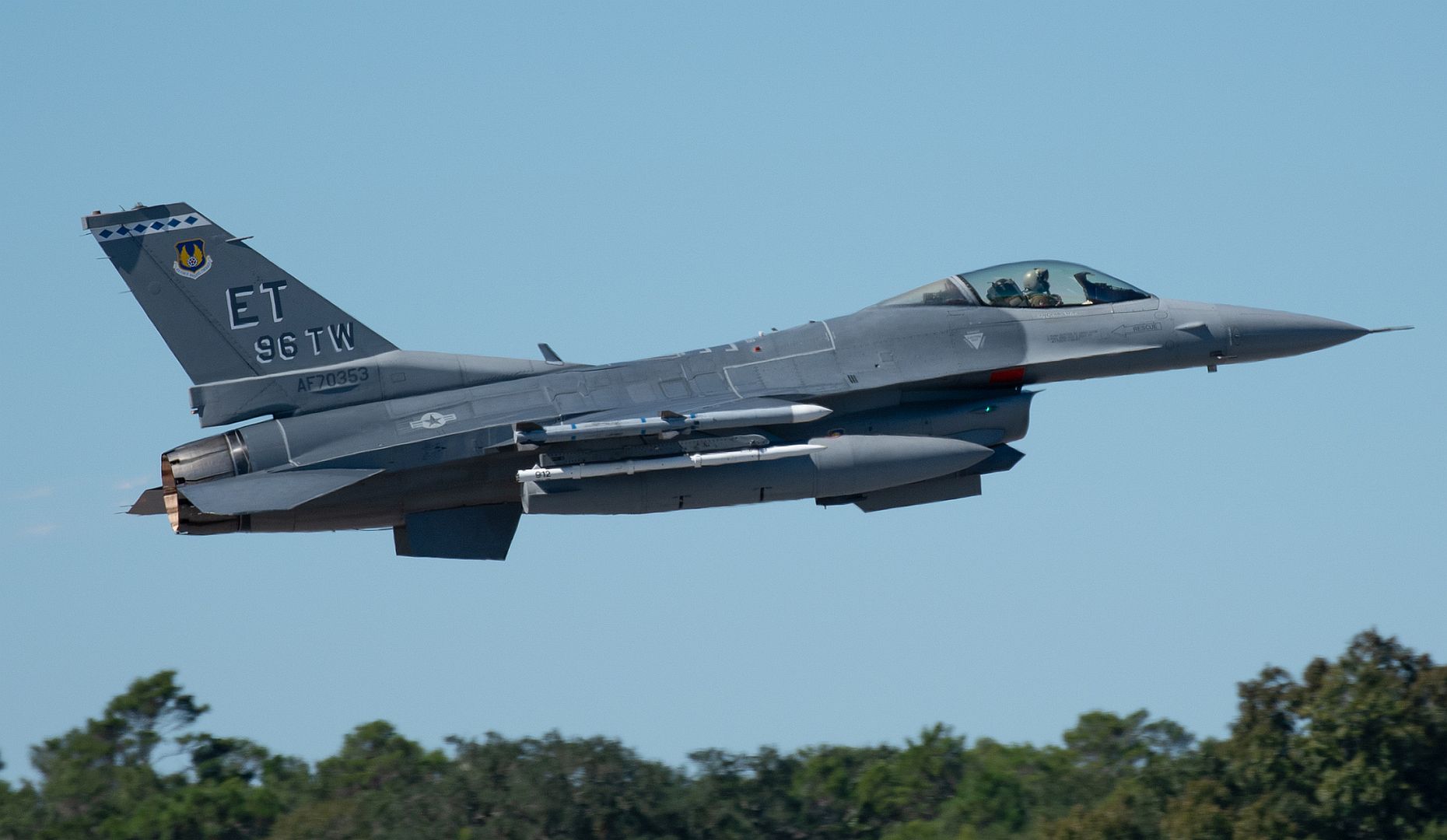
U.S. Air Force service members from the 62nd Fighter Squadron, Luke Air Force Base, Ariz., conduct flight line operations in support of the F-35 Lightning II TDY, Oct. 28, 2021, at Joint Base San Antonio-Kelly Field, Texas. The 62nd FS will be training with F-16s from the 149th Fighter Wing and the 301st Fighter Wing, along with T-38s from the 301st Fighter Wing. The multi-role capabilities of the F-35 allows them to perform missions which traditionally required numerous specialized aircraft. The complimentary air superiority capabilities of the F-35 will augment our air superiority fleet and ensure we continue to "own the skies" over future battlefields. (U.S. Air Force photo by Brian G. Rhodes)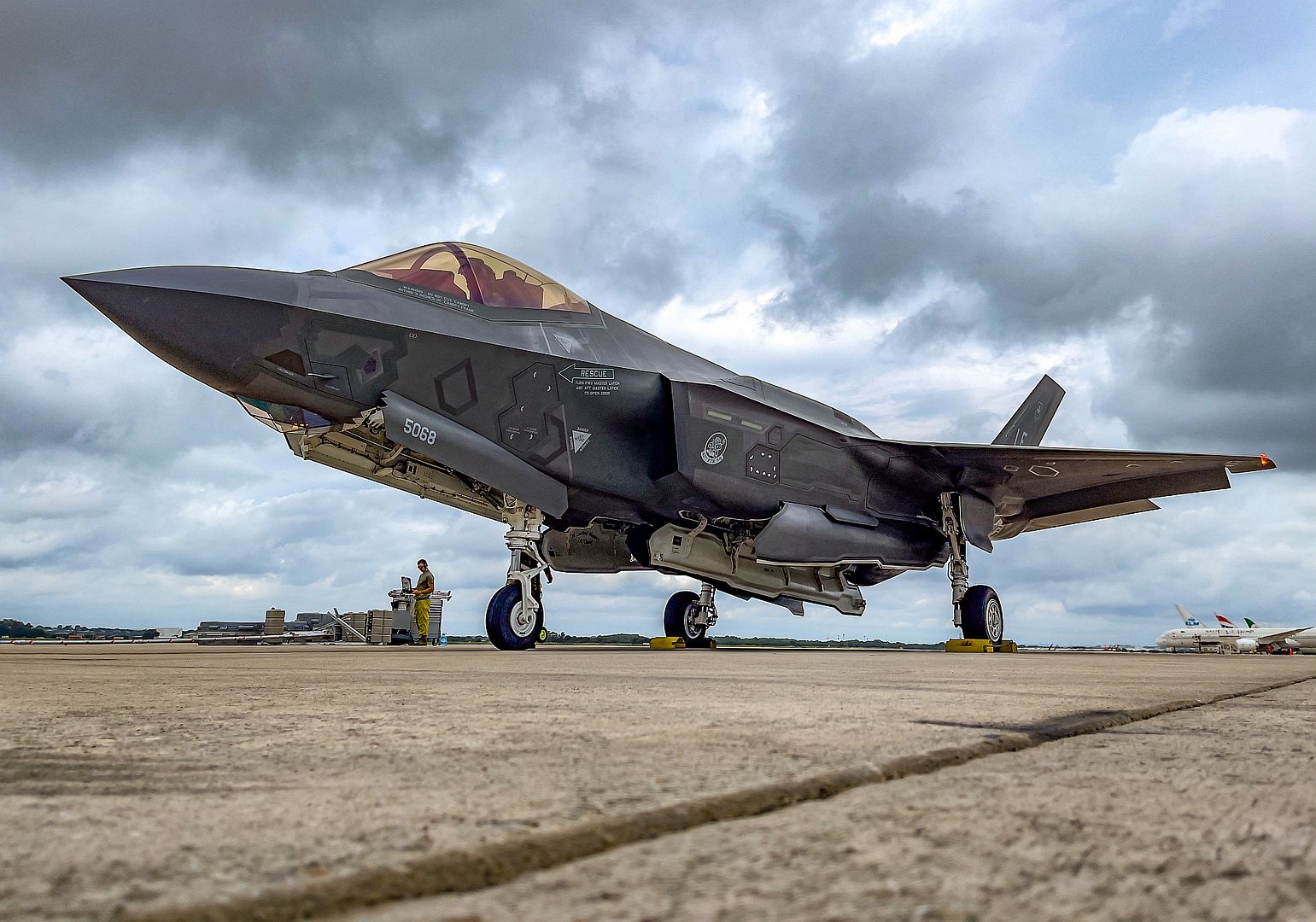
An F-22 Raptor assigned to the 411th Flight Test Squadron maneuvers over the Mojave Desert during a test mission. (Photo by Chad Bellay/Lockheed Martin)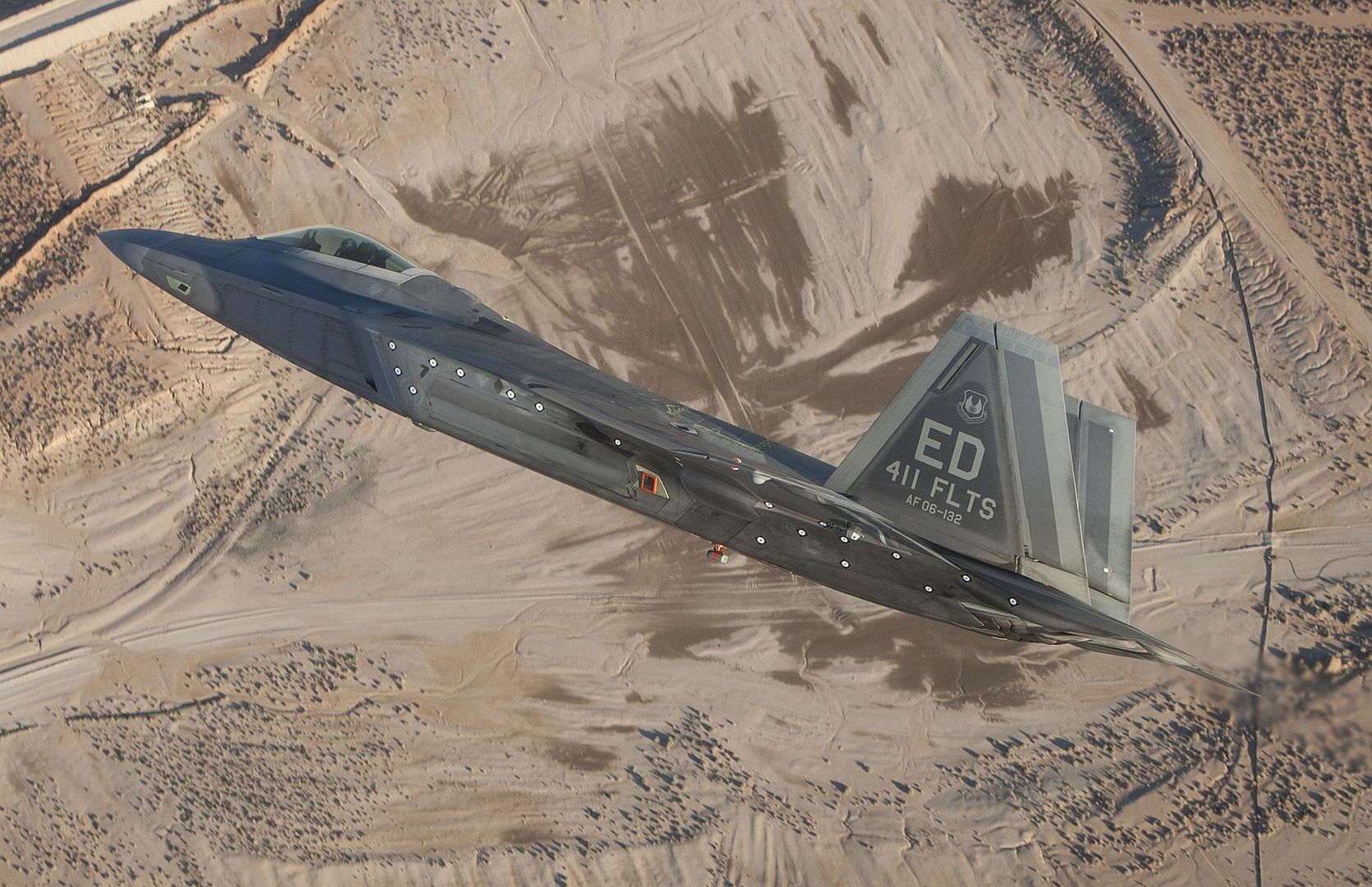
SEATTLE, Wash., Oct. 31, 2021 – Boeing [NYSE: BA] has delivered its first KC-46A tanker to the Japan Air Self-Defense Force (JASDF) marking the program’s first delivery to a customer outside the United States.
“This is an exciting and historic moment for the Japan Air Self-Defense Force and Boeing as Japan joins the United States with the world’s most advanced, proven and safe multi-mission combat aerial refueling capability,” said James Burgess, Boeing vice president and program manager, KC-46 Program. “We are looking forward to decades of partnership with our Japan customer to ensure aircraft mission effectiveness and enable the success of the JASDF.”
The Japan KC-46A is capable of refueling JASDF, U.S. Air Force, U.S. Navy, and U.S. Marine Corps aircraft. Globally, the KC-46A has already completed more than 5,000 sorties and transferred more than 50 million pounds of fuel to other aircraft through its boom and drogue systems.
“Japan’s acquisition of KC-46A tankers marks a significant milestone for both the program and U.S.-Japan cooperation in the Indo-Pacific region and plays a critical role in the security alliance between both countries,” said Will Shaffer, president of Boeing Japan. “With its ability to carry cargo and passengers, the KC-46A tanker can also support Japan’s humanitarian and disaster relief efforts.”
The versatile, multi-role tanker carries 18 military standardized pallets (463L) in cargo configuration and accommodates a mixed load of passengers and cargo. It is also equipped with robust defensive and tactical situational awareness systems that will help Japan secure and maintain its air superiority.
The U.S. Air Force and JASDF awarded Boeing a Foreign Military Sale contract for this first JASDF KC-46A in December 2017, and exercised an option for a second in December 2018. Options for the third and fourth JASDF KC-46As were exercised in October 2020.
Boeing builds KC-46A aircraft for the U.S. Air Force, Japan Air Self-Defense Force and other international customers on its 767 production line in Everett, Washington. In addition, Boeing’s Japanese partners produce 16 percent of the KC-46A airframe structure.
Boeing is currently assembling the second KC-46A for Japan and has delivered 48 KC-46As to the U.S. Air Force, beginning with the first delivery in January 2019.
-
 Main AdminA KC-135 Stratotanker assigned to the 100th Air Refueling Wing lands on the flightline at RAF Fairford, England, Nov. 1, 2021. Airmen from the 100th ARW conducted operations out of RAFF as part of an Agile Combat Employment exercise. Utilizing ACE concepts ensures that U.S. forces in Europe are better equipped to operate from locations with varying levels of capacity and support to accomplish the mission. This further ensures Airmen and aircrews are postured to deliver lethal combat power across the full spectrum of military operations. (U.S. Air Force photo by Senior Airman Eugene Oliver)
Main AdminA KC-135 Stratotanker assigned to the 100th Air Refueling Wing lands on the flightline at RAF Fairford, England, Nov. 1, 2021. Airmen from the 100th ARW conducted operations out of RAFF as part of an Agile Combat Employment exercise. Utilizing ACE concepts ensures that U.S. forces in Europe are better equipped to operate from locations with varying levels of capacity and support to accomplish the mission. This further ensures Airmen and aircrews are postured to deliver lethal combat power across the full spectrum of military operations. (U.S. Air Force photo by Senior Airman Eugene Oliver)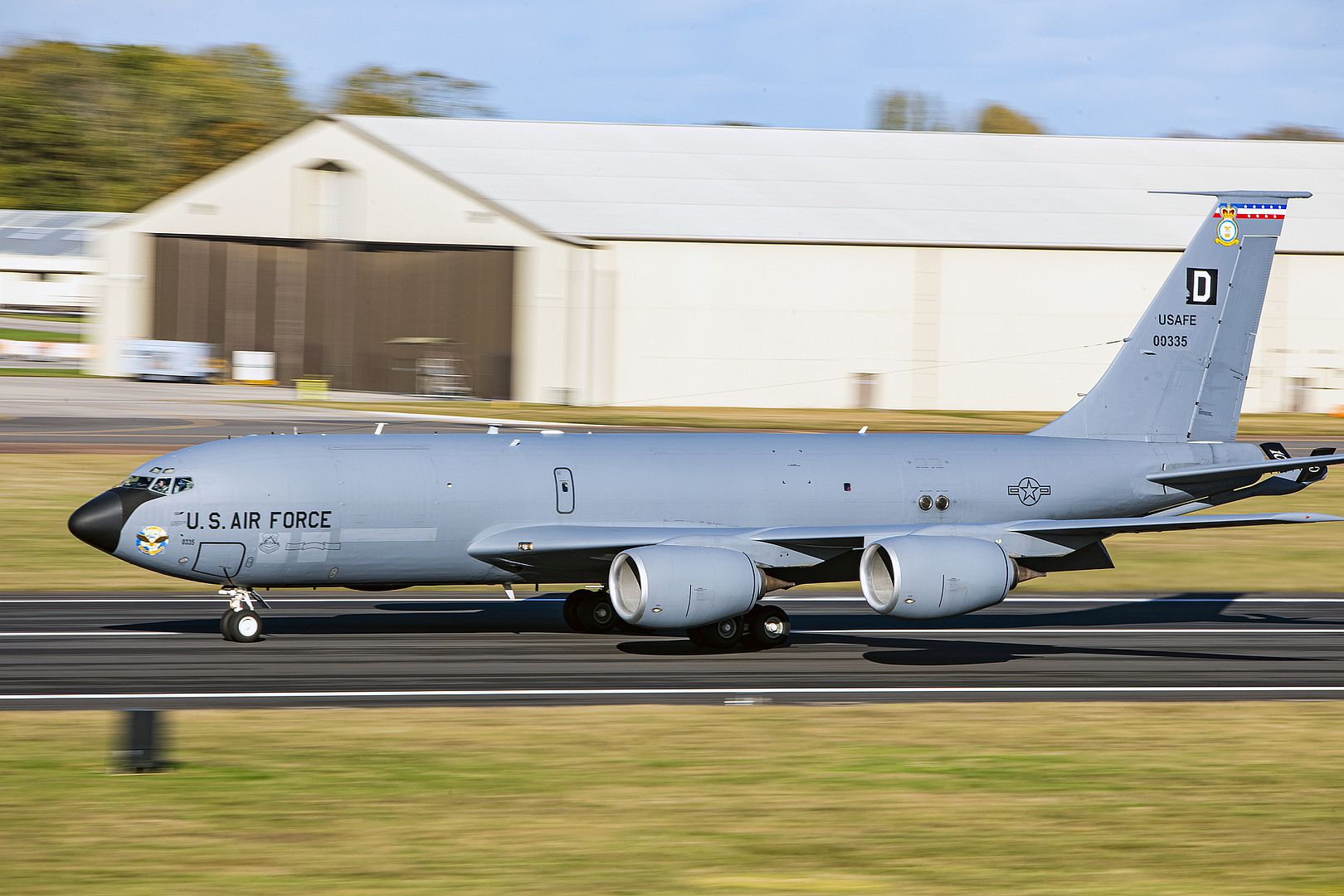
STRAIT OF HORMUZ (Nov. 2, 2021) AH-1Z Venom attached to Marine Medium Tiltrotor Squadron (VMM) 165 (Reinforced), 11th Marine Expeditionary Unit (MEU), conducts flight operations with the amphibious assault ship USS Essex (LHD 2) during strait transit operations, Nov. 2. Essex and the 11th MEU are deployed to the U.S. 5th Fleet area of operations in support of naval operations to ensure maritime stability and security in the Central Region, connecting the Mediterranean and the Pacific through the western Indian Ocean and three strategic choke points. (U.S. Navy photo by Mass Communication Specialist 2nd Class Brett McMinoway)
F-15C Eagles take off from the runway at Kadena Air Base, Japan, Oct. 27, 2021. Kadena aircrews perform bilateral training in a joint environment with regional allies and partners to deter adversaries and ensure a free-and-open Indo-Pacific region. (U.S. Air Force photos by Staff Sgt. Benjamin Raughton)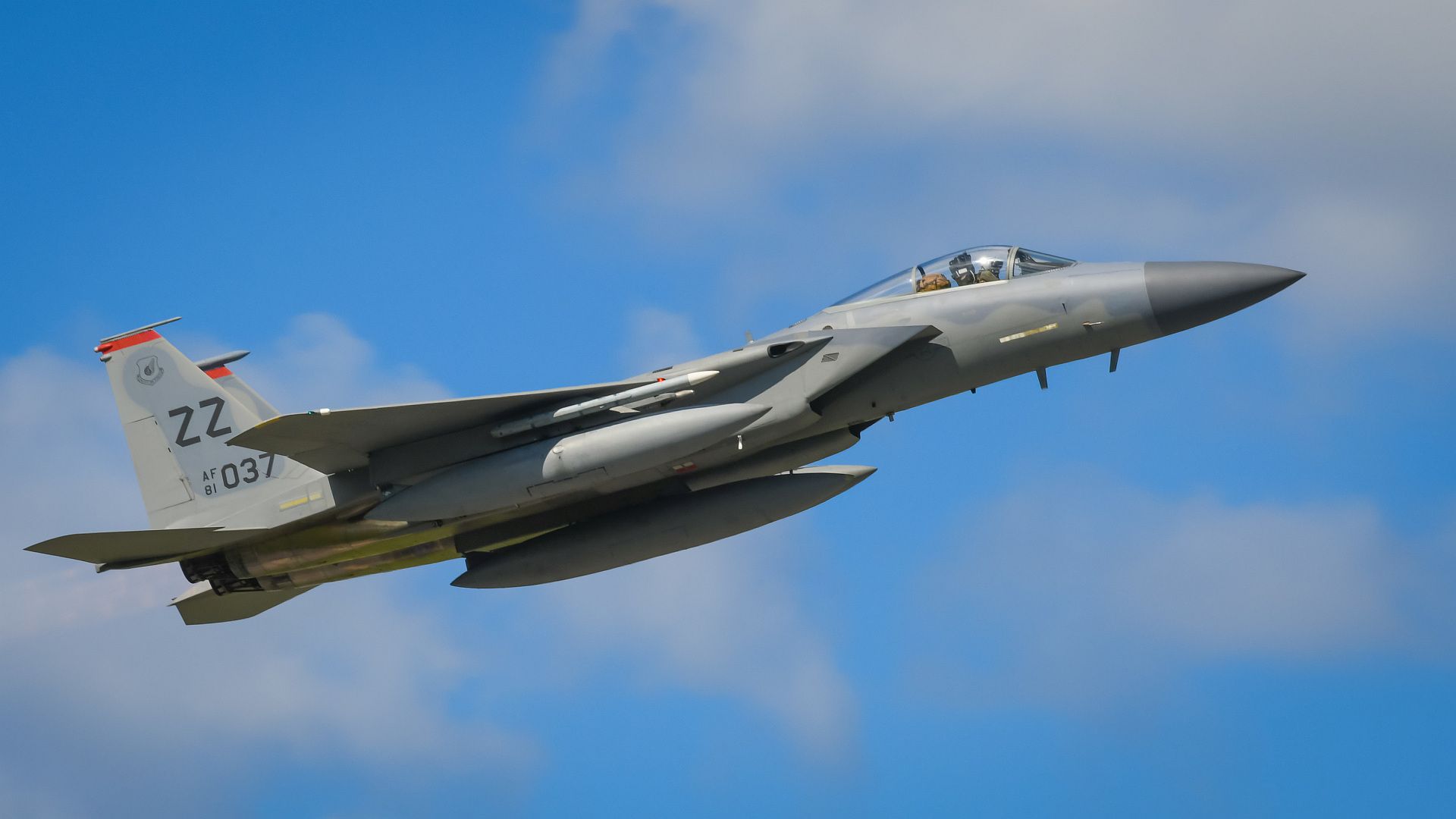
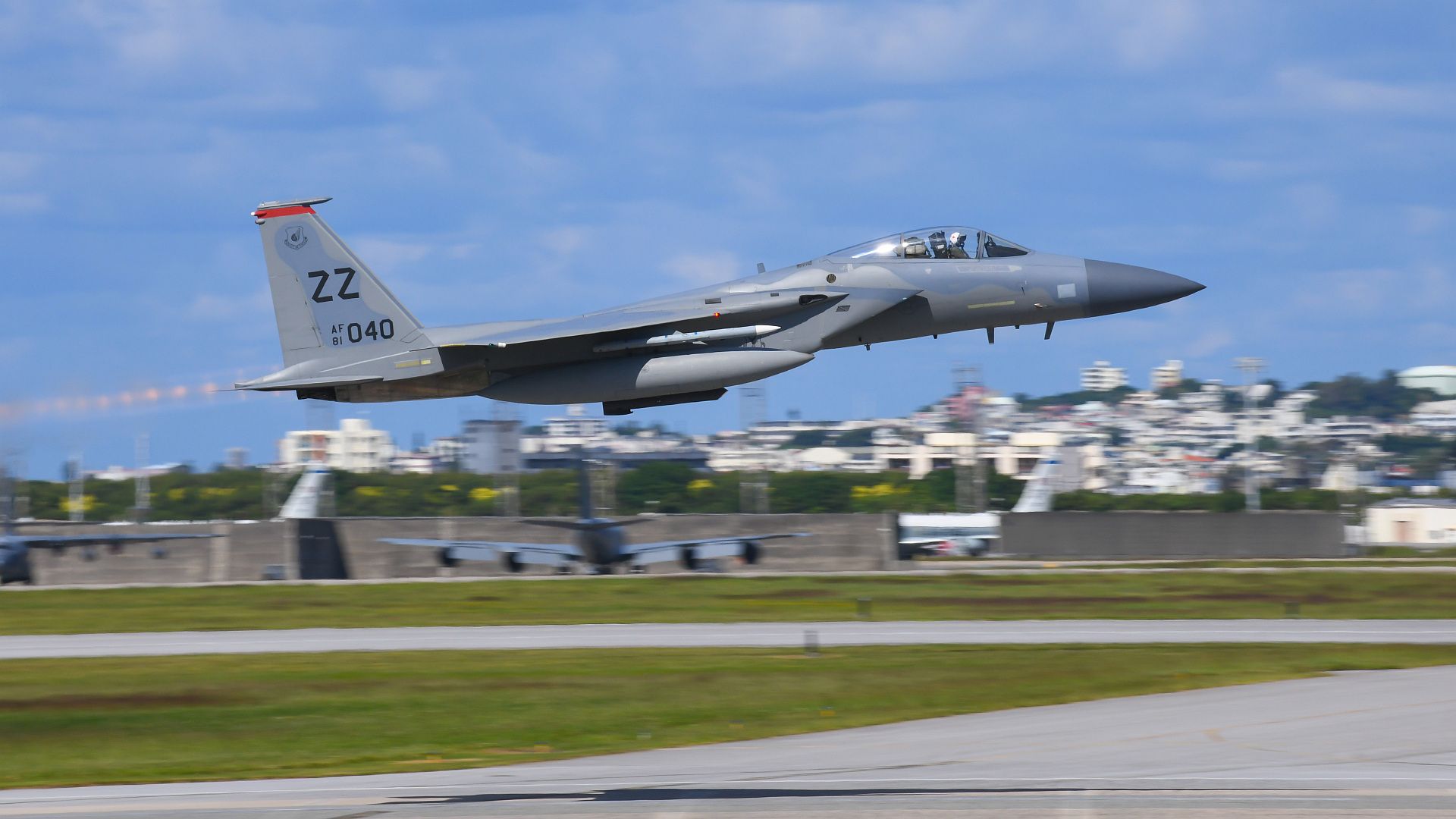
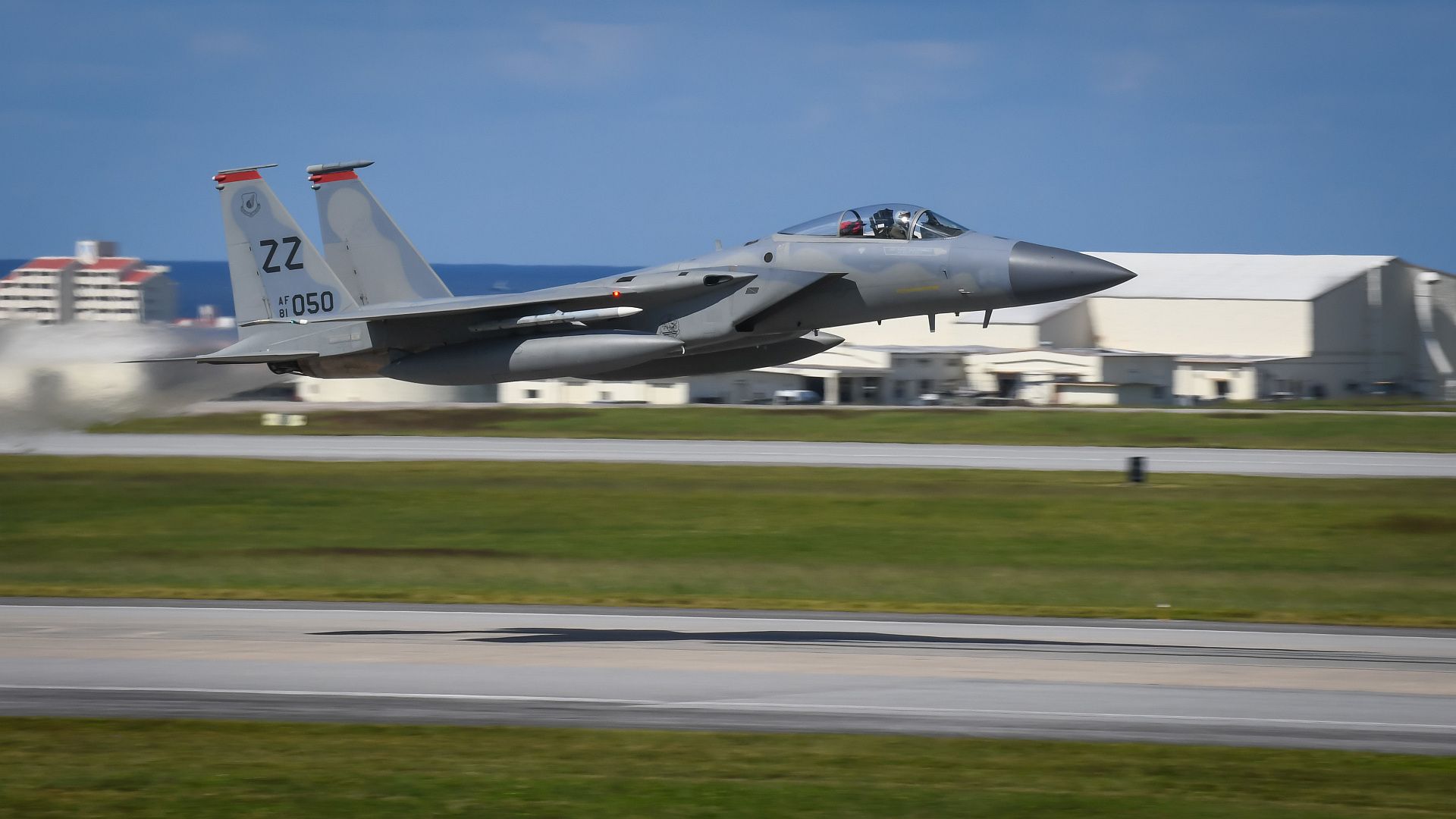
A B-1B Lancer assigned to the 9th Expeditionary Bomb Squadron prepares to land at RAF Fairford, United Kingdom, after completing a Bomber Task Force Europe mission, Oct. 27, 2021. Conducting BTF Europe mission sets provides bomber aircrew with unique training opportunities while integrating with ally and partner forces. (U.S. Air Force photo by Senior Airman Colin Hollowell)
Two crew chiefs assigned to the 9th Expeditionary Bomb Squadron stand next to a B-1B Lancer at RAF Fairford, United Kingdom, Oct. 29, 2021. Bomber Task Force Europe mission sets allow aircrew to train and operate in the European theater while integrating with NATO ally and partner forces. (U.S. Air Force photo by Senior Airman Colin Hollowell)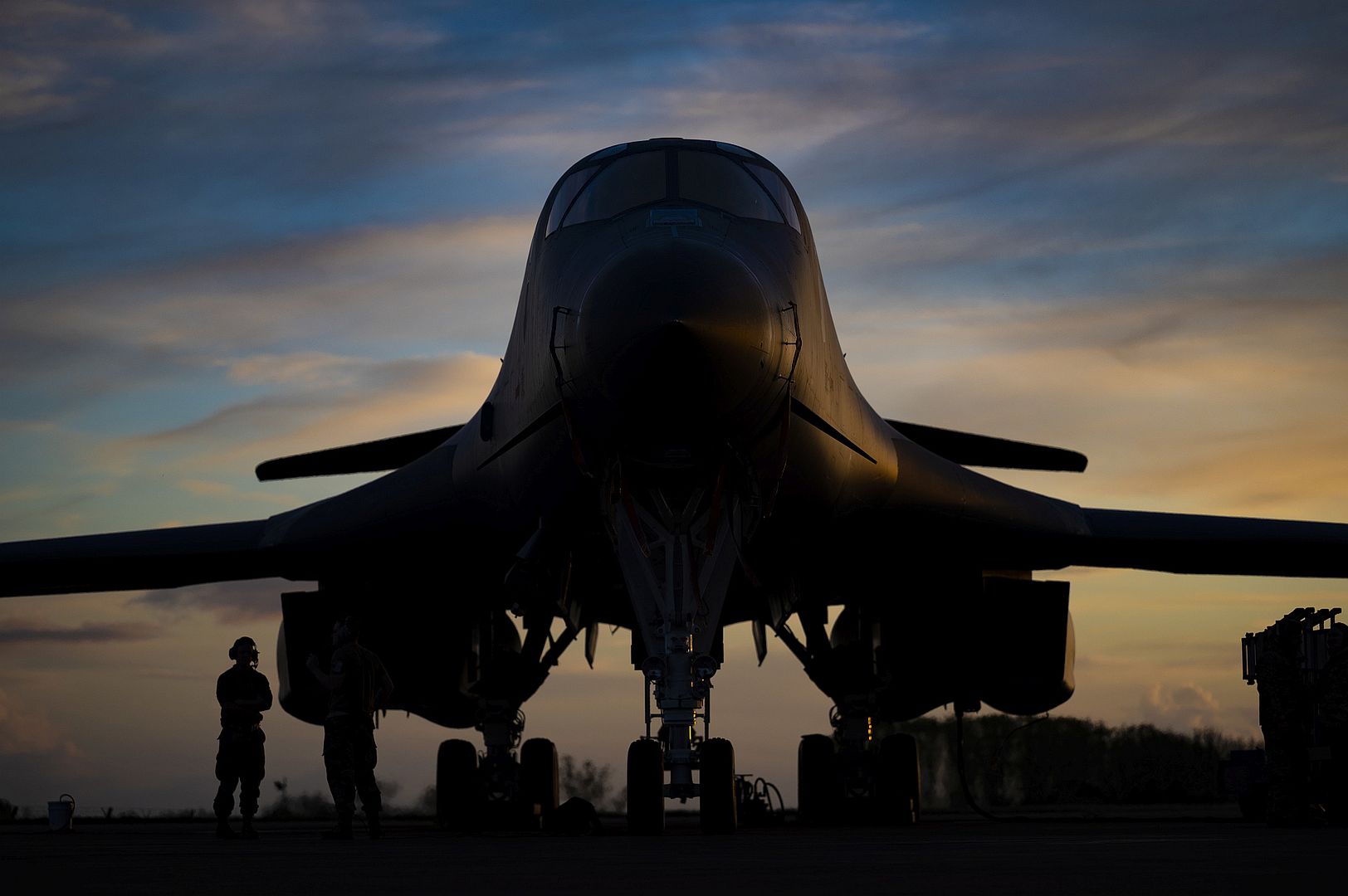
An F-15E Strike Eagle assigned to the 494th Fighter Squadron lands at Royal Air Force Lakenheath, England, Oct. 26, 2021. The 494th FS was deployed to an undisclosed location in Southwest Asia for eight-months in support of Operation Inherent Resolve. (U.S. Air Force photo by Airman 1st Class Jacob Wood)
ORLANDO, Fla., Nov. 2, 2021 – Lockheed Martin (NYSE: LMT) and Rafael Advanced Defense Systems Ltd., of Israel, signed an expanded teaming agreement, allowing the team to jointly develop, market, manufacture and support Rafael's Smart, Precise Impact and Cost-Effective (SPICE™) 250 weapon system for sale in the United States and in Poland. This agreement marks the first time SPICE 250 is available for sale to the U.S. military.
The addition of SPICE 250 builds on a 2019 teaming agreement, where Lockheed Martin and Rafael agreed to jointly market SPICE 1000 and SPICE 2000 guidance kits for U.S. sale.
SPICE is a family of stand-off, autonomous, air-to-surface weapon systems that provide affordable precision in a GPS-denied environment. The combat-proven SPICE family of products includes two guidance kits, SPICE 1000 and SPICE 2000, as well as an all-up round, known as SPICE 250.
"Lockheed Martin’s deep expertise in weapon system integration will help us adapt SPICE 250 to meet U.S. standards,” said Dave Pantano, Lockheed Martin program director. “We’re excited to leverage this experience and offer this unique, proven weapon system to aircraft operators for additional mission flexibility where it's needed most.”
In use since 2003, SPICE is combat-proven and in service with the Israeli Air Force and several other nations worldwide. It enables maximum loadout on F-16's and F-15’s, reduces pilot workload, and provides multiple strike capability against multiple target types.
"GPS is not required to operate any of the products within the SPICE family, allowing for operations in a variety of locations and adverse environments,” said Alon Shlomi, Rafael Air to Surface Directorate vice president. “By expanding our teaming agreement with Lockheed Martin, we’re able to offer the entire product portfolio to the U.S. military – providing warfighters with the opportunity to enhance mission flexibility.”
COPENHAGEN, Denmark, Nov. 2, 2021 /PRNewswire/ -- Boeing [NYSE: BA] and A.P. Moller - Maersk (Maersk) today announced the global provider of end-to-end container logistics has placed an order for two 777 Freighters. The freighters will be operated by Star Air, Maersk's in-house aircraft operator and is the company's first 777 order. Star Air currently operates an all-Boeing 767 Freighter fleet.
"As a global integrator of container logistics, Maersk is improving the ability to provide one-stop shop and end-to-end logistics capabilities to our customers. This year, we have strengthened our integrated logistics offering through e-commerce logistics acquisitions, tech investments, expanding our warehouse footprint and as a natural next step, we are now ramping up our air freight capacity, creating a broader network to cater even better for the needs of customers," said Vincent Clerc, executive vice president and CEO of Ocean & Logistics, A.P. Moller – Maersk.
The 777 Freighter is the world's largest, longest range and most capable twin-engine freighter. The airplane offers 17 percent better fuel efficiency and reduced CO2 emissions compared to legacy airplanes. With a range of 9,200 kilometers, the 777 Freighter can carry a maximum revenue payload of 102,000 kilograms, allowing Star Air to make fewer stops and reduce landing fees on long-haul routes.
"We are delighted to welcome Maersk's Star Air to the Boeing family of 777 operators and look forward to many years of continued partnership as it grows its air cargo division," said Ihssane Mounir, Boeing's senior vice president of Commercial Sales and Marketing. "The market leading efficiency and incredible range of the 777 Freighter will provide Maersk flexibility to profitably operate the airplane across its large air freight network."
The 777 Freighter is Boeing's top-selling freighter of all time. Customers from around the world have ordered more than 300 777 Freighters since the program began in 2005. As the air cargo market continues to strengthen throughout the world, freight carriers turn to Boeing for its complete family of new and converted freighters. Boeing airplanes provide more than 90% of the worldwide dedicated freighter capacity.
Maersk is an integrated container logistics company working to connect and simplify its customers' supply chains. As the global leader in shipping services, the company operates in 130 countries and employs approximately 80,000 people.
As a leading global aerospace company, Boeing develops, manufactures and services commercial airplanes, defense products and space systems for customers in more than 150 countries. As a top U.S. exporter, the company leverages the talents of a global supplier base to advance economic opportunity, sustainability and community impact. Boeing's diverse team is committed to innovating for the future and living the company's core values of safety, quality and integrity. Learn more at www.boeing.com.
-
 Main AdminU.S. Air Force F-22 Raptors assigned to the 90th Fighter Squadron, Joint Base Elmendorf-Richardson, Alaska, taxi down the flight line after landing at Tyndall Air Force Base, Florida, Nov. 1, 2021, for Checkered Flag 22-1. Checkered Flag is a large-force aerial exercise held at Tyndall which fosters readiness and interoperability through the incorporation of fourth and fifth-generation aircraft during air-to-air combat training. The 22-1 iteration of the exercise was held November 8-19, 2021. (U.S. Air Force photo by Airman 1st Class Tiffany Price)
Main AdminU.S. Air Force F-22 Raptors assigned to the 90th Fighter Squadron, Joint Base Elmendorf-Richardson, Alaska, taxi down the flight line after landing at Tyndall Air Force Base, Florida, Nov. 1, 2021, for Checkered Flag 22-1. Checkered Flag is a large-force aerial exercise held at Tyndall which fosters readiness and interoperability through the incorporation of fourth and fifth-generation aircraft during air-to-air combat training. The 22-1 iteration of the exercise was held November 8-19, 2021. (U.S. Air Force photo by Airman 1st Class Tiffany Price)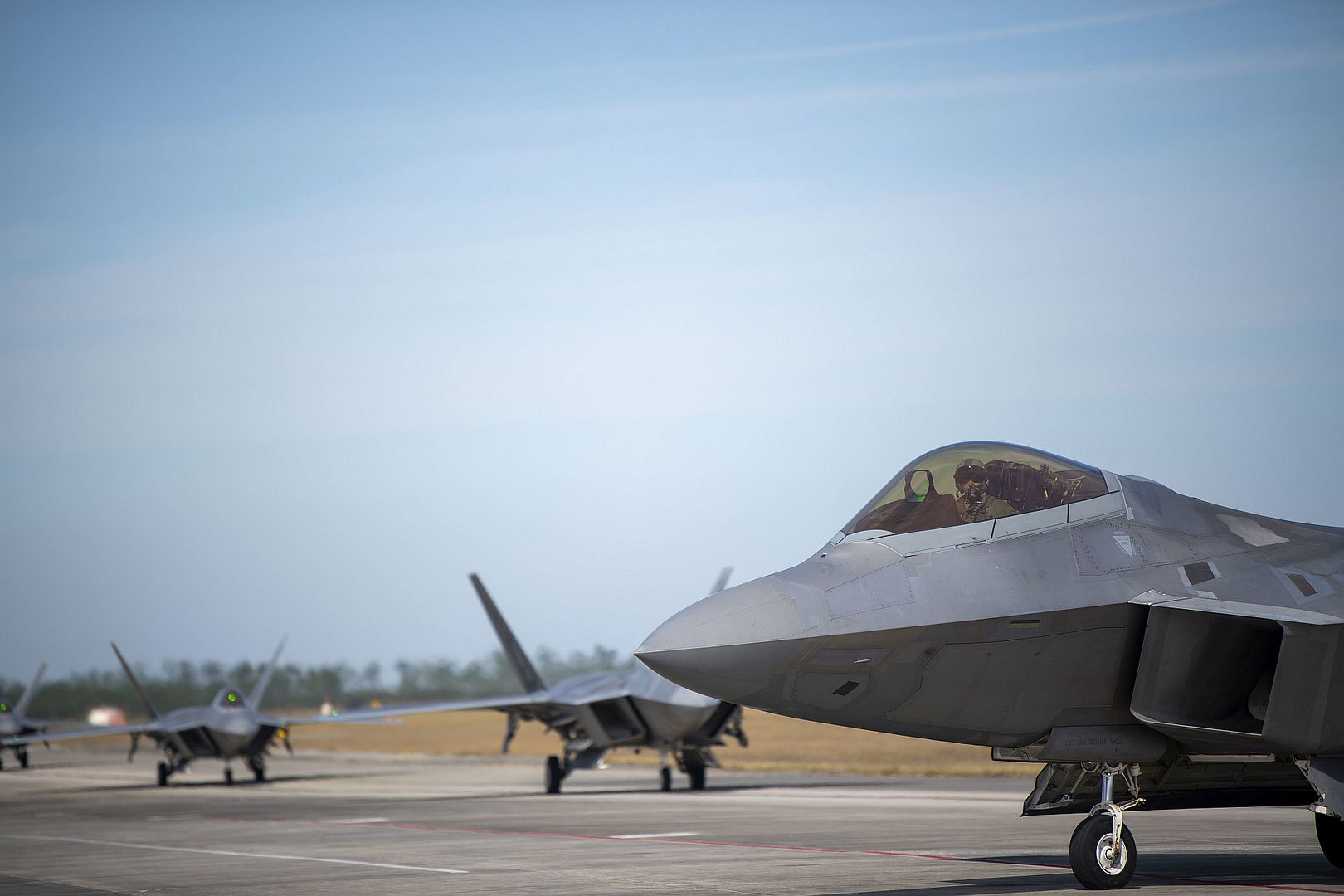
A U.S. Air Force F-15E Strike Eagle assigned to the 336th Fighter Squadron, 4th Fighter Wing, Seymour Johnson Air Force Base, North Carolina, taxis on the flight line after their arrival in Bulgaria during operation Castle Forge at Graf Ignatievo Air Force Base, Bulgaria, Nov. 1, 2021. Castle Forge is a U.S. Air Forces Europe-Air Forces Africa-led, joint, multi-national operation. It provides a dynamic, partnership-focused training environment that raises the U.S. commitment to collective defense in the Black Sea region while enhancing interoperability alongside NATO allies. (U.S. Air Force photo by Senior Airman Jessica Blair)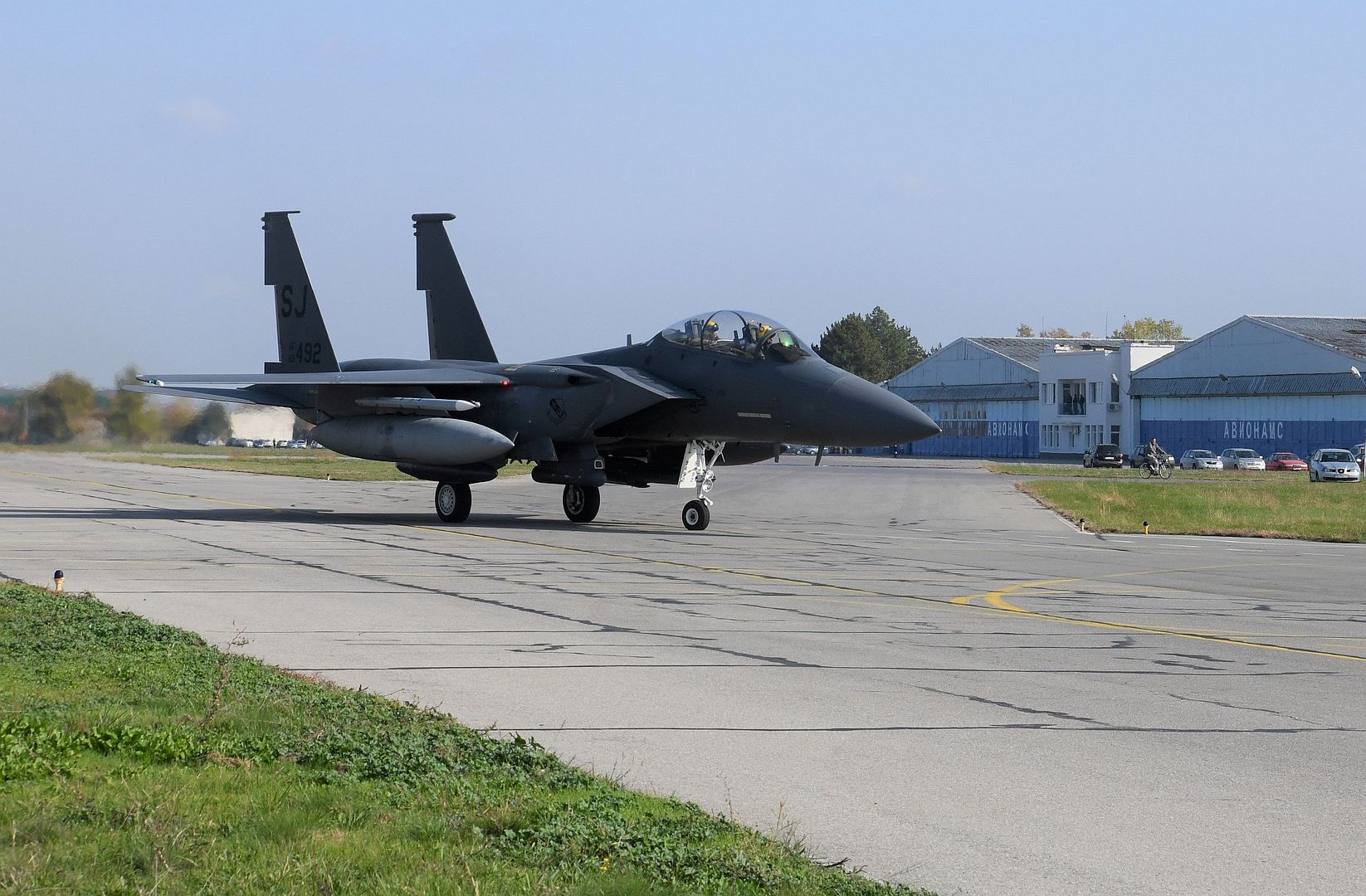
Maintainers assigned to the 175th Maintenance Group generated 16 A-10C Thunderbolt II aircraft assigned to the 175th Wing, Maryland Air National Guard, prior to an “elephant walk” at Warfield Air National Guard Base at Martin State Airport, Middle River, Md., November 3, 2021. The mission generation exercise highlighted the agility and rapid mobility of the MDANG's airpower, demonstrating their ability to launch combat-ready A-10s that are deployable for no-notice contingency operations. The 175th Wing trains to maintain lethal and combat-ready forces, prepared to deter or defeat any adversary who threatens U.S. or NATO interests. (U.S. Air National Guard photo by Staff Sgt. Sarah M. McClanahan)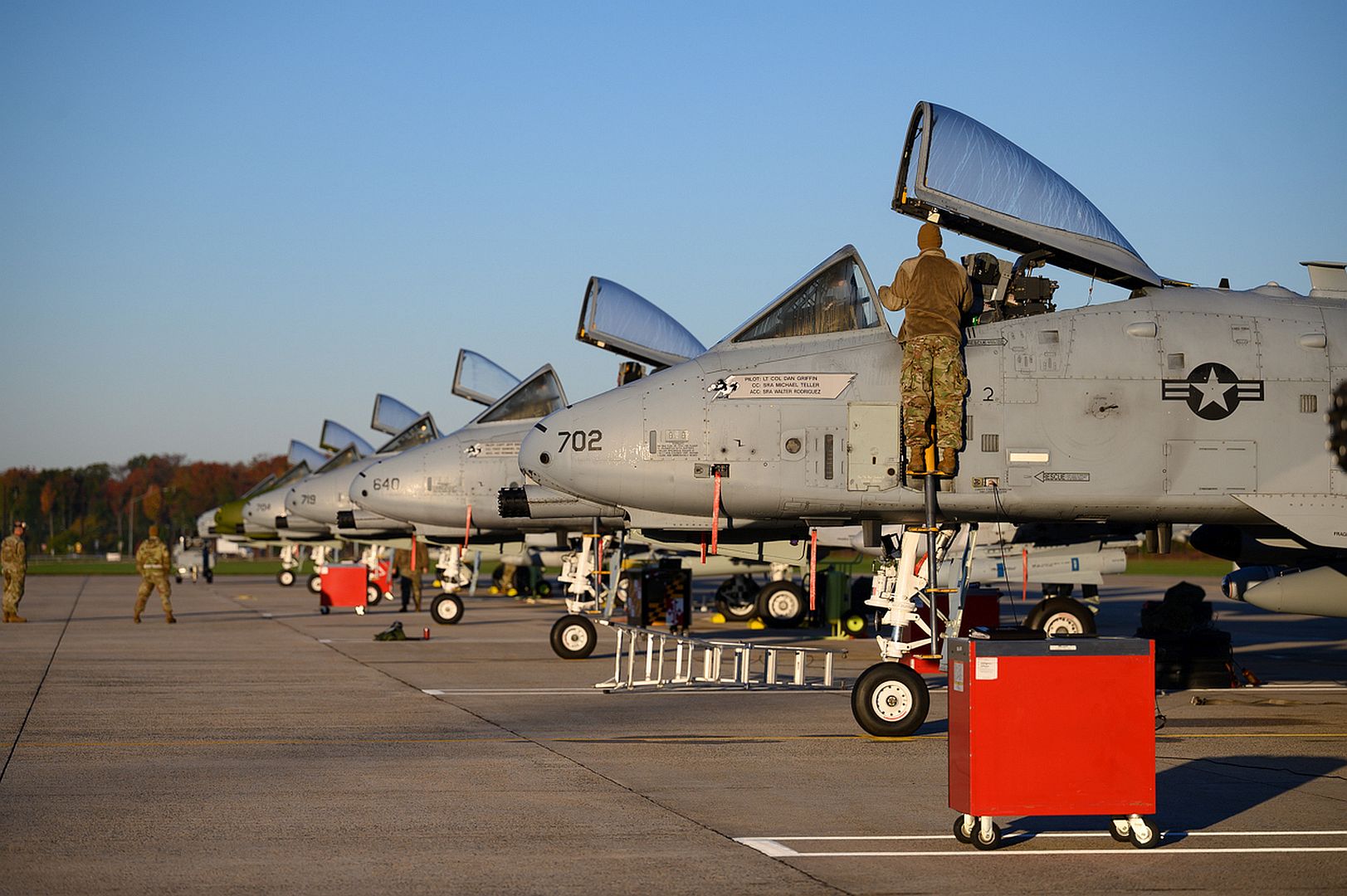
03.11.2021
In the Saratov region, on the basis of a heavy bomber aviation regiment, scheduled flights of the crews of the Tu-160 and Tu-95MS strategic missile carriers took place..jpg?width=1920&height=1080&fit=bounds)
The main task of the flight shift was to maintain the training of the flight crew, as well as flights in the dark..jpg?width=1920&height=1080&fit=bounds)
The crews worked out take-offs and landings, flights along the route and in a given zone, as well as elements of interaction with the flight management team in limited visibility and at night..jpg?width=1920&height=1080&fit=bounds)
On the ground, the engineering and technical staff worked out the standards for servicing and preparing aircraft for re-departures at set time intervals..jpg?width=1920&height=1080&fit=bounds)
During one flight shift, eight units of aviation equipment and more than 20 units of automotive and special equipment of the airfield support battalion were involved.
(Photos courtesy of the Ministry of Defence of the Russian Federation).jpg?width=1920&height=1080&fit=bounds)
SEATTLE, Nov. 3, 2021 — Air Transport Services Group, Inc. (Nasdaq: ATSG), the world’s largest lessor of 767-300 converted freighters, has contracted with Boeing [NYSE: BA] for the conversion of four aircraft to 767-300 Boeing Converted Freighters (BCF).
“Our continued confidence in the 767-300 platform, now coupled with the services and support of the OEM, reinforces our commitment to deliver best-in-class reliable services to our customers,” said Mike Berger, chief commercial officer of ATSG. “We’re proud to partner with Boeing as we expand our fleet to meet growing demand and look forward to future growth together.”
The 767-300BCF now has more than 100 orders and commitments from customers around the globe, providing widebody converted freighter capability to meet growing market demand, and building on a record year for customer orders of Boeing’s family of freighters.
“We are honored that ATSG has decided to make the 767-300BCF an integral part of their fleet expansion strategy, supporting customers looking to capitalize on strong e-commerce demand,” said Jens Steinhagen, director of Boeing Converted Freighters. “As the OEM, Boeing has the original design data, robust supply chains, and dependable delivery schedules that benefit BCF customers such as ATSG. With that OEM advantage, we stand ready to meet ATSG’s needs by bringing forward market-leading 767-300BCFs into its fleet.”
ATSG is a global leader in cargo leasing, operating a fleet of 106 Boeing aircraft, including more than ninety 767 converted freighters.
Boeing has more than 40 years of successful experience in passenger-to-freighter conversions, relying on original design data and a deep understanding of the needs of the air cargo industry to deliver a superior, integrated product, including fully integrated manuals and world-class technical support. Boeing Converted Freighters also come with the advantage of being associated with the industry’s largest portfolio of services, support and solutions. Learn more about the 767-300BCF and the entire Boeing freighter family here.
About Boeing
As a leading global aerospace company, Boeing develops, manufactures and services commercial airplanes, defense products and space systems for customers in more than 150 countries. As a top U.S. exporter, the company leverages the talents of a global supplier base to advance economic opportunity, sustainability and community impact. Boeing’s diverse team is committed to innovating for the future and living the company’s core values of safety, quality and integrity. Learn more at www.boeing.com.
About Air Transport Services Group, Inc. (ATSG)
ATSG is a leading provider of aircraft leasing and cargo and passenger air transportation and related services to domestic and foreign air carriers and other companies that outsource their cargo and passenger airlift requirements. ATSG, through its leasing and airline subsidiaries, is the world's largest owner and operator of converted Boeing 767 freighter aircraft. For more information, please see www.atsginc.com.
SAN DIEGO – 02 November 2021 – General Atomics Aeronautical Systems, Inc. (GA-ASI) received a $17.8 million award from the Air Force Research Laboratory (AFRL) to design and develop an unmanned Off-Board Sensing Station (OBSS) aircraft. AFRL is developing an open architecture concept Autonomous Collaborative Platform (ACP) to achieve its goals of rapid time-to-market and low acquisition cost, while extending and enhancing the sensing volume of manned platforms.
“We’re excited to continue working on this project with AFRL,” said Chris Seat, senior vice president of Special Programs for GA-ASI. “Our experience in developing and delivering the most cost-effective and forward-looking UAS solutions puts GA-ASI in a great position to deliver the right ACP to meet our customer’s requirements.”
The award covers the next 12 months as the base effort, and if the option is exercised, GA-ASI will spend the following 15 months manufacturing and flight demonstrating the aircraft with the award potentially growing to a total of $49 million.
About GA-ASI
General Atomics-Aeronautical Systems, Inc. (GA-ASI), an affiliate of General Atomics, is a leading designer and manufacturer of proven, reliable remotely piloted aircraft (RPA) systems, radars, and electro-optic and related mission systems, including the Predator® RPA series and the Lynx® Multi-mode Radar. With more than seven million flight hours, GA-ASI provides long-endurance, mission-capable aircraft with integrated sensor and data link systems required to deliver persistent flight that enables situational awareness and rapid strike. The company also produces a variety of ground control stations and sensor control/image analysis software, offers pilot training and support services, and develops meta-material antennas. For more information, visit www.ga-asi.com.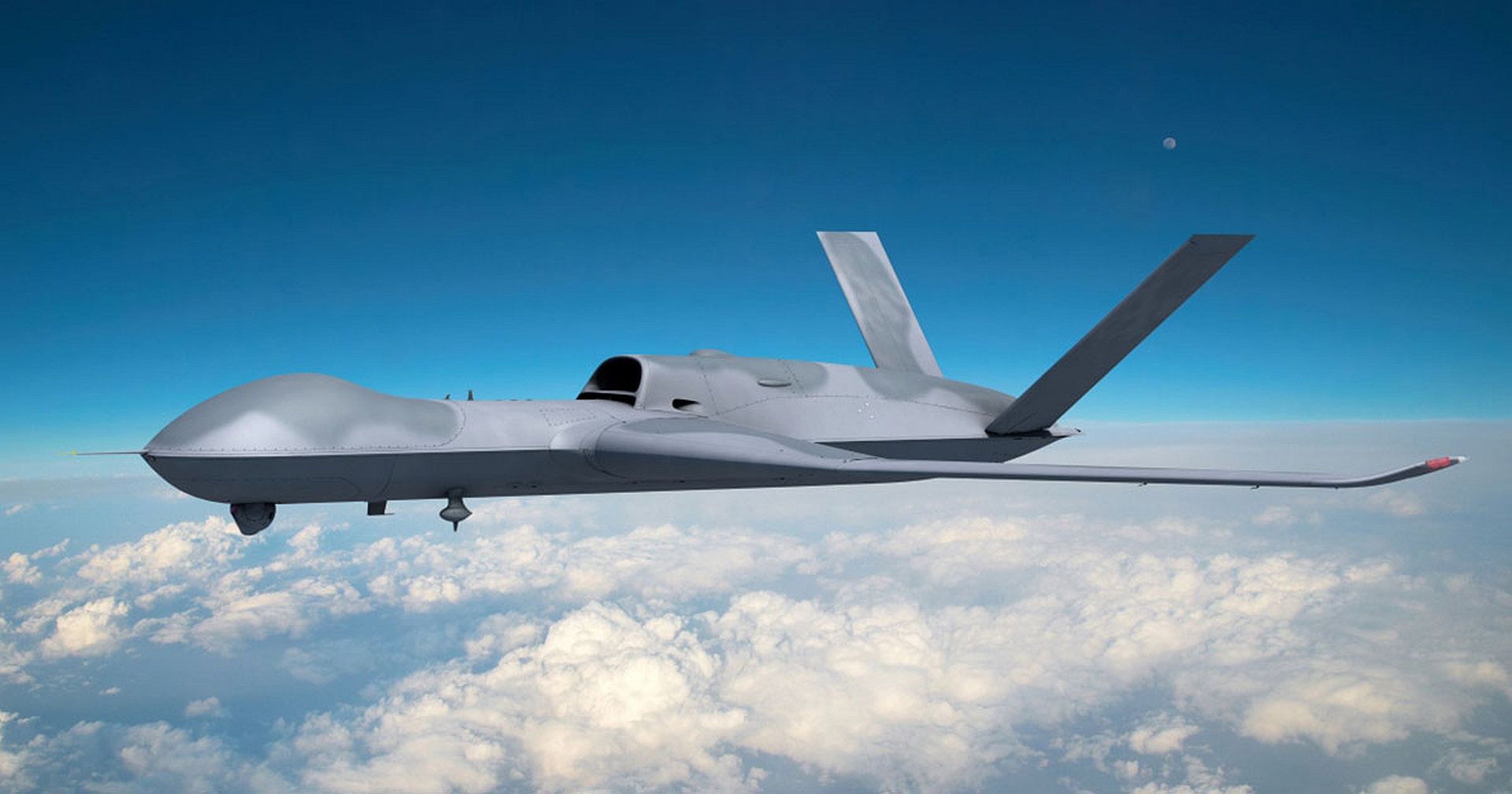
11.03.21
Today 14 F-16's took off from RNLAF Volkel for a ready-making exercise. During this exercise a maximum number of F-16 fighter jets were deployed to fly a training mission. Among other things, operating in larger formations was practiced.
Volkel Airbase is home to the last operational F-16 squadron of the Royal Netherlands Air Force . The men and women at Volkel are responsible for the use of the aircraft until 2024 when the F-35 takes over the duties of the F-16.
(Photo courtesy of the RNLAF}
Post a reply
- Go to Previous topic
- Go to Next topic
- Go to Welcome
- Go to Introduce Yourself
- Go to General Discussion
- Go to Screenshots, Images and Videos
- Go to Off topic
- Go to Works in Progress
- Go to Skinning Tips / Tutorials
- Go to Skin Requests
- Go to IJAAF Library
- Go to Luftwaffe Library
- Go to RAF Library
- Go to USAAF / USN Library
- Go to Misc Library
- Go to The Ops Room
- Go to Made in Germany
- Go to Campaigns and Missions
- Go to Works in Progress
- Go to Juri's Air-Raid Shelter
- Go to Campaigns and Missions
- Go to Works in Progress
- Go to Skinpacks
- Go to External Projects Discussion
- Go to Books & Resources
